Plant Descriptions – Vachellia farnesiana – Vittaria elongata
Vachellia farnesiana
Vallisneria australis
Vallisneria nana
Vappodes phalaenopsis
Velleia paradoxa
Velleia spathulata
Verbena gaudichaudii
Veronica grosseserrata
Veronica plebeia
Verticordia auriculata
Verticordia brownii
Verticordia grandis
Verticordia mitchelliana
Verticordia nitens
Verticordia plumosa
Vesselowskya rubifolia
Vesselowskya venusta
Vigna luteola
Vigna marina
Vigna vexillata
Viminaria juncea
Viola banksii
Viola betonicifolia
Viola caleyana
Viola hederacea
Viola silicestris
Viscum articulatum
Vitex melicopea
Vitex rotundifolia
Vitex trifolia
Vittadinia hispidula
Vittaria elongata
Vachellia farnesiana
Classification:
Class: Equisetopsida
Subclass: Magnoliidae
Order: Fabales
Family: Fabaceae
Subfamily: Mimosoideae
Tribe: Acacieae
Genus: Is named in honour of the Rev. George Harvey Vachell; 1798–1839, who was an English chaplain to the British East India Company in Macao from 1825–1836 and a devoted plant collector in China and Asia.
The debate arose out of research over the past few decades which established that the two main genre of Acacia (the African and Australian groups) were distinct and needed to be separated into different genera. The debate centred on the issue of which group of plants would retain the name Acacia. The normal practice would have given support for the African group as the species Acacia scorpioides (syn. A. nilotica) was the type species which takes precedent.
From Akakia, which is Ancient Greek for to have a sharp point. It refers to the first species named by Dioscorides a Greek Botanist for an Egyptian plant Acacia arabica which has very sharply pointed spines.
However, there was a strong case for Australia to retain the name Acacia as the vast majority of species occurred in Australia and that reclassification of those species would incur considerable disruption and huge expenses.
The decision of the 2005 Botanical Conference and reconfirmed at the 2011 World Botanical Conference held in Melbourne, was that the name Acacia should be retained for the Australian species and that the (mainly) African species should be reclassified into the genus Vachellia. This involved specifying a new haplo type species for Acacia which is now the Australian plant Acacia penninervis. Australia contributed largely to the cost of reassigning the African species.
Specie: From Farnesiana, which is Latinized from the Farnese Palace in Rome of which the original plants came from America and were grown for the perfume trade.
Debate still occurs whether this species is Native to Australia or not. I have included it here to spark debate and conversation. (According to Pedley (1980) it was collected in inland Queensland in 1845, on Coopers Creek in 1860 and must therefore have been introduced into Australia prior to or soon after European settlement (see Bean 2007 for further details). The species is widely distributed within Australia (Kodela and Tindale 2001). Vachellia farnesiana has a scattered distribution over much of the Pilbara where it grows in alluvial soils, especially clays and loams, particularly those with high calcium carbonate levels, on some open floodplains and along watercourses. For it to have been introduced one must look at its wide distribution just after it was discovered. Could it have exploited the continent so quickly remains a question of its authenticity to be called a native. It is known that the Chinese had travelled to northern Australia and the Aborigines are of Burmese Tibetan origin so could they may have bought it here? The Chinese were also known to have traded between China and northern ports with the Australian Aborigines prior to white settlement so was it traded or broke quarantine? Or was it here to start with or from other nautical travellers?
Sub specie:
Common Name: Mimosa Bush or Farness Wattle or Prickly Acacia or Perfumed Acacia.
Distribution:
Vachellia farnesiana is mainly found in the northern two thirds and eastern third of mainland Australia.
It is thought to have originated from Mexico and Southern America along with it having a pantropical distribution.
https://avh.ala.org.au/occurrences/search?taxa=Vachellia+farnesiana#tab_mapView
Habitat Aspect Climate:
Vachellia farnesiana prefers dappled shade to full sun. It grows in dry sclerophyll forests, moist Eucalyptus forests, open woodlands, savannah woodlands and on plains or hillsides. The altitude ranges from 1 meter ASL to 700 meters ASL.
The temperatures range from minus 2 degrees in July to 42 degrees in January.
The rainfall ranges from lows of 400mm to 1600mm average per annum.
Soil Requirements:
Vachellia farnesiana prefers most types of sandy loams to heavy clays, light silts to heavy silts or podsolic clays. The soils are derived from most decomposed parent rock material. The soils pH ranges from 4.5pH to 7pH. It does not tolerate water logged soils. Non saline soils to very saline soils are tolerated.
Height & Spread:
Wild Plants:1.5m to 7m by 2m to 5m.
Characteristics:
Vachellia farnesiana grows as a large shrub or small spreading tree with thorns. The smooth, grey-brown glabrous bark is finely fissured. The slightly zig zag branchlets are covered in prominent paler lenticels and are often sparsely to moderately covered in soft white pulverulent caducous hairs.
The opposite, triangular leaves of Vachellia farnesiana measure 8mm to 20mm in length by 5mm to 16mm in width. The 2 stipules are strongly spinescens and measure 5mm to 25mm in length. The petioles measure 0.2mm to 2mm in length. The rachis is terete with a flattened upper surface and is covered in off white puberulent hairs. The rachis measures 0mm to 55mm in length. The interjugary glands are absent ion this species.
The1 to 7 pairs of pinnae measure 10mm to 40mm in length and have 20 to 46 pinnules. The narrow oblong pinnules measure 4mm to 10mm in length by 2mm to 5mm in width. The bases are broad cuneate while the apexes are obtuse. The thick concolourous laminas are blue-green, dull and glabrous to sparsely covered in white puberulent, caducous hairs on the apical section upper lamina while the lower lamina is glabrous. The leaf margins are entire. The mid vein and main laterals are slightly prominent on the lower laminas and are not visible from the upper laminas.
The inflorescences of Vachellia farnesiana are 1 to 3 globose heads born from the leaf axils. The peduncles are sparsely to moderately covered in white pulverulent hairs and measure 3mm to 30mm in length. There are 33 to 95 individual, bright yellow to orange-yellow flowers in a head.
The individual flowers are 5 merous. The cupuliform calyxes are glabrous. The flowers appear throughout the year when ever favourable conditions prevail with a peak from June to October.
Vachellia farnesiana fruits are thick terete, turgid, fusiform pods. The pods measure 15mm to 85mm in length by 8mm to 16mm in diameter. The glabrous green pods turn deep rusty-brown to deep chocolate when ripe. The transverse or oblique seeds are separated by fawnish-brown pith. The flattened, ovate tan to tan-brown seeds measure 1.4mm to 1.6mm in length by 1mm to 1.1mm in width and 0.8mm to 0.9mm in thickness.
Wildlife:
Vachellia farnesiana’s is attractive to the local colony bee Tetragonula carbonaria when in flower.
The seeds are often eaten by unknown weevil larvae.
Cultivation:
Vachellia farnesiana is a beautiful medium, open shrub which is ideally suited for growing in medium rockeries in dry, arid landscapes. In cultivation it has an open habit growing from 4 meters to 6 meters in height by 4 meters to 5 meters in diameter often with multiple stems or branches when grown in the open.
If it is given an adequate supply of water and a little native fertilizer on a regular basis the plants will respond with very good flowering and fruit over a long period. The flowers can be further enhanced by the carefully removal of any seed pods that begin to form.
Vachellia farnesiana would make a good contribution to a dry rocky terrain rock garden. Here it can be used as the main feature plant or scattered throughout a boulder landscape. When you use them in areas that are strewn with large boulders do not over crowd the scene as the boulders are a formidable part of the scene. Vachellia farnesiana is well suited to such conditions so be aware it may become invasive not kept in check. For this reason it is probably more suited to very dry regions of Australia or areas with good reliable rainfall over 2000 mm a year. Try to have a tree close to where you regularly visit in the garden as the perfume is remarkable sweet, strong but not sickly. The French perfume industry was based on this tree.
Propagation:
Seeds: The seeds of Vachellia farnesiana can be removed easily from the pods. Place the seeds in a container of near boiling water and allow them to soak for 6 to 8 hours. Seeds that have not swollen repeat the exercise and discard any seeds that float to the surface.
Sow freshly treated seeds directly into a seed raising mix, keeping them moist not wet. Do not over water as the seeds will rot off before germination takes place. Place the trays in a cool shaded area with 50mm shade cloth in the bush house. When the seedlings are 20mm to 25mm tall, prick them out and plant them into 50mm native tubes using a good organic mix.
As the seedlings roots reach the bottom of the tubes plant them out into their permanent position. Do not delay.
Fertilize using Seaweed, fish emulsion or organic chicken pellets soaked in water and apply the liquid on an alternate basis. Fertilize every 2 months until the plants are well established then on an annual basis in September or March to maintain better health, vitality and flowering.
Further Comments from Readers:
“Hi reader, it seems you use The Bible of Botany a lot. That’s great as we have great pleasure in bringing it to you! It’s a little awkward for us to ask, but our first aim is to purchase land approximately 1,600 hectares to link several parcels of N.P. into one at The Pinnacles NSW Australia, but we need your help. We’re not salespeople. We’re amateur botanists who have dedicated over 30 years to saving the environment in a practical way. We depend on donations to reach our goal. If you donate just $5, the price of your coffee this Sunday, We can help to keep the planet alive in a real way and continue to bring you regular updates and features on Australian plants all in one Botanical Bible. Any support is greatly appreciated. Thank you.”
In the spirit of reconciliation we acknowledge the Bundjalung, Gumbaynggirr and Yaegl and all aboriginal nations throughout Australia and their connections to land, sea and community. We pay our respect to their Elders past, present and future for the pleasures we have gained.
Vallisneria australis
Classification:
Unranked: Monocots
Order: Alismatales
Family: Hydrocharitaceae
Subfamily: Hydrilloideae
Genus: Is named in honour of Antonia Vallisneri; 1661-1730, who was a Spanish scientist who stated “That scientific knowledge is best acquired through experience and reasoning,” which is seen in his detailed anatomical dissections and carefully drawn descriptions of insects.
Specie: From Terra Australis, which is Latin for land of the south. It refers to plants, which were first discovered from the land down under.
Sub specie:
Common Name: Ribbonweed or Eelweed.
Distribution:
Vallisneria australis is found on the west coast south from the Swan River Plain to the Margaret River in south western, Western Australia. It is an introduced specie from the east but has firmly entrenched itself into that part of the state.
In the east it is found south from the Brisbane River in south eastern coastal Queensland to the Eumarella River in south Western Victoria and further west along the Murray River in the lower Murray depression. It is also found further north on the Nogoa River near Emerald. It is found on the Western Plains, Western Slopes, on and east of the Great Dividing Range to the coast except for the highlands and alpine regions.
In Tasmania it is found on the Derwent River and the North Esk and South Esk Rivers.
https://avh.ala.org.au/occurrences/search?taxa=Vallisneria+australis#tab_mapView
Habitat Aspect Climate:
Vallisneria australis prefers dappled shade to full sun. It grows in stationary water in dams, lakes, and deeper swamps or slow flowing freshwater in irrigation channels, creeks, streams and rivers that often have rapid flows in the wet season or after storms. It is found in water from 0.3 meters to 7 meters depth. The altitude ranges from 10 meters ASL to 450 meters ASL but usually at lower altitudes.
The air temperatures range from minus 2 degrees in July to 37 degrees in January.
The rainfall ranges from lows of 400mm to 2100mm average per annum.
Soil Requirements:
Vallisneria australis prefers most types of sandy loams through to heavy clays, light silts to heavy silts or rocky gravels. The soils are derived from most types of rocks including basalts, sandstones, metamorphic, laterites and shale. The water pH tolerances range from 6pH to 7.5pH. Non saline soils to moderately saline soils are tolerated.
Height & Spread:
Wild Plants: 0.5m to 3m by several meters.
Characteristics:
Vallisneria australis grows as a submerged tufted aquatic perennial with smooth, glabrous stolons. The white or fawn stolons root at the nodes.
The basal, linear leaves measure 500mm to 3200mm in length by 11mm to 36mm in width. The bases are clasping while the apexes are obtuse. The concolourous laminas are deep grass-green to deep green, smooth and glabrous. The margins are entire except for a few finely serrulate teeth on the apical section. There are 5 to 7 parallel non prominent nerves.
The male and female inflorescences are born separately from the base.
The male flowers peduncles measure 20mm to 55mm in diameter. The spathes measure 10mm to 25mm in length by 1mm to 2mm in diameter. The 3 outer minute dimorphic perianth segments have 2 equal longer tepals and 1 shorter. The 2 stamen’s filaments are fused for 75mm of the length.
The female flower’s peduncle measure 0.5 meters to 2 meters in length by 5mm to 7mm in diameter. The flowers measure 2mm to 4mm in length. The whitish-green spathe measures 15mm to 20mm in length. The ovary measures 15mm to 25mm in length while the outer perianth segments measure 1mm to 2mm in length. The flowers appear from November to March.
The fruits are globose capsules. The capsules deep greenish capsules are covered in reddish-brown discontinuous longitudinal stripes. The seeds measure 1.6mm to 2mm in length.
Wildlife:
Vallisneria australis’s is an important small native fish habitat and breeding water plant for attaching eggs for native fish. The Native Gambusia, Galaxias brevipinnis and the Native Rainbow fish, Melanotaenia australis are often seen amongst this specie in slow moving streams and creeks.
Cultivation:
Vallisneria australis is a beautiful strap leaf water plant suitable for erosion control or larger type aquariums. It requires a rather nutrient rich medium to survive and thrive in the home aquarium or outdoor fish pond.
Propagation:
Seeds: Vallisneria australis is best grown by removing stolons that have already sprouted. Prepare a mix of peat and sand that has a small amount of blood and bone or fish impregnated poultry manure pellets added. Pre wet the mix and place it in a small 100mm or 125mm squat pot for outdoor use or 75mm squat pot for indoor use. Remove the plant by severing the rhizome 20mm to 30mm either side of the tuft. Plant the tuft in the mix and cover the surface with a generous layer of pebbles so the mix does not float away in the tank or pond. Water and allow the mix to settle before carefully placing the pot in the pond or tank and cover it with pebbles or hide it behind logs or rocks.
Further Comments from Readers:
“Hi reader, it seems you use The Bible of Botany a lot. That’s great as we have great pleasure in bringing it to you! It’s a little awkward for us to ask, but our first aim is to purchase land approximately 1,600 hectares to link several parcels of N.P. into one at The Pinnacles NSW Australia, but we need your help. We’re not salespeople. We’re amateur botanists who have dedicated over 30 years to saving the environment in a practical way. We depend on donations to reach our goal. If you donate just $5, the price of your coffee this Sunday, We can help to keep the planet alive in a real way and continue to bring you regular updates and features on Australian plants all in one Botanical Bible. Any support is greatly appreciated. Thank you.”
In the spirit of reconciliation we acknowledge the Bundjalung, Gumbaynggirr and Yaegl and all aboriginal nations throughout Australia and their connections to land, sea and community. We pay our respect to their Elders past, present and future for the pleasures we have gained.
Vallisneria nana
Classification:
Unranked: Monocots
Order: Alismatales
Family: Hydrocharitaceae
Subfamily: Hydrilloideae
Genus: Is named in honour of Antonia Vallisneri; 1661-1730, who was a Spanish scientist who stated “That scientific knowledge is best acquired through experience and reasoning,” which is seen in his detailed anatomical dissections and carefully drawn descriptions of insects.
Specie: From N?na which is Latin for dwarf. It refers to plants, which are smaller than other species in the genus.
Sub specie:
Common Name: Dwarf Ribbonweed or Eelweed.
Distribution:
Vallisneria nana is mainly found around the coast on the northern half of Australia from the Barlee Range Nature Reserve in central coastal western, Western Australia to the Murray River in the east. The plants are found within 150 kilometres of the coast in the west and 550 kilometres from the coast in the east.
https://avh.ala.org.au/occurrences/search?taxa=Vallisneria+nana#tab_mapView
Habitat Aspect Climate:
Vallisneria nana prefers dappled shade to full sun. It grows in stationary water in dams, lakes, and deeper swamps or slow flowing freshwater in irrigation channels creek, streams and rivers that often have rapid flows in the wet season or after storms. It is found in water from 0.3 meters to 7 meters depth. The altitude ranges from 11 meters ASL to 11 meters ASL.
The temperatures range from minus 4 degrees in July to 37 degrees in January.
The rainfall ranges from lows of 1600mm to 3200mm average per annum.
Soil Requirements:
Vallisneria nana prefers most types of sandy loams through to heavy clays. The soils are derived from most types of rocks including basalts, sandstones, metamorphic, laterites and shale. The waters pH tolerances range from 6.2pH to 8pH. Non saline soils to very saline soils are tolerated.
Height & Spread:
Wild Plants:0.2m to 2m by several meters.
Characteristics:
Vallisneria nana grows as a submerged tufted aquatic perennial with smooth, glabrous stolons. The white or fawn stolons root at the nodes.
The basal, linear leaves measure 300mm to 2000mm in length by 2.5mm to 15mm in width. The bases are clasping while the apexes are acute. The concolourous laminas are deep grass-green to deep green, smooth and glabrous. The margins are entire except for a few finely serrulate teeth on the apical section. There are 3 to 5 parallel non prominent nerves and several longitudinal discontinuous reddish-brown stripes.
The male and female inflorescences are born separately from the base.
The male flowers peduncles measure 20mm to 55mm in diameter. The spathes measure 8mm to 20mm in length by 1mm to 1.5mm in diameter. The 3 outer minute dimorphic perianth segments have 2 equal longer tepals and 1 shorter. The 2 stamen’s filaments are fused for 50mm to 70mm of the length.
The female flower’s peduncle measure 0.3 meters to 2 meters in length by 5mm to 7mm in diameter. The flowers measure 2mm to 4mm in length. The whitish-green spathe measures 15mm to 20mm in length. The ovary measures 15mm to 25mm in length while the outer perianth segments measure 1mm to 2mm in length. The flowers appear from November to March.
The fruits are globose capsules. The capsules deep greenish capsules are covered in reddish-brown discontinuous longitudinal stripes. The seeds measure 1.3mm to 1.6mm in length.
Wildlife:
Vallisneria nana’s is an important small native fish habitat and breeding water plant for attaching eggs for native fish. The Native Gambusia Galaxias brevipinnis and the Native Rainbow fish Melanotaenia australis are often seen amongst this specie.
Cultivation:
Vallisneria nana is a beautiful strap leaf water plant for erosion control or larger type aquariums. It requires a rather nutrient rich medium to survive and thrive in the home aquarium or outdoor fish pond.
Aqua green on its web site indicates that the plants are very variable across its range from short upright to long flowing strap leaves in different rivers.
Propagation:
Seeds: Vallisneria nana is best grown by removing stolons that have already sprouted. Prepare a mix of peat and sand that has a small amount of blood and bone or fish impregnated poultry manure pellets added. Pre wet the mix and place it in a small 100mm or 125mm squat pot for outdoor use or 75mm squat pot for indoor use. Remove the plant by severing the rhizome 20mm to 30mm either side of the tuft. Plant the tuft in the mix and cover the surface with a generous layer of pebbles so the mix does not float away in the tank or pond. Water and allow the mix to settle before carefully placing the pot in the pond or tank and cover it with pebbles or hide it behind logs or rocks.
Further Comments from Readers:
“Hi reader, it seems you use The Bible of Botany a lot. That’s great as we have great pleasure in bringing it to you! It’s a little awkward for us to ask, but our first aim is to purchase land approximately 1,600 hectares to link several parcels of N.P. into one at The Pinnacles NSW Australia, but we need your help. We’re not salespeople. We’re amateur botanists who have dedicated over 30 years to saving the environment in a practical way. We depend on donations to reach our goal. If you donate just $5, the price of your coffee this Sunday, We can help to keep the planet alive in a real way and continue to bring you regular updates and features on Australian plants all in one Botanical Bible. Any support is greatly appreciated. Thank you.”
In the spirit of reconciliation we acknowledge the Bundjalung, Gumbaynggirr and Yaegl and all aboriginal nations throughout Australia and their connections to land, sea and community. We pay our respect to their Elders past, present and future for the pleasures we have gained.
Vappodes phalaenopsis
Queensland’s Floral Emblem
Classification:
Class: Monocots
Order: Asparagales
Family: Orcidaceae
Subfamily: Epidendroideae
Tribe: Dendrobieae
Sub Tribe: Dendrobiinae
Genus: From Vappa, which is Latin for a flat wine or a wine, which is almost vinegary and Culum, which is a Latin suffix referring to the prefix. It refers to structures or organs, which have an off or sour wine taste or more often have an off wine colour compared to other species in the genus.
Specie: From Phalaenopsis, which is Ancient Greek for moths and ópsis, which is Ancient Greek for to bear an appearance similar to. It refers to flowers, which resemble a moth with rounded, spreading wings.
Sub specie:
Common Name: Cooktown Orchid.
Distribution:
Vappodes phalaenopsis is restricted to a small area south from the Torres Straight Islands to Yagoonya on the west coast of Cape York Peninsular to Ingham on the east coast in far north eastern Queensland.
https://avh.ala.org.au/occurrences/search?taxa=Vappodes+phalaenopsis#tab_mapView
Habitat Aspect Climate:
Vappodes phalaenopsis prefers dappled shade. It grows in littoral rainforests, riverine and riparian rain forests, monsoon forests, vine thickets, swamps and gallery forests or at times in open Eucalyptus forest. The altitude ranges from 5 meters ASL to 400 meters ASL.
The temperatures range from 12 degrees in July to 36 degrees in January.
The rainfall ranges from lows of 900mm to 3000mm average per annum. The rainfall is seasonal mainly summer and autumn with dry winters and springs and humid atmospheric conditions between these periods.
Soil Requirements:
Vappodes phalaenopsis usually grows as an epiphyte on various trees or at times as a lithophyte on rocks.
Height & Spread:
Wild Plants: 0.3m to 0.6m by 0.3m to 0.5m.
Characteristics:
Vappodes phalaenopsis grows as a medium orchid with monopodium canes. The canes are a dark olive green to greenish purple, cylindrical and measure 100mm to 260mm in length by 6mm to 9mm in diameter. A thin almost transparent white sheath surrounds the new shoots and is shed as the new cane develops.
The long channelled, oblong, leaves are glabrous and measure 80mm to 160mm in length by 20mm to 25mm in width. The leaf margins are entire. The base is clasping while the apex is narrow acute. The leaves are olive green to dark greenish purple in colour.
The inflorescences of Vappodes phalaenopsis are a long raceme with 6 to 20 flowers. They are born from the apex. The upright to pendant rachis vary from 200mm to 400mm in length while the peduncles are 20mm to 28mm in length including the 2mm to 3mm ovary which appears to be part of the pedicel but is slightly swollen. The sepals are oblong and measure 20mm to 22mm in length by 10mm to 13mm in width with a distinct curve from the keel to the sepal margins. The sepal margins are entire while the apex is mucronate.
The petals are oval to orbicular with a round retuse apex and measure 20mm to 23mm in length by 15mm to 18mm in width. The sepals and petals curve forward and outwards from the ovary and overlap each other.
The labella are cylindrical for half its length with the bottom extending beyond the petals with a slightly deflexed mucronate apex and the margins curving slightly upwards from the mid-point. The margins are entire.
The labella has a deeper colour of pink in the throat extending to fine lines as the disc extends beyond the petals and measures 18mm to 20mm in length by 10mm to 13mm in width. The sepal and petal colours vary from lilac to deep pinks with white being rare. White flowers have yellow markings on the labella. The flowers appear from March to July.
Vappodes phalaenopsis’s fruits are flattened ellipsoidal pendulant capsules. The capsules measure 25mm to 36mm in length by 4mm to 7mm in depth by 8mm to 100mm in width. The capsules turn a dull pale green when ripe while the seeds are pale brown.
Wildlife:
Vappodes phalaenopsis is the host to numerous small native bees when in flower and also hosts the Dendrobium beetle.
Cultivation:
Vappodes phalaenopsis is a beautiful orchid, which is rather hardy and easy to grow and to propagate at least as far south as Coffs Harbour. It does very well either in the bush house in a Cymbidium mix or attached to most trees that do not shed their bark. Do not attach them to Eucalyptus trees as the barks contain resins which Dendrobium detest. (The exception being Dendrobium aemulum)
Trees with mass plantings of mixed orchids look really spectacular and those that have a lot of Vappodes bigibba are no exception. Allocasuarina specie and Casuarina specie are two good host trees especially the long lived ones. Allocasuarina equistifolia is a natural host for this orchid in the wild as are Cupaniopsis specie.
Be ever so vigilant for Steyhopachys formosa which is the Dendrobium enthusiast’s nightmare. This beetle can inflict a lot of damage in just one season. Plants attached to trees are less likely to be phased by Dendrobium beetle because of natural predators like birds, bats and frogs.
Control of the beetle is simple just squash it. It is a slow movers and though like all beetles can fly try to it use hiding as a means of escape. The pupae are just as easy to eliminate. Check the base of all your orchids on a regular basis and again destroy any pupae. These look like small patches of white toothpaste squeezed from the tube. The larvae are the most difficult and will usually need a systemic spray or great concentration to find the small holes on the canes as they bore their way through from the inside. Eggs are yellowish and measure about 1.5mm in length.
The beetle eats buds, flowers, new shoots and developing seed pods. Larvae consume the canes.
Photo with more information can be obtained from the Brisbane Orchid Society.
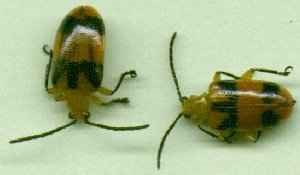
(Stethopachys formosa)
Vappodes phalaenopsis is a threatened species due to land clearing and poaching.
Propagation:
Seeds:
All orchids that are declared rare, vulnerable or endangered are protected by Federal and State Laws and must not be removed from the wild unless you are a land developer, mining company or main Roads department etc. This includes bulbs, roots, leaves and flowers. No part of any plant can be removed from Federal, State or Local Government land without the prior permission of the authority and this includes the spore.
Vappodes phalaenopsis seeds require treatment before sowing. Really Orchid seeds are meant for professionals with time, equipment and space. However if you wish to persevere then here are the basics and you are learning from an amateur. You will need the following, a flask, Chloros solution, boiled water, an eye dropper, paper bag, a warm sheltered position and a lot of patience and luck. This is a most difficult orchid to grow even by professionals as it detests root disturbance and being reoriented.
1. Obtain relevant materials
The first step in growing orchid from seed will be sourcing and having at the ready all materials that will be required in the propagation process.
This includes all of the following:
Unripe orchid seed capsule. If there are 2 capsules secure the second capsule immediately after the first capsule splits or if only one capsule as soon as it changes colour.
Orchid gelling medium with agar which can be purchased from an orchid society or a specialist nursery.
Distilled water
Cooking pot
Spoon
Oven-safe glass or polypropylene containers with lids
Sealable bags
Clean, sterilized cutting board
Rubber gloves
Paper towels
Tweezers or forceps
70 percent ethanol
Bleach
Scalpel or sharp knife
Planting pot
Orchid compost
Length of wire metal
Plastic spray bottle.
deep petri dishes or sterile jars.
2. Prepare agar medium
The agar medium is a special orchid gelling mixture that distilled water will be added to distilled water.
To prepare the medium, mix equal parts of orchid gelling medium with distilled water in a cooking pot.
Place the pot on a stove and bring the mixture to boil for while stirring continuously for two minutes.
Pour the mixture into the petri dishes glass or propylene containers while ensuring not to fill the containers above 20 percent of their volume.
Loosely replace the lids to the containers. Sterilize the containers by heating them up in a microwave oven for between 2 to 3 minutes.
Spray 70 percent ethanol into a sealable bag to create a sterile environment. Transfer the heated containers into the sealable bag.
Allow the containers to cool a bit before tightening their lids and then sealing the bag. Leave the containers to stand for a few days until the mixture solidifies.
3. Prepare seed capsule and work surface
Place an open pot of water on a stove and bring to boil. Place the cutting board in the oven and sterilize.
Put on rubber gloves and sterilize the forceps, and scalpel with 70 percent ethanol.
Insert the seed capsule into a bowel filled with bleach for about fifteen minutes.
Sterilize seed capsule again with 70 percent ethanol and place on grill.
Using the sterilized scalpel, cut open the seed capsule to reveal the seeds. Using a scalpel or sharp knife, scrape out the seeds from the capsule unto an ethanol soaked paper towel.
4. Flasking of the seed
Take out the petri dishes or glass jars containers holding the agar medium. Over the steam, open up the containers and transfer seeds from the ethanol soaked paper towel into the individual containers using the sterilized forceps.
The amount of seeds will determine the number of containers required. Replace the lid of the containers and place them on a window sill that receives indirect sunlight.
5. Wait and exercise patience
All that can be done at this point is to wait until the seeds germinate. The amount of time that this might take varies and is dependent on the particular species.
Generally, the time can range from a few months to a few years. During this period of waiting, ensure the containers are free from contamination to ensure that germination is not disrupted.
6. Emergence of protocorms
Protocorms are tuber-shaped bodies with rhizoids that are produced by the young seedlings of various orchids. Protocorms represent the embryonic form of the orchid plant.
Their emergence after the period of waiting at an affirmation that everything in the propagation process is on track.
7. Transflask orchid seedlings is done after they have developed roots
Upon the emergence of the protocorms, consistently observe the growth of the seedlings. At the point when the seedlings appear to overcrowd the flask, transflasking should be carried out, typically within 30 and 60 days.
* This is done by removing individual seedlings using sterilized tweezers from the original containers and placing them in new containers also filled, in a proportion similar to the original, with agar medium. 6 to 8 in a standard petri dish or 1or 2 to a test tube
8. Transplant seedlings into planting pots
On the presumption that there are no disruptions to the plant growth, the seedlings will eventually outgrow the containers.
At this point, they are to be transplanted into planting pots. A good rule of thumb to determine when they are ready to be transplanted is when the seedlings have developed roots that have grown up to the length of one-quarter of an inch.
To transplant, prepare a planting pot or other container for receiving the seedling by majorly filling it up with coarse fir bark and possibly some slightly moist orchid compost mixture containing perlite, fine charcoal, redwood bark shavings, etc.
To extract the seedlings, submerge the containers in warm water to help loosen the agar gel.
Once the agar medium is softened, twist a piece of metal to form a loop and in turn, use it to carefully pull out the seedlings from the container. It is best done if the agar and seedling can be removed together.
The seedlings can be further rinsed in lukewarm water to remove any excess agar mixture still stuck to them.
Following this, the seedlings can now be planted into the prepared pot with at least 50mm of space between each individual seedling.
9. Positioning the orchid
The seedling once fully transplanted should be placed in a location that is warm with good indirect sun light.
Slowly position the pots into an area that closely assimilates the conditions it will be growing under.
The choice as to whether the plant should be exposed to full sun or in direct sunlight will be dependent on the particular orchid specie.
10. Subsequent care of the plant
After the first week, the seedling can be misted several times a day and watered just once a week.
A guide in watering the plant will be using the dryness of the fir back that is, water the plant until the fir back is completely moistened and wait till it has completely dried out before watering again.
Do not fertilize until the seedlings have fully established themselves.
Division: On larger clumps the plants can be cut down the middle to make 2 or 3 new plants to pot up or place on cork. Ensure there is a new cane and healthy eye on each of the divisions.
Fertilize using Seaweed, fish emulsion or organic chicken pellets soaked in water and apply the liquid on an alternate basis as a foliar spray. Fertilize every 2 months during the growing season to maintain good health, vigour and better flowering.
Further Comments from Readers:
“Hi reader, it seems you use The Bible of Botany a lot. That’s great as we have great pleasure in bringing it to you! It’s a little awkward for us to ask, but our first aim is to purchase land approximately 1,600 hectares to link several parcels of N.P. into one at The Pinnacles NSW Australia, but we need your help. We’re not salespeople. We’re amateur botanists who have dedicated over 30 years to saving the environment in a practical way. We depend on donations to reach our goal. If you donate just $5, the price of your coffee this Sunday, We can help to keep the planet alive in a real way and continue to bring you regular updates and features on Australian plants all in one Botanical Bible. Any support is greatly appreciated. Thank you.”
In the spirit of reconciliation we acknowledge the Bundjalung, Gumbaynggirr and Yaegl and all aboriginal nations throughout Australia and their connections to land, sea and community. We pay our respect to their Elders past, present and future for the pleasures we have gained.
Velleia paradoxa
Classification:
Unranked: Eudicots
Class: Asterids
Order: Asterales
Family: Goodeniaceae
Genus: Is named in honour of Thomas Velley; 1748-1806, who was an English graminlogist. (A person who studies seaweeds)
Specie: From Pará, which is a Greek prefix, which is usually attached to a descriptive verb and stands for to be close to, near, side by side or beside and Doxa, which is Greek for strange or an anomalous. It refers to structures or organs, which vary greatly to each other even on the same plant or organs which are crammed close together.
Sub specie:
Common Name: Spur Velleia.
Distribution:
Velleia paradoxa is found in 2 isolated populations on the west coast and one on the east coast. The western population is found in the south east corner, east from the Margaret River to Albany along the south coast.
The east coast populations are found south from Eungella National Park in central eastern Queensland to south eastern Victoria and west to the Grampians. It is found on the eastern side of the Western Plains, Western Slopes, on and east of the Great Dividing Range to the coast
It is found further west, south from Port Augusta to Laura and in Tasmania from around Launceston.
https://avh.ala.org.au/occurrences/search?taxa=Velleia+paradoxa#tab_mapView
Habitat Aspect Climate:
Velleia paradoxa prefers dappled shade to full sun. It grows adjacent to dry rainforests, moist, sclerophyll forests, Eucalyptus forests, open woodlands and savannah grasslands on mountains, slopes, or plains. The altitude ranges from 1 meter ASL to 1400 meters ASL.
The temperatures range from minus 3 degrees in July to 38 degrees in January.
The rainfall ranges from lows of 350mm to 2800mm average per annum.
Soil Requirements:
Velleia paradoxa prefers most types of sandy loams through to medium clays often with copious quantities of bush litter and other natural debris. The soils are usually derived from sandstones, laterites, granites or at times shale, metamorphic rocks black basalts or brown basalts. The soils pH ranges from 4.5pH to 7pH. It does not tolerate water logged soils. Non saline soils to moderately saline soils are tolerated.
Height & Spread:
Wild Plants: 0.03m to 0.4m by 0.3m to 0.5m when in flower.
Characteristics:
Velleia paradoxa grows as a perennial herb with a short basal stem and a tap root.
The basal, rosette leaves are obovate to elliptic. The leaves measure 70mm to 250mm in length by 15mm to 35mm in width. The petioles are pale green and covered in soft, white, puberulent hairs near the base. The bases are tapering attenuate while the apexes are obtuse. The discolourous laminas are mid grey-green, to deep grey-green, dull and glabrous. The laminas are flat and straight or recurve slightly from the mid vein to the margins and decurve slightly near the apex. The margins are irregularly deeply serrated to toothed. The obtuse mid vein is pale green and prominent on the lower lamina.
The inflorescences are ascending or decumbent scapes born from the center of the rosette of leaves. The grey-green scapes are moderately covered in white pulverulent hairs near the base and are glabrous for the remainder. The scapes measure 80mm to 400mm in length. The 4 to 7 oblong to ovate bracteoles are free at the base of the pedicels and measure 5mm to 40mm in length.
The 5 green, sepals have acute apexes and measure 4mm to 9mm in length. 4 of the sepals are linear while the upper one is ovate to oblong. The 5 yellow, inferior petals are dimorphic. The 2 upper petals are erect and measure 10mm to 16mm in length by 3.5mm to 4.5mm in width while the 2 lateral and lower petals measure 13mm to 20mm in length by 3.5mm to 5mm in width. The petals’ wings measure 2.5mm to 3.2mm in width. The crisped wings extend well beyond the petals apexes and taper to the bases. The yellow spur is sparsely to moderately covered in short, soft, white pulverulent hairs externally and is glabrous internally. The spur measures 6mm to 8mm in length. The indusium is obovate and measure 3mm to 6mm in length by 3mm to 6mm in width while the orifice is strongly arched and reddish-maroon in the throat. The flowers appear from August to February.
The fruits are compressed ovoidal capsules. The capsules are sparsely to moderately covered in short, soft, white pulverulent hairs and measure 4.5mm to 6mm in length by 4.5mm to 6mm in diameter. The green capsules turn grey-brown when ripe. The sepals are persistent on the ripe fruit. The smooth, spherical seeds measure 3mm to 5mm in diameter including the 1mm wide wing.
Wildlife:
Velleia paradoxa’s wildlife is unknown to the author.
Cultivation:
Velleia paradoxa is a beautiful small rosette herb for the small bush garden or small to medium rockeries. The plants make great displays from early spring to mid-summer especially when mass planted. In cultivation it grows 0.1 meter to 0.2 meters in height by 0.3 meters to 0.5 meters in diameter when grown in an open sunny position. It responds well to tip pruning and is moderately frost hardy and drought resistant. In fact it is grossly underestimated and under used as its uses in cultivation and landscaping projects are only limited by its size.
It is ideal for sunny areas around swimming pools, hot sunny court yards and in the foreground of a bush garden.
It is best used adjacent to small areas of bush close to paths or the house so their deep yellow flowers can be viewed regularly. Here it can be planted in small groups of 5 or more to contrast against shrubs or even trees. If it is surrounded by small plants with different fine foliages and red flowers it will give a strong affect or surrounded in pinks and lilacs a more serene peaceful scene can be created. This is one plant that benefits highly from being mass planted. Your imagination is the only limitation to their use in the garden.
A row or cluster of plants in 100mm squat pots on the veranda or 4 in a hanging basket will brighten the veranda or patio area.
Propagation:
Seeds: Seeds of Velleia paradoxa are very difficult to obtain and the best method of propagation is from division or stolons.
When seed is available sow the fresh seeds directly onto a seed raising mix, and cover them with 1mm of fine sand or mix. Keep the mix moist not wet. Place the trays in a cool shaded area with 20mm shade cloth in the bush house. When the seedlings are 20mm to 40mm tall, prick them out and plant them into 50mm squat tubes or 100mm squat pots using a good organic mix.
As the seedlings roots reach the bottom of the pots plant them out into their permanent position and water thoroughly with our recommended fertilizer.
Fertilize using Seaweed, fish emulsion or organic chicken pellets soaked in water and apply the liquid on an alternate basis. Fertilize every month until the plants are well established to maintain better health, vitality and flowering.
Further Comments from Readers:
“Hi reader, it seems you use The Bible of Botany a lot. That’s great as we have great pleasure in bringing it to you! It’s a little awkward for us to ask, but our first aim is to purchase land approximately 1,600 hectares to link several parcels of N.P. into one at The Pinnacles NSW Australia, but we need your help. We’re not salespeople. We’re amateur botanists who have dedicated over 30 years to saving the environment in a practical way. We depend on donations to reach our goal. If you donate just $5, the price of your coffee this Sunday, We can help to keep the planet alive in a real way and continue to bring you regular updates and features on Australian plants all in one Botanical Bible. Any support is greatly appreciated. Thank you.”
In the spirit of reconciliation we acknowledge the Bundjalung, Gumbaynggirr and Yaegl and all aboriginal nations throughout Australia and their connections to land, sea and community. We pay our respect to their Elders past, present and future for the pleasures we have gained.
Velleia spathulata
Classification:
Unranked: Eudicots
Class: Asterids
Order: Asterales
Family: Goodeniaceae
Genus:Is named in honour of Thomas Velley; 1748-1806, who was an English graminlogist. (A person who studies seaweeds)
Specie: From Spatula, which is Latin to have the shape of a spoon. It refers to leaves or phyllodes, which somewhat resembles a spoon or ladle.
Sub specie:
Common Name:
Distribution:
Velleia spathulata is found in a narrow band along the coast to the coastal ranges south from Tozer’s Gap on Mount Tozer in far north Queensland on Cape York Peninsular to Rose Bay in central coastal New South Wales.
https://avh.ala.org.au/occurrences/search?taxa=Velleia+spathulata#tab_mapView
Habitat Aspect Climate:
Velleia spathulata prefer dappled shade to full sun. It mainly grows in moist to damp or even wet situations behind the frontal dunes and along coastal estuaries. The altitude ranges from 1 meter ASL to 20 meters ASL.
The temperatures range from 2 degrees in July to 36 degrees in January.
The rainfall ranges from lows of 600mm to 3200mm average per annum.
Soil Requirements:
Velleia spathulata prefer course sands, fine sands or light silts to medium silts often with copious quantities of forest litter and other natural debris. The soils are derived from accumulated peaty beach sands or alluvial deposits. The soils pH ranges from 4.5pH to 7pH. It does not tolerate water logged soils however soils remain moist throughout the year. Non saline soils to moderately saline soils are tolerated as are salt laden winds.
Height & Spread:
Wild Plants: 0.03m to 0.08m by 0.08m to 0.15m.
Characteristics:
Velleia spathulata grows as a perennial herb with a short basal stem and a tap root.
The basal, rosette leaves are oblanceolate to spathulate. The leaves measure 60mm to 100mm in length by 15mm to 25mm in width. The petioles are deep green, deep purple-green or deep green with deep purple tinge and are glabrous or at times sparsely covered in soft, white, puberulent hairs. The petioles measure 0mm to 30mm in length. The bases are tapering attenuate with the spathulate leaves while the apexes are broad obtuse to broad acute. The discolourous or concolourous laminas are deep green, deep purple-green or deep green with deep purple tinge, glabrous to sparsely covered in soft, white puberulent hairs on the upper laminas while the lower laminas are similar or paler. The laminas are flat or slightly convex on the upper laminas and gently decurve slightly near the apex. The margins are entire or regularly serrated. The obtuse mid vein is paler or deeper coloured than the base colour or rarely the same as the base colour and prominent on the lower lamina.
The inflorescences are prostrate or decumbent scapes born from the center of the rosette of leaves. The deep green, deep purple-green or deep green with deep purple tinged scapes are sparsely to moderately covered in coarse, white, retrorse, pubescent hairs near the base and are glabrous for the remainder. The scapes measure 80mm to 250mm in length. The 4 to 7 lanceolate to linear bracteoles are free at the base of the pedicels and measure 4mm to 12mm in length. The pedicels are sparsely covered in white appressed pubescent hairs.
The 3 green, sepals have acute apexes and measure 4mm to 6mm in length. 2 of the sepals are linear while the upper one is lanceolate to oblong with a cordate base. The 5 yellow petals are dimorphic with reddish-maroon bases. The 2 upper petals are curved, erect and have an apiculate, acute apex and measure 6mm to 9mm in length by 2.5mm to 3mm in width. The 2 lateral petals measure 7mm to 10mm in length by 2.5mm to 3mm in width. The lower petal measures 8mm to 11mm in length by 2.5mm to 3mm in width. The petals’ wings measure 2.3mm to 2.5mm in width. The undulating wings apexes are truncate and are level with the petal apexes on the inner edge while the outer edge extends beyond the petals apexes and taper to the bases. The yellow spur is sparsely to moderately covered in short, soft, white pulverulent hairs externally and is glabrous internally. The spur measures 1mm to 1.5mm in length. The indusium is obovate and measure 1mm to 1.5mm in length while the orifice is strongly arched and reddish-maroon in the throat. The flowers appear throughout the year.
Velleia spathulata’s fruits are compressed ovoidal capsules. The glabrous capsules measure 2.5mm to 3mm in length by 2.5mm to 3mm in diameter. The green capsules turn grey-brown when ripe. The sepals are persistent on the ripe fruit. The punctate, spherical seeds measure 1.5mm to 1.8mm in diameter including the narrow wing.
Wildlife:
Velleia spathulata’s flowers attract native colony bees like Tetragonula carbonaria and small butterflies.
Cultivation:
Velleia spathulata is a beautiful small rosette herb for the small bush garden or small to medium rockeries. The plants make great displays from early spring to mid-summer especially when mass planted. In cultivation it grows 0.1 meter to 0.2 meters in height by 0.1 meters to 0.2 meters in diameter when grown in an open sunny position. It responds well to tip pruning and is moderately frost hardy and drought resistant. In fact it is grossly underestimated and under used as its uses in cultivation and landscaping projects are only limited by its size.
It is ideal for sunny areas around swimming pools, hot sunny court yards and in the foreground of a bush garden.
It is best used adjacent to small areas of bush close to paths or the house so their deep yellow flowers can be viewed regularly. Here it can be planted in small groups of 5 or more to contrast against shrubs or even trees. If it is surrounded by small plants with fine foliages and red flowers it will give a strong affect or surrounded in pinks and lilacs a more serene peaceful scene can be created. This is one plant that benefits highly from being mass planted. Your imagination is the only limitation to their use in the garden.
A row or cluster of plants in 100mm squat pots on the veranda or 4 in a hanging basket will brighten the veranda or patio area.
Propagation:
Seeds: The seeds of Velleia spathulata are very difficult to obtain and the best method of propagation is from division or stolons.
When seed is available sow the fresh seeds directly onto a seed raising mix, and cover them with 1mm of fine sand or mix. Keep the mix moist not wet. Place the trays in a cool shaded area with 20mm shade cloth in the bush house. When the seedlings are 20mm to 40mm tall, prick them out and plant them into 50mm squat tubes or 100mm squat pots using a good organic mix.
As the seedlings roots reach the bottom of the pots plant them out into their permanent position and water thoroughly with our recommended fertilizer.
Fertilize using Seaweed, fish emulsion or organic chicken pellets soaked in water and apply the liquid on an alternate basis. Fertilize every 2 months until the plants are well established then on an annual basis in September or March to maintain better health, vitality and flowering.
Further Comments from Readers:
“Hi reader, it seems you use The Bible of Botany a lot. That’s great as we have great pleasure in bringing it to you! It’s a little awkward for us to ask, but our first aim is to purchase land approximately 1,600 hectares to link several parcels of N.P. into one at The Pinnacles NSW Australia, but we need your help. We’re not salespeople. We’re amateur botanists who have dedicated over 30 years to saving the environment in a practical way. We depend on donations to reach our goal. If you donate just $5, the price of your coffee this Sunday, We can help to keep the planet alive in a real way and continue to bring you regular updates and features on Australian plants all in one Botanical Bible. Any support is greatly appreciated. Thank you.”
In the spirit of reconciliation we acknowledge the Bundjalung, Gumbaynggirr and Yaegl and all aboriginal nations throughout Australia and their connections to land, sea and community. We pay our respect to their Elders past, present and future for the pleasures we have gained.
Verbena gaudichaudii
Classification:
Unranked: Eudicots
Class: Asterids
Order: Lamiales
Family: Verbanaceae
Genus: in honour of Thomas Velley; 1748-1806, who was an English graminlogist. (A person who studies seaweeds)
Specie: Is named in honour of Charles Gaudichaud Beaupre; 1789-1645, who was a French Botanist who named several Australian genera.
Sub specie:
Common Name:
Distribution:
Verbena gaudichaudii is found south and east of a line from near Rockingham Bay in far north Queensland to Andamooka and Clarendon on Saint Vincent Gulf in southern South Australia to the coast.
There is an isolated population in the MacDonnell ranges in the Northern Territory near Hermannsburg.
https://avh.ala.org.au/occurrences/search?taxa=Verbena+gaudichaudii#tab_mapView
Habitat Aspect Climate:
Verbena gaudichaudii prefers dappled shade to full sun and will be found growing adjacent to and in dry or moist rainforests, dry sclerophyll forests, moist Eucalyptus forests, open woodlands, savannah grasslands, on plains, flats or mountains. The altitude ranges from 5 meters ASL to 810 meters ASL.
The temperatures range from minus 3 degrees in July to 40 degrees in January.
The rainfall ranges from lows of 350mm to 2000mm average per annum.
Soil Requirements:
Verbena gaudichaudii prefers most types of sandy loams through to heavy clays. The soils are derived from most types of parent rocks including basalts, sandstones, metamorphic, laterites or shale. The soils pH ranges from 4.5pH to 7pH. It does not tolerate water logged soils however plants in riparian zones may be inundated for short periods during storms. Non saline soils to moderately saline soils are tolerated.
Height & Spread:
Wild Plants: 0.3m to 1m by 0.6m to 1m.
Characteristics:
Verbena gaudichaudii grows as an annual herb with erect, quadrangular, smooth, glabrous or scabrous stems are longitudinally striated.
The opposite, lower leaves are reduced to narrow wings central the mid veins and measure 20mm to 70mm in length by 0.5mm to 30mm in width. The upper narrow ovate, oblong to linear leaves are sub incised to sub entire and measure 15mm to 60mm in length by 0.5mm to 25mm in width. The bases are cuneate while the apex is acute. The concolourous laminas are deep grey-green, coriaceous, dull and glabrous to sparsely covered in short, stiff, white puberulent hairs on the upper lamina while the lower lamina is paler. The laminas are flat to conduplicate while the margins are deeply incised. The mid vein and main laterals are strongly prominent on the lower laminas.
The inflorescences are erect to lax panicles born from the terminals. The deep grey-green to deep green tinged purple peduncles, rachises and pedicels are covered in short, stiff puberulent hairs. The peduncles measure 400mm to 900mm in length while the rachises measure 80mm to 150mm in length and the pedicels measure 0mm to 0.2mm in length. The appressed bracts are moderately to densely covered in short, white puberulent hairs and measure 1.5mm to 2.5mm in length. The calyx and 5 lobes are moderately to densely covered in short white glandular hairs. The calyx measures 2.5mm to 3.5mm in length while the lobes measure 2.5mm to 3.5mm in length.
The pale pink, lilac to mid purple-pink corolla tube is moderately to densely covered in short, stiff, reddish glandular hairs which extend to the base of the lobes externally and are glabrous internally. The corolla tubes measure 3mm to 7mm in length. The 5 pale pink, lilac to mid purple-pink corolla lobes are divaricate with a broad deep emarginate apex. The ovate to orbicular lobes measure 3.5mm to 7mm in length by 3mm to 5.5mm in width. The flowers appear from mid-October to January.
The fruits are broadly obovoidal mericarps. The mericarps are glabrous and measure 1.5mm to 2mm in length by 1.5mm to 2mm in diameter. The green mericarps turn dull brown when ripe.
Wildlife:
Verbena gaudichaudii’s wildlife is unknown to the author.
Cultivation:
Verbena gaudichaudii is considered a weed at this time by gardeners. In cultivation it grows from 0.8 meters to 1.5 meters in height by 0.6 meters to 0.8 meters in diameter when grown in the open and in flower.
It is a very strong grower on most soils where deep leaf litter keeps the soil cool and moisture at an even level. If these requirements are met it can cope with temperatures as low as minus 4 degrees and up to 42 degrees with some wilting on extended periods of very hot weather. It is moderately drought resistant once established.
Add to the above, if it is given an adequate supply of water and a little native fertilizer on a regular basis the plants will respond with excellent flowering and fruiting over a long period.
Verbena gaudichaudii would make a good contribution to a moist bush garden. Here it can be used as fill in plants, scattered between the other small shrubs so the flower spikes extend over the shrubs giving a wonderful display.
Propagation:
Seeds: Seeds of Verbena gaudichaudii can be removed easily from the fruits.
Sow fresh seeds directly into a seed raising mix, keeping them moist not wet. Place the trays in a warm shaded area with 20mm shade cloth in the bush house. When the seedlings are 20mm to 25mm tall, prick them out and plant them into 50mm native tubes using a good organic mix.
As the seedlings roots reach the bottom of the tubes plant them out into their permanent position. Do not delay as the roots will soon fill the pot and make them hard to remove.
Cuttings: Fortunately Verbena gaudichaudii cuttings strike easy. Use 100mm to 150mm long tip cuttings or lateral shoots from the present season’s growth. Take them in warmer months of the year. Remove half the leaves from the bottom section being careful not to tear the bark.
1 Prepare the cutting mix by adding two thirds sharp clean river sand, one third peat or one third perlite. These ingredients must be sterilized,
2 Select good material from non diseased plants,
3 Select semi green stems for cuttings. Look for a sree nodes,
4 Place the cutting on a flat, hard surface, and make a clean cut down one side of the cutting at the base for 10mm with a sharp sterile knife or razor blade. – This scarification of the node will increase the chances of roots emerging from this spot. Now remove all but one or two the leaves, leaving the apex leaves in tact. If the leaves are very large in proportion to the stem, cut off the apical halves.
5 Hormones are not required,
6 Use a small dipple stick or old pencil to poke a hole into the soilless potting mix. Ensure the hole is slightly larger than the stem diameter and be careful not to damage the base of the cuttings,
7 I like to place the tubes in bucket with holes drilled in the bottom to allow excess water to drain out. A plastic bag that fits over the bucket is ideal to help maintain temperature and moisture. Place in a semi shaded, warm position like under 50mm shade cloth.
8 When the cuttings have struck, open the bag to allow air circulation for a few days to a week,
9 Once hardened off remove the cuttings from the bag and allow to further hardening for a few more days to a week,
10 Transplant into a good potting mix to grow on.
Fertilize using seaweed, fish emulsion or organic chicken pellets soaked in water on an alternate basis. Fertilize every two months until the plants are established then twice annually in early September or March to maintain health, vitality and better flowering.
Further Comments from Readers:
“Hi reader, it seems you use The Bible of Botany a lot. That’s great as we have great pleasure in bringing it to you! It’s a little awkward for us to ask, but our first aim is to purchase land approximately 1,600 hectares to link several parcels of N.P. into one at The Pinnacles NSW Australia, but we need your help. We’re not salespeople. We’re amateur botanists who have dedicated over 30 years to saving the environment in a practical way. We depend on donations to reach our goal. If you donate just $5, the price of your coffee this Sunday, We can help to keep the planet alive in a real way and continue to bring you regular updates and features on Australian plants all in one Botanical Bible. Any support is greatly appreciated. Thank you.”
In the spirit of reconciliation we acknowledge the Bundjalung, Gumbaynggirr and Yaegl and all aboriginal nations throughout Australia and their connections to land, sea and community. We pay our respect to their Elders past, present and future for the pleasures we have gained.
Veronica grosseserrata
Classification:
Unranked: Eudicots
Class: Asterids
Order: Laminales
Family: Plantaginaceae
Tribe: Veroniceae
Genus: From Veronica, which is Ancient Greek or Pherenik?, which is earlier from Ancient Macedonia for to bear or carry a victory. The name dates back to 350BC to the high Priestess. It refers to plants that have an air about them.
Specie: From Grossus which is Latin for large and Serratatus which is Latin for a saw edge. It usually refers to the leaf margins or at times another organ’s margins, which have large serrations like a saw’s toothed edge.
Sub specie:
Common Name:
Distribution:
Veronica grosseserrata is found in several disjunct populations south from the Mount Warning Scenic Rim in far south east Queensland to Sylvia Creek north west of Melbourne in southern Victoria.
https://avh.ala.org.au/occurrences/search?taxa=Veronica+grosseserrata#tab_mapView
Habitat Aspect Climate:
Veronica grosseserrata prefers dappled shade to full sun. It grows in moist, open Eucalyptus forests, moist, open woodlands, or moist mountainous heaths mainly on flats. The altitude ranges from 67 meters ASL to 1432 meters ASL.
The temperatures range from minus 4 degrees in August to 34 degrees in February.
The rainfall ranges from lows of 600mm to 2100mm average per annum. It is usually found in areas that receive additional moisture through orographic precipitation.
Soil Requirements:
Veronica grosseserrata prefers better quality loams to medium clays. The soils are usually derived from brown basalts, black basalts or heavier, fattier types of granites. The soils pH ranges from 5pH to 6pH. It does not tolerate water logged soils however even soil moisture is assured throughout the year. Non saline soils to moderately saline soils are tolerated.
Height & Spread:
Wild Plants: 0.1m to 0.15m by 0.6m to 1m.
Characteristics:
Veronica grosseserrata grows as an annual herb with procumbent stems and ascending to erect flowering stems. The procumbent stems often become stoloniferous before becoming rising to an erect position near the apexes. The erect flowering stems often become procumbent then stoloniferous and root after seed dispersal. The flower stems measure 100mm to 350mm in length.
The opposite, orbicular, ovate to almost triangular leaves measure 30mm to 55mm in length by 12mm to 20mm in width. The petioles measure 5mm to 12mm in length. The bases are truncate to very broad cuneate while the apex is broad acute. The discolourous laminas are deep green to sea-green, semi glossy to glossy and covered in fine papillate lumps on the upper laminas while the lower laminas are deep bluish-green to bluish sea-green and dull. The laminas are strongly areolate on the upper surface between the mid vein and the lateral veins. The laminas also recurve gently upwards from the mid vein to the margins and gently decurve downwards near the petiole or on the apical half. The margins have 12 to 24 very large, mostly regular, course teeth. The mid vein and pinnate and 2 palmate like basal lateral veins are strongly prominent on the lower laminas and are distinctly visible from the upper laminas.
The inflorescences are single or paired racemes from the terminals. There are 10 to 16 individual flowers on a raceme. The peduncles, rachises and pedicels are deep green, semi glossy, glabrous. The peduncles measure 15mm to 40mm in length while the rachises measure 35mm to 100mm in length and the pedicels measure 7mm to 13mm in length. The 4 narrow obovate, appressed bracts are glabrous and measure 4mm to 6mm in length.
The 4 pale green, glabrous, obovate calyx lobes are glabrous and are sparsely covered in white ciliate hairs. The lobes measure 3mm to 5mm in length. The 4 white petals turn mauve, pinkish-blue to purple prior to anthesis with 5 to 9 longitudinal deeper coloured veins radiating from the base. The 3 orbicular petals measure 4mm to 8mm in length by 5mm to 9mm in width while the 4th petal measures 4mm to 8mm in length by 3mm to 6mm in diameter.
The 2 white to pastel mauve filaments are and measure 4mm to 6mm in length while the oblong, dorsifixed, white anthers measure 1.5mm to 2mm in length. The pollen is white.
The glabrous, ovary is lime green and measures 1.5mm to 2mm in diameter. The white style and stigma are glabrous. The pistil measures 5mm to 6.5mm in length. The flowers appear from mid-September through to late May.
The fruits are broadly flattened, emarginate capsules. The glabrous capsules measure 4mm to 5mm in length. The green capsules turn dull fawn when ripe. The calyx and style are persistent on the ripe fruit. The calyx lobes measure 5mm to 8mm in length. The capsules split revealing the 8 to 10 cream 1mm long seeds.The broad, flattened, ovoidal seeds are pale brown to fawnish-tan and measure 1mm to 1.5mm in diameter.
Wildlife:
Veronica grosseserrata’s is unknown to the author.
Cultivation:
Veronica grosseserrata is a beautiful small prostrate plant which is ideally suited for growing in moist rockeries in a sunny or shady position. In cultivation it grows from 0.15 meters to 0.2 meters in height by 0.6 meters to 0.8 meters in diameter when grown in the open.
It grows exceptionally well on lighter soils but is inclined to become weedy if not contained. If these requirements are met it can cope with temperatures as low as minus 5 degrees and up to 36 degrees. It is moderately drought resistant but may need cutting back during sever dry spells. Fertilize and deep watering for it to return to its former best.
Add to the above, if it is given an adequate supply of water and a little native fertilizer on a regular basis the plants will respond with good flowering and fruit over a long period.
It would make an ideal contribution around smaller fish or frog ponds in well-lit court yards or around swimming pools. It needs strong indirect sun light to very light shade to grow at their best under these conditions.
Veronica grosseserrata would make a good contribution to a moist rocky terrain rock garden. Here it can be used as the fill in plants or scattered throughout the boulders. When you use them in area that is strewn with large boulders do not over crowd the scene as the boulders are a formidable part of the scene. Veronica grosseserrata is well suited to such conditions so use contours to display the plants boulder country are almost always rising and falling in contour and have sharp rises. Plants must be planted sparingly with short annuals between to give vibrant colour. Make the scene so you can see over the tallest ones with the exception of one or two plants at the most. The idea is to achieve a feeling of expansive harshness. This can be achieved with using Veronica grosseserrata’s green leaves to contrast with finer pale green or soft grey to glaucous coloured foliages. If large deep green leaf plants are wanted try using them as small shrubs in the background. Use a lot of procumbent plants like Hibertia linearis and Viola betonicifolia to make the rocks look larger and the spaces between the plants more expansive. Actinotis helianthus may be a little over powering but could be used as the plant to blend into the background where different taller green leaf species are growing.
Propagation:
Seeds: Seeds of Veronica grosseserrata can be removed easily from the fruits.
Sow fresh seeds directly into a seed raising mix, keeping them moist not wet. Do not over water as the seeds will rot off before germination takes place. Place the trays in a cool shaded area with 30mm shade cloth in the bush house. When the seedlings are 20mm to 25 =mm tall, prick them out and plant them into 50mm native tubes using a good organic mix.
As the seedlings roots reach the bottom of the tubes plant them out into their permanent position. Do not delay.
Further Comments from Readers:
“Hi reader, it seems you use The Bible of Botany a lot. That’s great as we have great pleasure in bringing it to you! It’s a little awkward for us to ask, but our first aim is to purchase land approximately 1,600 hectares to link several parcels of N.P. into one at The Pinnacles NSW Australia, but we need your help. We’re not salespeople. We’re amateur botanists who have dedicated over 30 years to saving the environment in a practical way. We depend on donations to reach our goal. If you donate just $5, the price of your coffee this Sunday, We can help to keep the planet alive in a real way and continue to bring you regular updates and features on Australian plants all in one Botanical Bible. Any support is greatly appreciated. Thank you.”
In the spirit of reconciliation we acknowledge the Bundjalung, Gumbaynggirr and Yaegl and all aboriginal nations throughout Australia and their connections to land, sea and community. We pay our respect to their Elders past, present and future for the pleasures we have gained.
Veronica plebeia
Classification:
Unranked: Eudicots
Class: Asterids
Order: Laminales
Family: Plantaginaceaeaceae
Tribe: Veroniceae
Genus: From Pherenike, which is Classical Ancient Greek later Pherein, which is Greek/Latin for the Veronica genus.
Specie: From Plebei, which is Latin for belong to the common people or the common people. It probably refers to the fact that plants in the genus were eaten as part of a staple diet by the poor or common people in semi arid locations.
Sub specie:
Common Name: Creeping Speedwell or Trailing Speedwell.
Distribution:
Veronica plebeia is found in several isolated populations. The western Population is found from the Margaret River east to Albany in south west coastal Western Australia.
In South Australia it is restricted to a small region between Port Augusta, Ardrossan and Port Wakefield.
In the east it is found south from Gladstone in central eastern Queensland to the Grampians in south western Victoria. It is mainly found on the western side, on and east of the Great Dividing Range to the coast except for the alpine highlands in the south.
In Tasmania it is found from Gorge Town to Devonport in the central north of the island.
https://avh.ala.org.au/occurrences/search?taxa=Veronica+plebeia#tab_mapView
Habitat Aspect Climate:
Veronica plebeia prefers dappled shade to full sun and will be found growing adjacent to and in dry or moist rainforests, dry or moist Eucalyptus forests, open woodlands, savannah woodlands, mountains, slopes or plains. The altitude ranges from 5 meters ASL to 900 meters ASL.
The temperatures range from minus 4 degrees in July to 37 degrees in January.
The rainfall ranges from lows of 350mm to 2000mm average per annum.
Soil Requirements:
Veronica plebeia prefer most types of sandy loams through to heavy clays. The soils are derived from most types of parent rocks including basalts, sandstones, metamorphic, laterites and shale. The soils pH ranges from 4.5pH to 7pH. It does not tolerate water logged soils however plants in riparian zones may be inundated for short periods during storms. Non saline soils to moderately saline soils are tolerated.
Height & Spread:
Wild Plants: 0.1m to 0.15m by 0.6m to 1m.
Characteristics:
The stems of Veronica plebeia are prostrate, mid green and sparsely covered in dimorphic white puberulent to hirtellous hairs. The shorter, denser hairs are found on the stems internodes while longer hairs are situated on and adjacent to the nodes.
The opposite, triangular leaves of Veronica plebeia measure 8mm to 20mm in length by 5mm to 16mm in width. The petioles are sparsely covered in white puberulent hairs and measure 3mm to 20mm in length. The bases are broad truncated to slightly cordate while the apexes are acute. The concolourous laminas are deep sea-green, coriaceous, dull and glabrous to sparsely covered in white puberulent hairs on the upper lamina while the lower lamina is paler. The leaf margins have 6 to 16 irregular, course teeth while the laminas recurve slightly from the mid vein to the margins. The mid vein and main laterals are slightly prominent on the lower laminas and are faintly visible from the upper laminas.
The inflorescences of Veronica plebeia are born on lateral or erect racemes from the leaf axils. There are 3 to 9 individual flowers on a raceme. The fawn-green to purple-green peduncles, rachises and pedicels are sparsely covered in white puberulent hairs. The peduncles measure 5mm to 35mm in length while the rachises measure 20mm to 50mm in length and the pedicels measure 2mm to 28mm in length. The 4 bracts are divaricate, glabrous, covered in white ciliate hairs and have an obtuse apex. The bracts measure 3.5mm to 7mm in length. The corolla tubes are pale lilac streaked white to mid purple and measure 2mm to 3.5mm in length. The 4 corolla lobes are divaricate, glabrous, covered in white ciliate hairs and have an obtuse apex. The lobes are oblong-orbicular and measure 3.5mm to 7mm in length by 3mm to 5.5mm in width.
The 2 exserted stamens are free for their entire length and measure 3mm to 4mm in length. The filaments are white and much narrower than the white to purple anthers. The pollen is white.
The white styles and purple stigmas are glabrous while the ovary is lime green and covered in white puberulent hairs. The pistil measures 2mm to 3mm in length. Veronica plebeia’s flowers appear from mid-September through to late February.
The fruits of Veronica plebeia are broadly obovoidal capsules. The capsules are glabrous and measure 2.5mm to 4.5mm in length by 2.6mm to 5mm in diameter. The green capsules turn dull yellow-fawn to pinkish-fawn when ripe. The bracts and style are persistent on the ripe fruit. The capsules split revealing the 8 to 10 cream 1mm long seeds.
Wildlife:
Veronica plebeia’s are unknown to the author.
Cultivation:
Veronica plebeia is a beautiful small prostrate plant which is ideally suited for growing in moist rockeries or bog gardens. In cultivation it will grow from 0.1 meters to 0.15 meters in height by 0.6 meters to 0.8 meters in diameter when grown in the open.
It grows exceptionally well on lighter soils but can become weedy if not contained. If these requirements are met it can cope with temperatures as low as minus 5 degrees and up to 36 degrees. It is moderately drought resistant but may need cutting back during sever dry spells. Fertilize with one of our recommended fertilizer so that it can regain its former beauty quickly once rains bring relief.
Add to the above, if it is given an adequate supply of water and a little native fertilizer on a regular basis the plants will respond with good flowering and fruit over a long period.
It would make an ideal contribution around smaller fish or frog ponds in well-lit court yards or around swimming pools. It needs strong indirect sun light to very light shade to grow at their best under these conditions.
Veronica plebeia would make a good contribution to a moist rocky terrain rock garden. Here it can be used as the fill in plants or scattered throughout the boulders. When you use them in area that is strewn with large boulders do not over crowd the scene as the boulders are a formidable part of the scene. Veronica plebeia is well suited to such conditions so use contours to display the plants boulder country are almost always rising and falling in contour and have sharp rises. Plants must be planted sparingly with short annuals between to give vibrant colour. Make the scene so you can see over the tallest ones with the exception of one or two plants at the most. The idea is to achieve a feeling of expansive harshness. This can be achieved with using Veronica plebeia’s green leaves to contrast with finer pale green or soft grey to glaucous coloured foliages. If large deep green leaf plants are wanted try using them as small shrubs in the background. Use a lot of procumbent plants like Hibertia linearis and Viola betonicifolia to make the rocks look larger and the spaces between the plants more expansive. Actinotis helianthus may be a little over powering but could be used as the plant to blend a background coverage into the fore ground.
Propagation:
Seeds: Seeds of Veronica plebeia can be removed easily from the fruits.
Sow freshly treated seeds directly into a seed raising mix, keeping them moist not wet. Do not over water as the seeds will rot off before germination takes place. Place the trays in a cool shaded area with 50mm shade cloth in the bush house. When the seedlings are 20 to 25 mm tall, prick them out and plant them into 50mm native tubes using a good organic mix.
As the seedlings roots reach the bottom of the tubes plant them out into their permanent position. Do not delay.
Cuttings: Fortunately Veronica plebeia cuttings strike easy. Use 100mm to 150mm long tip cuttings or lateral shoots from the present season’s growth. Take them in warmer months of the year. Remove half the leaves from the bottom section being careful not to tear the bark.
1 Prepare the cutting mix by adding two thirds sharp clean river sand, one third peat or one third perlite. These ingredients must be sterilized,
2 Select good material from non diseased plants,
3 Select semi green stems for cuttings. Look for a sree nodes,
4 Place the cutting on a flat, hard surface, and make a clean cut down one side of the cutting at the base for 10mm with a sharp sterile knife or razor blade. – This scarification of the node will increase the chances of roots emerging from this spot. Now remove all but one or two the leaves, leaving the apex leaves intact. If the leaves are very large in proportion to the stem, cut off the apical halves.
5 Hormones are not required,
6 Use a small dipple stick or old pencil to poke a hole into the soilless potting mix. Ensure the hole is slightly larger than the stem diameter and be careful not to damage the base of the cutting,
7 I like to place the tubes in bucket with holes drilled in the bottom to allow excess water to drain out. A plastic bag that fits over the bucket is ideal to help maintain temperature and moisture. Place in a semi shaded, warm position like under 50mm shade cloth.
8 When the cuttings have struck, open the bag to allow air circulation for a few days to a week,
9 Once hardened off remove the cuttings from the bag and allow to further hardening for a few more days to a week,
10 Transplant into a good potting mix to grow on.
Fertilize using seaweed, fish emulsion or organic chicken pellets soaked in water on an alternate basis. Fertilize every two months until the plants are established then twice annually in early September or March to maintain health, vitality and better flowering.
Further Comments from Readers:
“Hi reader, it seems you use The Bible of Botany a lot. That’s great as we have great pleasure in bringing it to you! It’s a little awkward for us to ask, but our first aim is to purchase land approximately 1,600 hectares to link several parcels of N.P. into one at The Pinnacles NSW Australia, but we need your help. We’re not salespeople. We’re amateur botanists who have dedicated over 30 years to saving the environment in a practical way. We depend on donations to reach our goal. If you donate just $5, the price of your coffee this Sunday, We can help to keep the planet alive in a real way and continue to bring you regular updates and features on Australian plants all in one Botanical Bible. Any support is greatly appreciated. Thank you.”
In the spirit of reconciliation we acknowledge the Bundjalung, Gumbaynggirr and Yaegl and all aboriginal nations throughout Australia and their connections to land, sea and community. We pay our respect to their Elders past, present and future for the pleasures we have gained.
Verticordia auriculata
Classification:
Unranked: Eudicots
Unranked: Rosids
Order: Myrtales
Family: Myrtaceae
Genus: From Vertos, which is Latin for a whorl or to turn and Kardio, which is Ancient Greek for the heart. It refers to plants, which turn the heart and head because of the sheer beauty of their flowers.
Specie: From Auricle, which is Latin for an ear. It refers to organs, which have a distinct form of an ear.
Sub specie:
Common Name:
Distribution:
Verticordia auriculata is found south from Perth to Kalgoorlie in the south north to north east of Geraldton in Western Australia.
https://avh.ala.org.au/occurrences/search?taxa=Verticordia+auriculata#tab_mapView
Habitat Aspect Climate:
Verticordia auriculata prefers dappled shade to full sun. It grows in open Eucalyptus woodlands or open Acacia woodlands on open plains. The altitude ranges from 5 meters ASL to 550 meters ASL.
The temperatures range from 4 degrees in July to 38 degrees in January.
The rainfall ranges from lows of 250mm to 400mm average per annum.
Soil Requirements:
Verticordia auriculata prefers deep yellow to white gravelly sands to heavily leached white sands. The soils are usually derived from decomposed sands or accumulated sands. The soils pH ranges from 5pH to 7pH. It does not tolerate water logged soils however soils usually remain moist throughout the year. Non saline soils to moderately saline soils are tolerated.
Height & Spread:
Wild Plants: 0.8m to 1.2m by 0.8m to 1.2m.
Characteristics:
Verticordia auriculata are small compact plants with straight, erect to pendulous stems. The stems are scabrous and glabrous. The branches are pale grey and only becoming green near the apex where the newer leaf growth occurs. The lignotuber is present in this species.
The decussate, coriaceous, ovate to elliptical leaves of Verticordia auriculata measure 1.5mm to 3mm in length by 0.7mm to 2mm in width. The base is rounded while the apex is obtuse. The concolourous laminas are deep grey-green, dull and glabrous. The leaf margins are entire, flat and sparsely covered in relatively long, white ciliate hairs. The mid vein and main lateral veins are inconspicuous. The leaves are sessile.
The sweetly scented inflorescences of Verticordia auriculata are born small tight clusters near the apes of the stems. The reddish-fawn pedicels are glabrous and measure 1.5mm to 2mm in length. The pale pink to magenta hypanthium is turbinate and has 5 ribs and a pitted surface. It measures 2mm to 2.5mm in length. The pale pink to magenta ovate sepals have 4 or 5 feather-like lobes and prominent, silvery appendages. They measure 4mm to 4.5mm in length. The pale pink to magenta ovate petals are slightly asperate and have prominent long ciliate fringe at the apexes. They measure 4.5mm to 6mm in length.
The 5 exserted stamens are free for their entire length and measure 2mm to 2.5mm in length. The filaments are pale pink to magenta while the anthers are magenta.
The pale pink to magenta style is somewhat “s” shape and is covered in white hairs which measure 0.4mm to 0.6mm in length. The pistil measures 5mm to 5.5mm in length. Verticordia auriculata’s flowers appear October to January.
The fruits of Verticordia auriculata are globose to obovoidal capsules. The gum nut like capsules are glabrous and measure 2.5mm to 3mm in length by 2.5mm to 3mm in diameter. The green capsules turn deep purple black when ripe.
Wildlife:
Verticordia auriculata’s flowers are very attractive to all small nectar feeding birds within its range. The flowers are also very attractive to native bees like the Trigona species, Austroplebeia species and other native hover bees and flies.
Cultivation:
Verticordia auriculata is a magnificent small shrub that should be grown in association with other rockery or semi-arid plants. In cultivation it will grow from 0.4 meters to 0.6 meters in height by 1 meter to 1.4 meters in diameter when grown in the open.
The flowers have been used extensively in the floral industry often at the expense of wildflower populations. This has led to interest lately by the Western Australian government for breeding and grafting programmers to stem the poaching of wild flowers.
It grows exceptionally well on lighter sandy soils where a layer of leaf litter keeps the soil cool and moisture at an even level. If these requirements are met they can cope with temperatures as low as minus 2 degrees and up to 36 degrees. It is drought resistant once established.
Add to the above, if it is given an adequate supply of water and a little native fertilizer on a regular basis the plants will respond with good flowering and fruit over a long period.
It is great in small rockeries as a fill in plant. Here they can be planted in small groups of 2 or 3 or as a standalone plant to create a harsh barren look with other arid plants. If they are surrounded by shorter plants with fine or large foliages that are deep green or pale green then year round contrast can be created with a strong accent in the center of the bed. White, cream, yellow or orange flowers will also create that dominate affect at the center giving breadth and strength to the bed especially whether they are in flower or not as the flowers will dominate the scene during October and November with the foliages demanding attention for the rest of the year.
When you design a miniature desert garden, use sweeping contours to display the plants to their best. Plant a row of taller shrubs on the top to represent rises or a ridge or use them on the plains to give a feeling of expansive flatness with the hills in the distance. Another method would be to cover the hills in the distance with annuals that have soft grey foliages. This again would effectively represent the haze experienced in real life. Don’t make the ridge straight curve it around. Use dwarf tussock grasses or dwarf Lomandra species adjacent to Verticordia auriculata to give them height but ensure there is bare earth around the plants when it reaches its maximum height and width.
Place it near old stumps and roots to make the stumps or roots look larger. Select an area of ground and let your hair down and be imaginative and this is the plant that may just change your life. Remember this plant is rather large for this type of garden so be sparingly with the other plants when planting and remember that deserts are rolling flat plains not steep hills so it is best to use a gentle slope or a basin with a small pool at the bottom. A billabong affect is the go, not a waterfall or cascades.
Propagation:
Seeds: Seeds of Verticordia auriculata can be removed easily from the capsules by placing the ripe capsules in a warm dry location for a few days in an envelope. Store the excess seeds in the vegetable crisper of the refrigerator.
Sow fresh seeds directly onto a seed raising mix, keeping them moist not wet. Do not over water as the seeds will rot off before germination takes place. Place the trays in a cool shaded area with 30mm to 50mm shade cloth in the bush house. The seeds are erratic in germination and may take over 12 months for germination to be completed. When the seedlings are 20mm to 50mm tall, prick them out and plant them into 50mm native tubes using a good organic mix.
As the seedlings roots reach the bottom of the tubes plant them out into their permanent position. Do not delay.
Cuttings: Fortunately Verticordia auriculata cuttings strike easy. Use 100mm to 150mm long tip cuttings or lateral shoots from the present season’s growth. Take them in warmer months of the year. Remove half the leaves from the bottom section being careful not to tear the bark.
1 Prepare the cutting mix by adding two thirds sharp clean river sand, one third peat or one third perlite. These ingredients must be sterilized,
2 Select good material from non diseased plants,
3 Select semi green stems for cuttings. Look for a sree nodes,
4 Place the cutting on a flat, hard surface, and make a clean cut down one side of the cutting at the base for 10mm with a sharp sterile knife or razor blade. – This scarification of the node will increase the chances of roots emerging from this spot. Now remove all but one or two the leaves, leaving the apex leaves intact. If the leaves are very large in proportion to the stem, cut off the apical halves.
5 Fill a saucer with water, and place a little mild strength rooting hormone into another container like a milk bottle top. Dip the node end of the cutting into the water and then into the rooting hormone. Tap off any excess hormone,
6 Use a small dipple stick or old pencil to poke a hole into the soilless potting mix. Ensure the hole is slightly larger than the stem diameter and be careful not to wipe the rooting hormone off the cuttings base. Place 2 to 4 cuttings in each of the 50mm native tubes,
7 I like to place the tubes in bucket with holes drilled in the bottom to allow excess water to drain out. A plastic bag that fits over the bucket is ideal to help maintain temperature and moisture. Place in a semi shaded, warm position like under 50mm shade cloth.
8 When the cuttings have struck, open the bag to allow air circulation for a few days to a week,
9 Once hardened off remove the cuttings from the bag and allow to further hardening for a few more days to a week,
10 Transplant into a good potting mix to grow on.
Fertilize using seaweed, fish emulsion or organic chicken pellets soaked in water on an alternate basis. Fertilize every two months until the plants are established then twice annually in early September or March to maintain health, vitality and better flowering.
Further Comments from Readers:
“Hi reader, it seems you use The Bible of Botany a lot. That’s great as we have great pleasure in bringing it to you! It’s a little awkward for us to ask, but our first aim is to purchase land approximately 1,600 hectares to link several parcels of N.P. into one at The Pinnacles NSW Australia, but we need your help. We’re not salespeople. We’re amateur botanists who have dedicated over 30 years to saving the environment in a practical way. We depend on donations to reach our goal. If you donate just $5, the price of your coffee this Sunday, We can help to keep the planet alive in a real way and continue to bring you regular updates and features on Australian plants all in one Botanical Bible. Any support is greatly appreciated. Thank you.”
In the spirit of reconciliation we acknowledge the Bundjalung, Gumbaynggirr and Yaegl and all aboriginal nations throughout Australia and their connections to land, sea and community. We pay our respect to their Elders past, present and future for the pleasures we have gained.
Verticordia brownii
Classification:
Unranked: Eudicots
Unranked: Rosids
Order: Myrtales
Family: Myrtaceae
Genus: From Vertos, which is Latin for a whorl or to turn and Kardio, which is Ancient Greek for the heart. It refers to plants, which turn the heart and head because of the sheer beauty of their flowers.
Specie: Is named in honour of Robert Brown; 1773-1858, who was a naturalist who sailed with Mathew Flinders when he circumnavigated Australia and became South Australia’s first botanical collector.
Sub specie:
Common Name:
Distribution:
Verticordia brownii is found east from southern Fitzgerald National Park to Cape Arid National Park.
https://avh.ala.org.au/occurrences/search?taxa=Verticordia+brownii#tab_mapView
Habitat Aspect Climate:
Verticordia brownii prefers dappled shade to full sun. It grows in open Eucalyptus woodlands, open Acacia woodlands on open plains or open heathlands. The altitude ranges from 5 meters ASL to 300 meters ASL.
The temperatures range from 4 degrees in July to 38 degrees in January.
The rainfall ranges from lows of 500mm to 800mm average per annum.
Soil Requirements:
Verticordia brownii prefers coarse sands, fine sands to sandy loams. The soils are usually derived from decomposed sandstones, granites or accumulated beach sands. The soils pH ranges from 5pH to 7pH. It does not tolerate water logged soils however soils usually remain moist throughout the year. Non saline soils to moderately saline soils are tolerated.
Height & Spread:
Wild Plants: 0.6m to 1m by 0.8m to 1 m.
Characteristics:
Verticordia brownii are small compact plants with straight erect stems. The stems are scabrous and glabrous. The branches are grey and only becoming green near the apex where the newer leaf growth occurs. The lignotuber is present in this species.
The opposite to sub opposite, oblong to ovate, concave, leaves of Verticordia brownii measure 3mm to 4mm in length by 0.7mm to 1mm in width. The closer the leaves are to the flowers the shorter they become. The base is broad cuneate to tapering while the apex is bluntly obtuse. The concolorous laminas are deep sea-green, semi glossy and glabrous. The leaf margins are entire. The mid vein and main lateral veins are inconspicuous. The leaves are sessile.
The faintly scented inflorescences of Verticordia brownii are born in tightly packed corymbs from the terminals. The individual flower pedicels are glabrous and measure 2mm to 4mm in length. The flattened turbinate hypanthium measure 1mm in length, are constricted in the centre and are warty and hairy at the base. The 5 white or pastel pink to magenta, fading to white sepals are glabrous with 3 or 4 feathery lobes and have one or two hairs. They measure 2mm to 2.5mm in length while the hairs measure up to 4mm in length. The white or pastel pink to magenta, fading to off white, circular petals measure 2mm to 3mm in length.
The 5 exserted stamens are free for their entire length and measure 2mm to 4mm in length while the staminodes measure 1.5mm to 2.5mm in length. The filaments are white while the anthers are deep pale fawn.
The white or pastel pink to magenta, fading to off white style is straight and somewhat hairy near the apex. It measures 5.5mm to 6mm in length. The flowers appear from late October to December.
The fruits of Verticordia brownii are globose to obovoidal capsules. The gum nut like capsules are glabrous and measure 1.5mm to 2.5mm in length by 2mm to 3mm in diameter. The green capsules turn deep purple black when ripe. The calyx lobes are persistent on the ripe fruit.
Wildlife:
Verticordia brownii’s flowers are very attractive to all small nectar feeding birds with in its range. The flowers are also very attractive to native bees like the Trigona species, Austroplebeia species and other native hover bees and flies.
Cultivation:
Verticordia brownii are magnificent small shrubs that should be grown in association with other rockery or semi-arid plants. In cultivation it will grow from 0.8 meters to 1 meter in height by 1 meter to 1.2 meters in diameter when grown in the open.
It grows exceptionally well on lighter sandy soils where a layer of leaf litter keeps the soil cool and moisture at an even level. If these requirements are met they can cope with temperatures as low as minus 2 degrees and up to 36 degrees. It is drought resistant once established.
The flowers have been used extensively in the floral industry often at the expense of wildflower populations. This has led to interest lately by the Western Australian government for breeding and grafting programmers to stem the poaching of wild flowers.
Add to the above, if it is given an adequate supply of water and a little native fertilizer in arid areas on a regular basis the plants will respond with good flowering and fruit over a long period.
It looks great in small rockeries as the main feature. Here it can be planted in small groups of 2 or 3 or as a standalone plant to create a harsh barren look with other arid plants. If it is surrounded by shorter plants with fine foliages like Verticordia auriculata or larger foliages like Banksia blechnifolia that are deep green or pale green then a magnificent year round contrast can be created with a strong accent in the center of the bed. White, cream, yellow or orange flowers will also create that dominate affect at the center giving breadth and strength to the bed especially whether they are in flower or not as the flowers will dominate the scene during October and November with the foliages demanding attention for the rest of the year.
When you design a miniature desert garden, use sweeping contours to display the plants to their best. Plant a row of taller shrubs on the top to represent rises or a ridge or use them on the plains to give a feeling of expansive flatness with the hills in the distance. Another method would be to cover the hills in the distance with annuals that have soft grey foliages. This again would effectively represent the haze experienced in real life. Don’t make the ridge straight curve it wind it around. Use dwarf tussock grasses or dwarf Lomandra species adjacent to Verticordia auriculata to give them height but ensure there is bare earth around the plants when they reach their maximum height and width.
Place it near old stumps and roots to make the stumps or roots look larger. Select an area of ground and let your hair down and be imaginative and this is the plant that may just change your life. Remember this plant is rather large for this type of garden so be sparingly with the other plants when planting and remember that deserts are rolling flat plains not steep hills so it is best to use a gentle slope or a basin with a small pool at the bottom. A billabong affect is the go, not a waterfall or cascades.
Propagation:
Seeds: Seeds of Verticordia brownii can be removed easily from the capsules by placing the ripe capsules in a warm dry location for a few days in an envelope. Store the excess seeds in the vegetable crisper of the refrigerator.
Sow fresh seeds directly onto a seed raising mix, keeping them moist not wet. Do not over water as the seeds will rot off before germination takes place. Place the trays in a cool shaded area with 30mm to 50mm shade cloth in the bush house. The seeds are erratic in germination and may take over 12 months to germinate. When the seedlings are 20mm to 50mm tall, prick them out and plant them into 50mm native tubes using a good organic mix.
As the seedlings roots reach the bottom of the tubes plant them out into their permanent position. Do not delay.
Cuttings: Fortunately Verticordia brownii cuttings strike easy. Use 100mm to 150mm long tip cuttings or lateral shoots from the present season’s growth. Take them in warmer months of the year. Remove half the leaves from the bottom section being careful not to tear the bark.
1 Prepare the cutting mix by adding two thirds sharp clean river sand, one third peat or one third perlite. These ingredients must be sterilized,
2 Select good material from non diseased plants,
3 Select semi green stems for cuttings. Look for a sree nodes,
4 Place the cutting on a flat, hard surface, and make a clean cut down one side of the cutting at the base for 10mm with a sharp sterile knife or razor blade. – This scarification of the node will increase the chances of roots emerging from this spot. Now remove all but one or two the leaves, leaving the apex leaves intact. If the leaves are very large in proportion to the stem, cut off the apical halves.
5 Fill a saucer with water, and place a little medium strength rooting hormone into another container like a milk bottle top. Dip the node end of the cutting into the water and then into the rooting hormone. Tap off any excess hormone,
6 Use a small dipple stick or old pencil to poke a hole into the soilless potting mix. Ensure the hole is slightly larger than the stem diameter and be careful not to wipe the rooting hormone off the cuttings base. Place 2 to 4 cuttings in each of the 50mm native tubes,
7 I like to place the tubes in bucket with holes drilled in the bottom to allow excess water to drain out. A plastic bag that fits over the bucket is ideal to help maintain temperature and moisture. Place in a semi shaded, warm position like under 50mm shade cloth.
8 When the cuttings have struck, open the bag to allow air circulation for a few days to a week,
9 Once hardened off remove the cuttings from the bag and allow to further hardening for a few more days to a week,
10 Transplant into a good potting mix to grow on.
Fertilize using seaweed, fish emulsion or organic chicken pellets soaked in water on an alternate basis. Fertilize every two months until the plants are established then twice annually in early September or March to maintain health, vitality and better flowering.
Further Comments from Readers:
“Hi reader, it seems you use The Bible of Botany a lot. That’s great as we have great pleasure in bringing it to you! It’s a little awkward for us to ask, but our first aim is to purchase land approximately 1,600 hectares to link several parcels of N.P. into one at The Pinnacles NSW Australia, but we need your help. We’re not salespeople. We’re amateur botanists who have dedicated over 30 years to saving the environment in a practical way. We depend on donations to reach our goal. If you donate just $5, the price of your coffee this Sunday, We can help to keep the planet alive in a real way and continue to bring you regular updates and features on Australian plants all in one Botanical Bible. Any support is greatly appreciated. Thank you.”
In the spirit of reconciliation we acknowledge the Bundjalung, Gumbaynggirr and Yaegl and all aboriginal nations throughout Australia and their connections to land, sea and community. We pay our respect to their Elders past, present and future for the pleasures we have gained.
Verticordia grandis
Classification:
Unranked: Eudicots
Unranked: Rosids
Order: Myrtales
Family: Myrtaceae
Genus: From Vertos, which is Latin for a whorl or to turn and Kardio, which is Ancient Greek for the heart. It refers to plants, which turn the heart and head because of the sheer beauty of their flowers.
Specie: From Grandis which is Latin for large and spectacular. It refers to plants, which are rather larger and more spectacular than other species in the genus.
Sub specie:
Common Name:
Distribution:
Verticordia grandis is found south from the Geraldton coastal Sand Plains to the Namming Nature Reserve and west to near Jibberding.
https://avh.ala.org.au/occurrences/search?taxa=Verticordia+grandis#tab_mapView
Habitat Aspect Climate:
Verticordia grandis prefers dappled shade to full sun. It grows in open Eucalyptus woodlands, open Acacia woodlands on open plains or in open woodland heath. The altitude ranges from 50 meters ASL to 250 meters ASL.
The temperatures range from 8 degrees in July to 40 degrees in January.
The rainfall ranges from lows of 350mm to 600mm average per annum.
Soil Requirements:
Verticordia grandis prefers coarse sands, fines sands to sandy loams. The soils are usually derived from sandstones or granites. The soils pH ranges from 5pH to 8pH. It does not tolerate water logged soils however soils usually remain moist throughout the year. Non saline soils to moderately saline soils are tolerated.
Height & Spread:
Wild Plants: 1.5m to 3.5m by 1.5m to 2.5m.
Characteristics:
Verticordia grandis grows as a small spreading heath shrub with pale grey-brown, slender and flaky. The stems are pale fawn-brown, flaky with cream streaks and turning orange and then to maroon red as it approaches the apex. A lignotuber is present in this species.
The opposite, decussate leaves of Verticordia grandis are cordate to broadly oval. The leaves measure 12mm to 18mm in length by 15mm to 20mm in width. The base is broadly cordate to almost truncate while the apex is obtuse with a mucronate tip. The concolourous laminas are grey-green, dull and glabrous. The leaf margins are entire while the laminas recurve slightly from the mid vein to the margins. The mid vein and main laterals are slightly prominent on both laminas. The petiole measures 0mm to 1mm in length.
The inflorescences of Verticordia grandis are born singularly from the leaf axils. The maroon-red pedicels are glabrous and measure 8mm to 13mm in length. The red-brown calyxes measure 3.5mm to 5mm in length while the 5 calyx lobes are scarlet-red with long fimbriate margins. The lobes are divaricate, glabrous and measure 7mm to 11mm in length overall. The 5 scarlet–red petals are erect, with obtuse apexes and measure 14mm to 18mm in length.
The 10 exserted stamens and 10 staminodes are free for their entire length and measure 12mm to 16mm in length while the staminodes measure 1mm to 2mm in length. The filaments are scarlet-red while the anthers are deep yellow.
The scarlet-red style and stigma are glabrous. The pistil measures 40mm to 50mm in length. Verticordia grandis’s flowers appear from October through to January.
Verticordia grandis fruits are globose to obovoidal gum nut like capsules. The capsules are glabrous and measure 3.5mm to 5.5mm in length by 3mm to 5mm in diameter. The green capsules turn deep brown when ripe. The calyx lobes are persistent on the ripe fruit. The brown chaff like seeds are flattened and ellipsoidal.
Wildlife:
Verticordia grandis’s flowers are attractive to all small to medium honey eaters. The flowers are also very attractive to native bees like the Trigona and Austroplebeia and other native hover bees and flies.
Cultivation:
Verticordia grandis are magnificent medium shrubs that should be grown in association with other sandy rockeries or semi-arid areas with low humidity. In cultivation it will grow from 1.2 meters to 1.8 meters in height by 1 meter to 1.2 meters in diameter when grown in the open.
It grows exceptionally well on lighter sandy soils where a layer of leaf litter keeps the soil cool and moisture at an even level. If these requirements are met they can cope with temperatures as low as minus 2 degrees and up to 42 degrees. It is drought resistant once established.
The flowers have been used extensively in the floral industry often at the expense of wildflower populations. This has led to interest lately by the Western Australian government for breeding and grafting programmers to stem the poaching of wild flowers.
Add to the above, if it is given an adequate supply of water and a little native fertilizer in arid areas on a regular basis the plants will respond with good flowering and fruit over a long period.
It looks great larger rockeries as the main feature. Here it can be planted in small groups of 2 or 3 or as a standalone plant to create a harsher barren look with other arid plants. If it is surrounded by shorter plants with fine foliages like Verticordia auirculata or larger foliages like Banksia blechnifolia that are deep green or pale green then a magnificent year round contrast can be created with a strong accent in the center of the bed. White, cream or yellow flowers will also create that dominate affect at the center giving breadth and strength to the bed especially whether they are in flower or not as the vivid scarlet-red flowers will dominate the scene from October and January with the foliages demanding attention for the rest of the year.
When you design a miniature desert garden, use sweeping contours to display the plants to their best. Plant Verticordia grandis to the rear to represent rises or a ridge and smaller procumbent plants in the foreground to give a feeling of expansive flatness with the hills in the distance. Don’t make any of the lines straight curve them, wind them around as they would be found in nature. Use dwarf tussock grasses or dwarf Lomandra species, Pattersonia species or Dianella species adjacent to Verticordia grandis to give them greater height but ensure there is bare earth or mulch around the plants when they reach their maximum height and width as good air flow is essential to all Verticordia species for healthy vibrant growth.
Place it behind old stumps, boulders and roots to make the stumps, boulders or roots look larger in the forground. Select an area of ground and let your hair down and be imaginative and this is the plant that may just change your life. Remember this plant is rather large for this type of garden so be sparingly with it and the other plants when planting and remember that deserts are rolling flat plains not steep hills so it is best to use a gentle slope or a basin with a small pool at the bottom. A billabong affect is the go, not a waterfall or cascades.
Propagation:
Seeds: Seeds of Verticordia grandis can be removed easily from the capsules by placing the ripe capsules in a warm dry location for a few days in an envelope. Store the excess seeds in the vegetable crisper of the refrigerator.
Sow fresh seeds directly onto a seed raising mix, keeping them moist not wet. Do not over water as the seeds will rot off before germination takes place. Place the trays in a cool shaded area with 30mm to 50mm shade cloth in the bush house. The seeds are erratic in germination and may take over 12 months for germination to be completed. When the seedlings are 20mm to 50mm tall, prick them out and plant them into 50mm native tubes using a good organic mix.
As the seedlings roots reach the bottom of the tubes plant them out into their permanent position. Do not delay.
Cuttings: Fortunately Verticordia grandis cuttings strike easy. Use 100mm to 150mm long tip cuttings or lateral shoots from the present season’s growth. Take them in warmer months of the year. Remove half the leaves from the bottom section being careful not to tear the bark.
1 Prepare the cutting mix by adding two thirds sharp clean river sand, one third peat or one third perlite. These ingredients must be sterilized,
2 Select good material from non diseased plants,
3 Select semi green stems for cuttings. Look for a sree nodes,
4 Place the cutting on a flat, hard surface, and make a clean cut down one side of the cutting at the base for 10mm with a sharp sterile knife or razor blade. – This scarification of the node will increase the chances of roots emerging from this spot. Now remove all but one or two the leaves, leaving the apex leaves intact. If the leaves are very large in proportion to the stem, cut off the apical halves.
5 Fill a saucer with water, and place a little medium strength rooting hormone into another container like a milk bottle top. Dip the node end of the cutting into the water and then into the rooting hormone. Tap off any excess hormone,
6 Use a small dipple stick or old pencil to poke a hole into the soilless potting mix. Ensure the hole is slightly larger than the stem diameter and be careful not to wipe the rooting hormone off the cuttings base. Place 2 to 4 cuttings in each of the 50mm native tubes,
7 I like to place the tubes in bucket with holes drilled in the bottom to allow excess water to drain out. A plastic bag that fits over the bucket is ideal to help maintain temperature and moisture. Place in a semi shaded, warm position like under 50mm shade cloth.
8 When the cuttings have struck, open the bag to allow air circulation for a few days to a week,
9 Once hardened off remove the cuttings from the bag and allow to further hardening for a few more days to a week,
10 Transplant into a good potting mix to grow on.
Fertilize using seaweed, fish emulsion or organic chicken pellets soaked in water on an alternate basis. Fertilize every two months until the plants are established then twice annually in early September or March to maintain health, vitality and better flowering.
Further Comments from Readers:
“Hi reader, it seems you use The Bible of Botany a lot. That’s great as we have great pleasure in bringing it to you! It’s a little awkward for us to ask, but our first aim is to purchase land approximately 1,600 hectares to link several parcels of N.P. into one at The Pinnacles NSW Australia, but we need your help. We’re not salespeople. We’re amateur botanists who have dedicated over 30 years to saving the environment in a practical way. We depend on donations to reach our goal. If you donate just $5, the price of your coffee this Sunday, We can help to keep the planet alive in a real way and continue to bring you regular updates and features on Australian plants all in one Botanical Bible. Any support is greatly appreciated. Thank you.”
In the spirit of reconciliation we acknowledge the Bundjalung, Gumbaynggirr and Yaegl and all aboriginal nations throughout Australia and their connections to land, sea and community. We pay our respect to their Elders past, present and future for the pleasures we have gained.
Verticordia mitchelliana
Classification:
Unranked: Eudicots
Unranked: Rosids
Order: Myrtales
Family: Myrtaceae
Genus: From Vertos, which is Latin for a whorl or to turn and Kardio, which is Ancient Greek for the heart. It refers to plants, which turn the heart and head because of the sheer beauty of their flowers.
Specie: Is probably named in honour of Sir Thomas Livingstone Mitchell; 1792-1855, who was a Scottish born Australian explorer and surveyor.
Sub specie: Verticordia mitchelliana subsp. implexior. From Implexus, which is Latin for interwoven or tangled. It refers to secondary veins or other organs which are twisted and or entangled.
Sub specie: Verticordia mitchelliana subsp. mitchelliana. Is probably named in honour of Sir Thomas Livingstone Mitchell; 1792-1855, who was a Scottish born Australian explorer and surveyor.
Common Name:
Distribution:
Verticordia mitchelliana subsp. implexior is restricted to an area north east, of Perth in south west Western Australia.
Verticordia mitchelliana subsp. mitchelliana is restricted to an area east and south east of Perth in south west, Western Australia.
https://avh.ala.org.au/occurrences/search?taxa=Verticordia+mitchelliana#tab_mapView
Habitat Aspect Climate:
Verticordia mitchelliana prefers dappled shade to full sun. It grows in open Eucalyptus woodlands, open Acacia woodlands on open sandy plains, flats including around salt lakes. The altitude ranges from 80 meters ASL to 450 meters ASL.
The temperatures range from 8 degrees in July to 40 degrees in January.
The rainfall ranges from lows of 280mm to 420mm average per annum.
Soil Requirements:
Verticordia mitchelliana prefers coarse sands and fine sands. The sands are usually derived from sandstones or accumulated dune sands. The sands pH ranges from 5.5pH to 7.5pH. It does not tolerate water logged soils and non-saline soils to moderately saline soils are tolerated.
Height & Spread:
Wild Plants: 0.6m to 1m by 2m to 3m.
Characteristics:
Verticordia mitchelliana grows as a semi erect, small shrub with straight, pale grey-brown, slender stems. The stems turn pale pink as it approaches the apex. A lignotuber is present in this species.
The spiralling, decussate leaves of Verticordia mitchelliana are narrow linear to broad semi terete in cross section. The leaves measure 6mm to 15mm in length by 1mm to 3mm in width. The base tapers to the short petiole while the apex is acute to obtuse with a mucronate tip. The laminas are grey-green to deep blue-green dull and glabrous. The leaf margins are entire. The mid vein and main lateral veins are inconspicuous. The leaves are sessile or subsessile.
The inflorescences of Verticordia mitchelliana are born singularly or in small groups from the upper leaf axils. The pink, bright scarlet-red, yellow or orange pedicel is glabrous and measure 5mm to 16mm in length. The cupular hypanthium measure 2.5mm to 3mm in length by 4mm to 5mm in diameter with a slight swelling where the sepals join. The sepals are scarlet-red and spreading. They measure 7mm to 9mm in length and have 6 or 7 deeply divided, hairy lobes and two hairy, deeply divided aural appendages. The pink, scarlet-red, yellow or orange, oblong to elongated ovate petals measure 7mm to 9mm in length. The petals have a few soft hairs on the outside and a few irregular teeth on the apex. The petals are erect on Verticordia mitchelliana subsp. mitchelliana while they are divaricate on Verticordia mitchelliana subsp. implexior.
The 5 inserted stamens on Verticordia mitchelliana subsp. mitchelliana and Verticordia mitchelliana subsp. implexior are free for their entire length and inserted. They measure 3mm to 6mm in length.
The pink, scarlet-red, yellow or orange, style is glabrous, straight and has a few hairs below the stigma. The pistil measures 24mm to 27mm in length. Verticordia mitchelliana’s flowers appear from October through to December.
The fruits of Verticordia mitchelliana are globose to obovoidal gum nut like capsules. The capsules are glabrous and measure 4mm to 5mm in length by 5mm to 6mm in diameter.
Wildlife:
Verticordia mitchelliana’s flowers are attractive to all small to medium honey eaters. The flowers are also very attractive to native bees like the Trigona and Austroplebeia and other native hover bees and flies. The beautiful green jewel beetle (Strigmodera gratiosa) is a frequent visitor for the nectar of several Verticordia species.
Cultivation:
Verticordia mitchelliana are magnificent medium shrubs that should be grown in association with other sandy rockeries or semi-arid areas with low humidity west of the Great Dividing Range. In cultivation they will grow from 0.7 meters to 1 meter in height by 2 meter to 2.5 meters in diameter when grown in the open.
It grows exceptionally well on lighter sandy soils where a layer of leaf litter keeps the soil cool and moisture at an even level. If these requirements are met it can cope with temperatures as low as minus 2 degrees and up to 42 degrees. They are drought resistant once established.
The flowers have been used extensively in the floral industry often at the expense of wildflower populations. This has led to interest lately by the Western Australian government for breeding and grafting programmers to stem the poaching of wild flowers.
Add to the above, if it is given an adequate supply of water and a little native fertilizer in arid areas on a regular basis the plants will respond with good flowering and fruit over a long period.
It looks great in medium to large rockeries as the main feature. Here it can be planted in small groups of 2 or 3 or as a standalone plant to create a harsher barren look with other arid plants. If it is surrounded by shorter plants with fine foliages like Verticordia auriculata or larger foliages like Banksia blechnifolia that are deep green or pale green then a magnificent year round contrast can be created with a strong accent in the center of the bed. White, cream or yellow flowers will also create that dominate affect at the center giving breadth and strength to the bed especially whether they are in flower or not, as their vivid scarlet-red flowers will dominate the scene from September through to December with the foliages demanding attention for the rest of the year.
When you design a miniature desert garden, use sweeping contours to display the plants to their best. Plant Verticordia mitchelliana to the rear to represent rises or a ridge and smaller procumbent plants in the foreground to give a feeling of expansive flatness with the hills in the distance. Don’t make any of the lines straight curve them, wind them around as they would be found in nature. Use dwarf tussock grasses or dwarf Lomandra specie adjacent to Verticordia mitchelliana to give them greater height but ensure there is bare earth or mulch around the plants when they reach their maximum height and width as good air flow is essential to all Verticordia specie for healthy vibrant growth.
Place it behind old logs, stumps or roots look larger. Select an area of ground and let your hair down and be imaginative and this is the plant that may just change your life. Remember this plant is rather large for this type of garden so be sparingly with it and the other plants when planting and remember that deserts are rolling flat plains not steep hills so it is best to use a gentle slope or a basin with a small pool at the bottom. A billabong affect is the go, not a waterfall or cascades.
Propagation:
Seeds: Seeds of Verticordia mitchelliana can be removed easily from the capsules by placing the ripe capsules in a warm dry location for a few days in an envelope. Store the excess seeds in the vegetable crisper of the refrigerator.
Sow fresh seeds directly onto a seed raising mix, keeping them moist not wet. Do not over water as the seeds will rot off before germination takes place. Place the trays in a cool shaded area with 30mm to 50mm shade cloth in the bush house. The seeds are erratic in germination and may take over 12 months for germination to be completed. When the seedlings are 20mm to 50mm tall, prick them out and plant them into 50mm native tubes using a good organic mix.
As the seedlings roots reach the bottom of the tubes plant them out into their permanent position. Do not delay.
Cuttings: Fortunately Verticordia mitchelliana cuttings strike easy. Use 100mm to 150mm long tip cuttings or lateral shoots from the present season’s growth. Take them in warmer months of the year. Remove half the leaves from the bottom section being careful not to tear the bark.
1 Prepare the cutting mix by adding two thirds sharp clean river sand, one third peat or one third perlite. These ingredients must be sterilized,
2 Select good material from non diseased plants,
3 Select semi green stems for cuttings. Look for a sree nodes,
4 Place the cutting on a flat, hard surface, and make a clean cut down one side of the cutting at the base for 10mm with a sharp sterile knife or razor blade. – This scarification of the node will increase the chances of roots emerging from this spot. Now remove all but one or two the leaves, leaving the apex leaves intact. If the leaves are very large in proportion to the stem, cut off the apical halves.
5 Fill a saucer with water, and place a little medium strength rooting hormone into another container like a milk bottle top. Dip the node end of the cutting into the water and then into the rooting hormone. Tap off any excess hormone,
6 Use a small dipple stick or old pencil to poke a hole into the soilless potting mix. Ensure the hole is slightly larger than the stem diameter and be careful not to wipe the rooting hormone off the cuttings base. Place 2 to 4 cuttings in each of the 50mm native tubes,
7 I like to place the tubes in bucket with holes drilled in the bottom to allow excess water to drain out. A plastic bag that fits over the bucket is ideal to help maintain temperature and moisture. Place in a semi shaded, warm position like under 50mm shade cloth.
8 When the cuttings have struck, open the bag to allow air circulation for a few days to a week,
9 Once hardened off remove the cuttings from the bag and allow to further hardening for a few more days to a week,
10 Transplant into a good potting mix to grow on.
Fertilize using seaweed, fish emulsion or organic chicken pellets soaked in water on an alternate basis. Fertilize every two months until the plants are established then twice annually in early September or March to maintain health, vitality and better flowering.
Further Comments from Readers:
“Hi reader, it seems you use The Bible of Botany a lot. That’s great as we have great pleasure in bringing it to you! It’s a little awkward for us to ask, but our first aim is to purchase land approximately 1,600 hectares to link several parcels of N.P. into one at The Pinnacles NSW Australia, but we need your help. We’re not salespeople. We’re amateur botanists who have dedicated over 30 years to saving the environment in a practical way. We depend on donations to reach our goal. If you donate just $5, the price of your coffee this Sunday, We can help to keep the planet alive in a real way and continue to bring you regular updates and features on Australian plants all in one Botanical Bible. Any support is greatly appreciated. Thank you.”
In the spirit of reconciliation we acknowledge the Bundjalung, Gumbaynggirr and Yaegl and all aboriginal nations throughout Australia and their connections to land, sea and community. We pay our respect to their Elders past, present and future for the pleasures we have gained.
Verticordia nitens
Classification:
Unranked: Eudicots
Unranked: Rosids
Order: Myrtales
Family: Myrtaceae
Genus: From Vertos, which is Latin for a whorl or to turn and Kardio, which is Ancient Greek for the heart. It refers to plants, which turn the heart and head because of the sheer beauty of their flowers.
Specie: From Nitere/Nitidus, which is Latin for shiny, bright or polished. It refers to leaves and stems, which are bright and shiny.
Sub specie:
Common Name:
Distribution:
Verticordia nitens is found bounded by Jibberding to Cadoux and Gelorup in the south west, north to in south western Western Australia.
https://avh.ala.org.au/occurrences/search?taxa=Verticordia+nitens#tab_mapView
Habitat Aspect Climate:
Verticordia nitens prefers dappled shade to full sun. It grows in open Eucalyptus woodlands, open Acacia woodlands on open sandy plains, flats including around salt lakes and open heathlands. The altitude ranges from 1 meters ASL to 400 meters ASL.
The temperatures range from 5 degrees in July to 38 degrees in January.
The rainfall ranges from lows of 550mm to 1000mm average per annum.
Soil Requirements:
Verticordia nitens prefers coarse sands to sandy loams. The soils are usually derived from decomposed sandstones, granites.
The altitude ranges from 1 meters ASL to 1400 meters ASL.
The soils pH ranges from 5pH to 7pH. It does not tolerate water logged soils however soils usually remain moist throughout the year. Non saline soils to very saline soils are tolerated.
Height & Spread:
Wild Plants: 0.5m to 3m by 0.5m to 1m.
Characteristics:
Verticordia nitens grows as a medium bushy shrub with erect, straight, pale grey-brown, corymb like, slender stems. The stems are pale fawn-brown turning pale yellow or yellow-green as they approach the apex. The lignotuber is absent in this species.
The more or less clustered leaves of Verticordia nitens are soft and broadly acicular. The leaves measure 15mm to 25mm in length by 1mm to 3mm in diameter. The base is sessile while the apex is obtuse or at times truncate. The lamina is blue-green to sea-green, dull and glabrous. The mid vein and main lateral veins are inconspiculous.
The sweetly scented, bright inflorescences of Verticordia nitens are born in corymbs from the terminals. The yellow pedicels are glabrous and measure 5mm to 16mm in length. The bright yellow, yellow-orange or vimineum hypanthium is glabrous and measures 1.5mm to 2mm in diameter. The divaricate bright yellow, yellow-orange or vimineum sepals measure 3mm to 4.5mm in length.
The apexes have 7 or 8 long plumed lobes that extend out beyond the petals by 1.5mm to 2mm. The 5 bright yellow, yellow-orange or vimineum, semi erect, circular to broad ovate petals are glabrous with finely tooth margins. They measure 4mm to 4.5mm in length by 5mm to 6mm in width.
The 10 bright yellow, yellow-orange or vimineum, on Verticordia nitens are free for their entire length. The stamens measure 3.5mm to 5mm in length while the staminodes measure 1mm to 1.5mm in length.
The style is bright yellow, yellow-orange or vimineum while the stigma is deep red or maroon. Both are glabrous. The pistil measures 4mm to 5mm in length. Verticordia mitchelliana’s flowers appear from October through to mid-December and often again in January to February.
The fruits of Verticordia nitens are globose to obovoidal gum nut like capsules. The capsules are glabrous and measure 3mm to 4mm in length by 4mm to 5mm in diameter.
Wildlife:
Verticordia nitens’s flowers are attractive to all small to medium honey eaters. The flowers are also very attractive to native bees like the Trigona and Austroplebeia and other native hover bees and flies. Other native flies and bees which favour Verticordia plumose are members of the Lipotriches genus and Megachile macularis. The beautiful green jewel beetle (Strigmodera gratiosa) is a frequent visitor for the nectar of several Verticordia species.
Cultivation:
Verticordia nitens are magnificent medium shrubs that should be grown in association with other sandy rockeries or semi-arid areas with low humidity west of the Great Dividing Range. In cultivation it will grow from 0.7 meters to 1 meter in height by 2 meter to 2.5 meters in diameter when grown in the open.
It grows exceptionally well on lighter sandy soils where a layer of leaf litter keeps the soil cool and moisture at an even level. If these requirements are met it can cope with temperatures as low as minus 2 degrees and up to 42 degrees. They are drought resistant once established.
The flowers have been used extensively in the floral industry often at the expense of wildflower populations. This has led to interest lately by the Western Australian government for breeding and grafting programs to stem the poaching of wild flowers.
Add to the above, if it is given an adequate supply of water and a little native fertilizer in arid areas on a regular basis the plants will respond with excellent flowering and fruit over a long period.
It is great in medium to large rockeries as the main feature. Here they can be planted in small groups of 2 or 3 or as a standalone plant to create a harsher barren look with other arid plants. If it is surrounded by shorter plants with fine foliages like Verticordia auriculata, Verticordia brownii or larger foliage plants like Banksia blechnifolia that are deep green or pale green then a magnificent year round contrast can be created with a strong accent in the center of the bed. White, cream or yellow flowers will also create that dominate affect at the center giving breadth and strength to the bed especially whether they are in flower or not, as their vivid scarlet-red flowers will dominate the scene from September through to December with the foliages demanding attention for the rest of the year.
When you design a miniature desert garden, use sweeping contours to display the plants to their best. Plant Verticordia nitens to the rear to represent rises or a ridge and smaller procumbent plants in the foreground to give a feeling of expansive flatness with the hills in the distance. Don’t make any of the lines straight curve them, wind them around as they would be found in nature. Use dwarf tussock grasses or dwarf Lomandra species, Dianella species or Pattersonia species adjacent to Verticordia nitens to give them greater height but ensure there is bare earth or mulch around the plants when they reach their maximum height and width as good air flow is essential to all Verticordia species for healthy vibrant growth.
Place it near old stumps, boulders and roots to make the stumps, boulders or roots look larger. Select an area of ground and let your hair down and be imaginative and this is the plant that may just change your life. Remember this plant is rather large for this type of garden so be sparingly with it and the other plants when planting and remember that deserts are rolling flat plains not steep hills so it is best to use a gentle slope or a basin with a small pool at the bottom. A billabong affect is the go, not a waterfall or cascades.
Propagation:
Seeds: Seeds of Verticordia nitens can be removed easily from the capsules by placing the ripe capsules in a warm dry location for a few days in an envelope. Store the excess seeds in the vegetable crisper of the refrigerator.
Sow fresh seeds directly onto a seed raising mix, keeping them moist not wet. Do not over water as the seeds will rot off before germination takes place. Place the trays in a cool shaded area with 30mm to 50mm shade cloth in the bush house. The seeds are erratic in germination and may take over 12 months for germination to be completed. When the seedlings are 20mm to 50mm tall, prick them out and plant them into 50mm native tubes using a good organic mix.
As the seedlings roots reach the bottom of the tubes plant them out into their permanent position. Do not delay.
Cuttings: Fortunately Verticordia nitens cuttings strike easy. Use 100mm to 150mm long tip cuttings or lateral shoots from the present season’s growth. Take them in warmer months of the year. Remove half the leaves from the bottom section being careful not to tear the bark.
1 Prepare the cutting mix by adding two thirds sharp clean river sand, one third peat or one third perlite. These ingredients must be sterilized,
2 Select good material from non diseased plants,
3 Select semi green stems for cuttings. Look for a sree nodes,
4 Place the cutting on a flat, hard surface, and make a clean cut down one side of the cutting at the base for 10mm with a sharp sterile knife or razor blade. – This scarification of the node will increase the chances of roots emerging from this spot. Now remove all but one or two the leaves, leaving the apex leaves intact. If the leaves are very large in proportion to the stem, cut off the apical halves.
5 Fill a saucer with water, and place a little medium strength rooting hormone into another container like a milk bottle top. Dip the node end of the cutting into the water and then into the rooting hormone. Tap off any excess hormone,
6 Use a small dipple stick or old pencil to poke a hole into the soilless potting mix. Ensure the hole is slightly larger than the stem diameter and be careful not to wipe the rooting hormone off the cuttings base. Place 2 to 4 cuttings in each of the 50mm native tubes,
7 I like to place the tubes in bucket with holes drilled in the bottom to allow excess water to drain out. A plastic bag that fits over the bucket is ideal to help maintain temperature and moisture. Place in a semi shaded, warm position like under 50mm shade cloth.
8 When the cuttings have struck, open the bag to allow air circulation for a few days to a week,
9 Once hardened off remove the cuttings from the bag and allow to further hardening for a few more days to a week,
10 Transplant into a good potting mix to grow on.
Fertilize using seaweed, fish emulsion or organic chicken pellets soaked in water on an alternate basis. Fertilize every two months until the plants are established then twice annually in early September or March to maintain health, vitality and better flowering.
Further Comments from Readers:
“Hi reader, it seems you use The Bible of Botany a lot. That’s great as we have great pleasure in bringing it to you! It’s a little awkward for us to ask, but our first aim is to purchase land approximately 1,600 hectares to link several parcels of N.P. into one at The Pinnacles NSW Australia, but we need your help. We’re not salespeople. We’re amateur botanists who have dedicated over 30 years to saving the environment in a practical way. We depend on donations to reach our goal. If you donate just $5, the price of your coffee this Sunday, We can help to keep the planet alive in a real way and continue to bring you regular updates and features on Australian plants all in one Botanical Bible. Any support is greatly appreciated. Thank you.”
In the spirit of reconciliation we acknowledge the Bundjalung, Gumbaynggirr and Yaegl and all aboriginal nations throughout Australia and their connections to land, sea and community. We pay our respect to their Elders past, present and future for the pleasures we have gained.
Verticordia plumosa
Classification:
Unranked: Eudicots
Unranked: Rosids
Order: Myrtales
Family: Myrtaceae
Genus: From Vertos, which is Latin for a whorl or to turn and Kardio, which is Ancient Greek for the heart. It refers to plants, which turn the heart and head because of the sheer beauty of their flowers.
Specie: From Pluma, which is Latin for a bird’s downy feather or a plume. It refers to organs, which have fine hairs arranged like a feather.
Variety: Verticordia plumosa var. ananeotes. From Aná, which is Ancient Greek for on, up, above or throughout and Neotes which is Greek for rough or crude. It refers to plants usually the flowers, which are rough or not as refined as other sub species or varieties in the genus.
Variety: Verticordia plumosa var. brachyphylla. From Brachys, which is Ancient Greek for short and Phullon/Phýllon, which is Ancient Greek for a leaf. It refers to leaves which are much shorter than other species in the genus.
Variety: Verticordia plumosa var. brevifolia. From Brevis, which is Latin for short and Folium, which is Latin for foliage. It refers to leaves which are shorer than others pecies or sub species in the species and genus.
Variety: Verticordia plumosa var. grandiflora. From Grandis which is Latin for large and Fl?ris, which is Latin for a flower or Fl?s, which is the Roman goddess of spring and flowers. It refers to plants, which produce larger flowers than most other species in the genus.
Variety: Verticordia plumosa var. incrassata. From Incrassare, which is Latin for to thicken. It refers to leaves or phyllodes, which have a thickness or a swelling of the midrib or a greater thickness on one side of the mid vein.
Variety: Verticordia plumosa var. pleiobotrya. From Pleí?n, which is Ancient Greek for more than one and Botrya, which is Ancient Greek for a cluster or a bunch of grapes. It refers to the plants, which produce flowers, which are found in larger clusters than other sub species or varieties in the genus.
Variety: Verticordia plumosa var. plumosa. From Pluma, which is Latin for a bird’s downy feather or a plume. It refers to organs, which have fine hairs arranged like a feather.
Varieties: Verticordia plumosa var. vassensis. From Vasse, which is Latinized for the district south of Bussleton in the far south west corner of Western Australia and Anum/Ensis, which is Latin for originating from. It refers to plants, which were first discovered in the Vasse district of south western corner of Western Australia.
Common Name: Plumed Feather Flower.
Distribution:
Verticordia plumosa var. ananeotes is restricted to a small area south from Mandura to Bridgetown Greenhouses in south western, Western Australia.
Verticordia plumosa var. brachyphylla is found south and west of a line from Three Springs to the Esperance Floral reserve in south western, Western Australia.
Verticordia plumosa var. brevifolia is found south and west of a line from Three Springs to the Esperance Floral reserve in south western, Western Australia.
Verticordia plumosa var. grandiflora is found south of a line to the coast from the Kalgan River to Cape Arid National Park in south western, Western Australia.
Verticordia plumosa var. incrassata is found in a large triangle section between Cranbrook, Yanambeen, Yingan, Dundas and Cape Arid with two disjunct populations further to the north west in south western, Western Australia.
Verticordia plumosa var. pleiobotrya is found south and west of a line from Three Springs to the Esperance Floral reserve in south western, Western Australia.
Verticordia plumosa var. plumosa is found south and west of a line from the Swan River to Thistle Cove in south western, Western Australia. There is an isolated population much further north at Manjimup.
Verticordia plumosa var. vassensis is between Bussleton, Capal and Nannup and with a disjunct population near Augusta in south western, Western Australia.
https://avh.ala.org.au/occurrences/search?taxa=Verticordia+plumosa#tab_mapView
Habitat Aspect Climate:
Verticordia plumosa prefers dappled shade to full sun. It grows in open woodlands, open heathlands, coastal plains or on winter wet depressions. The altitude ranges from 5 meters ASL to 600 meters ASL.
The temperatures range from 5 degrees in July to 38 degrees in January.
The rainfall ranges from lows of 550mm to 1000mm average per annum.
Soil Requirements:
Verticordia plumosa prefers coarse sands, fine sands to sandy loams. The soils are usually derived from decomposed sandstone, granites or accumulated sands behind the frontal dunes. The soils pH ranges from 5pH to 7.5pH. It does not tolerate water logged soils. Non saline soils to very saline soils are tolerated. It produces a small lignotuber.
Height & Spread:
Wild Plants: 0.5m to 1.6m by 0.8m to 1.2m.
Characteristics:
There are 8 distinct varieties of Verticordia plumosa named which have fewer variables as not to include them as subsp.
The stems of Verticordia plumosa are semi erect, straight, pale grey to pale grey-brown and flaky. The smaller stems are pale grey-brown and flaky. The smallest stems are sparsely pale yellow-orange and finely covered in fine resinous lumps.
The leaves of Verticordia plumosa are semi acicular in cross section and measure 2.5mm to 15mm in length by 1mm to 2mm in diameter depending on the variety. The base is subsessile while the apex is acute or obtuse with a small mucronate tip. The laminas are blue-green, grey-green deep green, dull and glabrous on the.
The sweetly scented inflorescences of Verticordia plumosa are born singularly from the upper leaf axils. The cupular, pink, mauve or white hypanthium are glabrous sparsely covered in short soft measure 1.5mm to 2mm in length by 2mm to 3mm in diameter. The pale pink, mauve or white pedicels are glabrous and measure 2mm to 11mm in length. The 5 sepals are divaricate, glabrous and measure 1.5mm to 5mm in length. They have 3 to 7 plumose lobes. The pale pink, mauve or white, elliptical to ovate petals measure 2.5mm to 5mm in length by 1mm to 2mm in width. They are initially spreading but later turn upwards following anthesis.
The deep pink style measures 5mm to 8mm in length, curves and is sparsely covered in hairs below the oblique stigma. Flowering time differs, depending on the variety.
The 10 exserted, whit or pastel pink stamens form a columular tube. The stamens measure 3mm to 6mm in length. The filaments are pascal pink to carmine-pink while the anthers are fawn to ochre.
The deep pink style measures 5mm to 8mm in length, curves and is sparsely covered in hairs below the oblique stigma. Verticordia plumosa flowers appear from July to December or January to February depending on the variety.
The fruits of Verticordia plumosa are globose to obovoidal gum nut like capsules. The capsules are glabrous and measure 2mm to 3mm in length by 3mm to 5mm in diameter.
Wildlife:
Verticordia plumosa flowers are attractive to all small to medium honey eaters. The flowers are also very attractive to native bees like the Trigona and Austroplebeia. Other native flies and bees which favour Verticordia plumose are members of the Lipotriches genus and Megachile macularis. The beautiful green jewel beetle (Strigmodera gratiosa) is a frequent visitor for the nectar of several Verticordia species.
Cultivation:
Verticordia plumosa are magnificent medium shrubs that should be grown in association with other sandy rockeries or semi-arid areas with low humidity west of the Great Dividing Range. In cultivation they will grow from 0.2 meters to 1.8 meters in height by 0.6 meter to 2.6 meters in diameter when grown in the open.
It grows exceptionally well on lighter sandy soils where a layer of leaf litter keeps the soil cool and moisture at an even level. If these requirements are met it can cope with temperatures as low as minus 2 degrees and up to 42 degrees. They are drought resistant once established.
The flowers have been used extensively in the floral industry often at the expense of wildflower populations. This has led to interest lately by the Western Australian government for breeding and grafting programs to stem the poaching of wild flowers.
Add to the above, if it is given an adequate supply of water and a little native fertilizer in arid areas on a regular basis the plants will respond with excellent flowering and fruit over a long period.
It is great in medium to large rockeries as the main feature. Here they can be planted in small groups of 2 or 3 or as a standalone plant to create a harsher barren look with other arid plants. If they are surrounded by shorter plants with fine foliages like Verticordia auiculata, Verticordia brownii or larger foliage plants like Banksia blechnifolia that are deep green or pale green then a magnificent year round contrast can be created with a strong accent in the center of the bed. White, cream or yellow flowers will also create that dominate affect at the center giving breadth and strength to the bed especially whether it is in flower or not, its vivid scarlet-red flowers will dominate the scene from September through to December with the foliages demanding attention for the rest of the year.
When you design a miniature desert garden, use sweeping contours to display the plants to their best. Plant Verticordia nitens to the rear to represent rises or a ridge and smaller procumbent plants in the foreground to give a feeling of expansive flatness with the hills in the distance. Don’t make any of the lines straight curve them, wind them around as it would be found in nature. Use dwarf tussock grasses or dwarf Lomandra species adjacent to Verticordia nitens to give them greater height but ensure there is bare earth or mulch around the plants when it reaches its maximum height and width as good air flow is essential to all Verticordia species for healthy vibrant growth.
Place it near old stumps, boulders and roots to make the stumps, boulders or roots look larger. Select an area of ground and let your hair down and be imaginative and this is the plant that may just change your life. Remember this plant is rather large for this type of garden so be sparingly with it and the other plants when planting and remember that deserts are rolling flat plains not steep hills so it is best to use a gentle slope or a basin with a small pool at the bottom. A billabong affect is the go, not a waterfall or cascades.
Propagation:
Seeds: Seeds of Verticordia plumosa can be removed easily from the capsules by placing the ripe capsules in a warm dry location for a few days in an envelope. Store the excess seeds in the vegetable crisper of the refrigerator.
Sow fresh seeds directly onto a seed raising mix, keeping them moist not wet. Do not over water as the seeds will rot off before germination takes place. Place the trays in a cool shaded area with 30mm to 50mm shade cloth in the bush house. The seeds are erratic in germination and may take over 12 months for germination to be completed. When the seedlings are 20mm to 50mm tall, prick them out and plant them into 50mm native tubes using a good organic mix.
As the seedlings roots reach the bottom of the tubes plant them out into their permanent position. Do not delay.
Cuttings: Fortunately Verticordia plumosa cuttings strike easy. Use 100mm to 150mm long tip cuttings or lateral shoots from the present season’s growth. Take them in warmer months of the year. Remove half the leaves from the bottom section being careful not to tear the bark.
1 Prepare the cutting mix by adding two thirds sharp clean river sand, one third peat or one third perlite. These ingredients must be sterilized,
2 Select good material from non diseased plants,
3 Select semi green stems for cuttings. Look for a sree nodes,
4 Place the cutting on a flat, hard surface, and make a clean cut down one side of the cutting at the base for 10mm with a sharp sterile knife or razor blade. – This scarification of the node will increase the chances of roots emerging from this spot. Now remove all but one or two the leaves, leaving the apex leaves intact. If the leaves are very large in proportion to the stem, cut off the apical halves.
5 Fill a saucer with water, and place a little medium strength rooting hormone into another container like a milk bottle top. Dip the node end of the cutting into the water and then into the rooting hormone. Tap off any excess hormone,
6 Use a small dipple stick or old pencil to poke a hole into the soilless potting mix. Ensure the hole is slightly larger than the stem diameter and be careful not to wipe the rooting hormone off the cuttings base. Place 2 to 4 cuttings in each of the 50mm native tubes,
7 I like to place the tubes in bucket with holes drilled in the bottom to allow excess water to drain out. A plastic bag that fits over the bucket is ideal to help maintain temperature and moisture. Place in a semi shaded, warm position like under 50mm shade cloth.
8 When the cuttings have struck, open the bag to allow air circulation for a few days to a week,
9 Once hardened off remove the cuttings from the bag and allow to further hardening for a few more days to a week,
10 Transplant into a good potting mix to grow on.
Fertilize using seaweed, fish emulsion or organic chicken pellets soaked in water on an alternate basis. Fertilize every two months until the plants are established then twice annually in early September or March to maintain health, vitality and better flowering.
Further Comments from Readers:
“Hi reader, it seems you use The Bible of Botany a lot. That’s great as we have great pleasure in bringing it to you! It’s a little awkward for us to ask, but our first aim is to purchase land approximately 1,600 hectares to link several parcels of N.P. into one at The Pinnacles NSW Australia, but we need your help. We’re not salespeople. We’re amateur botanists who have dedicated over 30 years to saving the environment in a practical way. We depend on donations to reach our goal. If you donate just $5, the price of your coffee this Sunday, We can help to keep the planet alive in a real way and continue to bring you regular updates and features on Australian plants all in one Botanical Bible. Any support is greatly appreciated. Thank you.”
In the spirit of reconciliation we acknowledge the Bundjalung, Gumbaynggirr and Yaegl and all aboriginal nations throughout Australia and their connections to land, sea and community. We pay our respect to their Elders past, present and future for the pleasures we have gained.
Vesselowskya rubifolia
Classification:
Unranked: Eudicots
Class: Rosids
Order: Oxalidales
Family: Cunoniaceae
Genus: Is named in honour of E. Vesselowsky, who was a Russian botanist.
Specie: From Rub?ns, which is Latin for reddish or blushing and Folium, which is Latin for foliage. It refers to the new growth of the stems and leaves, which have a brilliant red colour.
Sub specie:
Common Name: Southern Marara or Mountain Marara or Mountain Ash.
Distribution:
Vesselowskya rubifolia is restricted to 3 disjunct populations along the east coast south from the Brisbane River in south east Queensland to the Upper Williams River in central coastal New South Wales. It is found on the Great Dividing Range.
https://avh.ala.org.au/occurrences/search?taxa=Vesselowskya+rubifolia#tab_mapView
Habitat Aspect Climate:
Vesselowskya rubifolia prefers dappled shade to full sun. It grows in cool moist temperate rainforests often besides creeks and streams or adjacent to beech forests. The altitude ranges from 400meters ASL to 1350 meters ASL.
The temperatures range from minus 3 degrees in August to 34 degrees in January.
The rainfall ranges from lows of 550mm to 1000mm average per annum.
Soil Requirements:
Vesselowskya rubifolia prefers better quality medium clays. The soils are derived from black basalts or brown basalts. The soils pH ranges from 5pH to 6.5pH. It does not tolerate water logged soils. Non saline soils to moderately saline soils are tolerated.
Height & Spread:
Wild Plants: 6m to 10m by 5m to 8m.
Characteristics:
Vesselowskya rubifolia grows as a large shrub or small tree with brilliant, glossy maroon-red new growth. The trunk and main stems are mid grey and smooth. The stems are semi erect, to divaricate, deep red-brown to brownish-red, smooth and glabrous. The new growth is covered in white appressed hairs.
The opposite 3 or 5 digitate leaves measure 52mm to 145mm in length by 76mm to 165mm in width. The acicular leaves measure 2.5mm to 18mm in length by 1mm to 1.5mm in diameter depending on the variety.
The elliptical terminal leaflet measures 40mm to 120mmin length by 20mm to 40mm in width. The mid vein and 13 to 17 pinnate lateral veins are prominent on the lower lamina. The petiolule is covered in white appressed hairs and measures 8mm to 11mm in length. The laminas are flat and decurve gently at the apex.
The broad elliptical to elliptical lateral leaflets measure 30mm to 70mm in length by 15mm to 25mm in width. The mid vein and 9 to 13 pinnate lateral veins are prominent on the lower lamina. The petiolules are covered in white appressed hairs and measure 2mm to 5mm in length. The laminas are flat and decurve gently from near the base to the apex.
The broad elliptical to elliptical basal leaflets measure 5mm to 20mm in length by 5mm to 17mm in width. The mid vein and 3 to 7 pinnate lateral veins are prominent on the lower lamina. The petiolules are covered in white appressed hairs and measure 0.5mm to 2mm in length. The laminas are flat and decurve gently at the apex.
The persistent, interpetiolar stipules on terminal branches measure 8mm to 12mm in length by 5mm to 7mm in width while those on the lateral branches measure 5.5mm to 9mm in length by 3.5mm to 5mm in width. The stipules enclose the developing bud. There are several collector glands present at the base of the stipules.
The bases are cuneate while the apexes are apiculate. The discolourous leaves are deep green to deep sea-green and glabrous to very sparsely covered in white hirsute hairs on the upper laminas while the lower laminas are paler and sparsely to moderately covered in white hirsute hairs. The margins are serrated. The mid vein and lateral veins are pale creamy-grey and are moderately covered in white hirsute hairs.
The inflorescences are usually multiple racemes of 2 or 3 born from the leaf axils. The pale creamy red peduncle turns pale creamy-yellow on the rachis and pedicels which are sparsely to moderately covered in soft, white hirsute hairs. The peduncles measure 10mm to 18mm in length while the rachises measure 40mm to 80mm in length and the pedicels measure 0.5mm to 1.5mm in length.
The 5 pastel creamy-green to pastel creamy-yellow sepals are erect and covered in short, soft white appressed hairs externally and are glabrous internally. The sepals measure 1.2mm to 1.8mm in length. The 5 pastel creamy-green to pastel creamy-yellow petals are erect and covered in short, soft white appressed hairs externally and are glabrous internally. The petals measure 1.4mm to 1.8mm in length.
The 5 exserted stamens are free for their entire length. The white filiform stamens measure 2.5mm to 3mm in length. The spherical anthers are white.
The white pistil is inserted. The flowers appear from October to November.
The fruits are obovoidal capsules. The capsules are glabrous and measure 3mm to 3.5mm in length by 0.8mm to 1.2mm in width. The cream capsules turn pastel creamy-grey when ripe. The rachis lengthens from 70mm to 150mm in length. The usually 4 seeds measure 1.8mm to 2.2mm in length by 0.2mm to 0.3mm in width. The glabrous seeds have a small wing at each end.
Wildlife:
Vesselowskya rubifolia‘s wildlife is unknown to the author.
Cultivation:
Vesselowskya rubifolia is a magnificent medium shrub that can be grown in association with other small rainforest trees or as small specimen tree in a park like setting in cool temperate areas in the south. In cultivation it grows from 6 meters to 8 meters in height by 4 meter to 6 meters in diameter when grown in the open as a tree or 3meters to 4 meters in height by 4 meters to 6 meters in diameter when grown as a shrub.
The trees form a bushy crown and are very attractive especially when the flushes of new growth appear.
Add to the above, if it is given an adequate supply of water and a little native fertilizer the plants are relatively fast growing. They offer a good contrast in foliage with red flushes in a rainforest scene.
The trees make very good accent trees in front of low set commercial sheds, industrial sheds or school classrooms where they will break up hard rigid architectural lines and give warmth and breadth to a building. In front of high rise buildings it gives balance especially where planted on the nature strip.
Mixed with other small trees in a park setting the leaves and trunks can offer a beautiful canopy on hot days and remove the severe cold on those chilly winter days. Try mixing it with Cupaniopsis anacharioides, Elaeocarpus reticulatus, Harpullia pendula, Acronychia laevis, Allocasuarina torulosa, Archidendron grandiflorum just to mention a few that instantly came to mind that vary in colour and texture as do the leaves.
Propagation:
Seeds: Seeds of Vesselowskya rubifolia can be removed easily from the capsules by placing the ripe capsules in a warm dry location for a few days in an envelope. Store the excess seeds in the vegetable crisper of the refrigerator.
Sow fresh seeds directly onto a seed raising mix, keeping them moist not wet. Do not over water as the seeds will rot off before germination takes place. Place the trays in a cool shaded area with 50mm shade cloth in the bush house. The seeds are erratic in germination and may take over 12 months for germination to be completed. When the seedlings are 20mm to 50mm tall, prick them out and plant them into 50mm native tubes using a good organic mix.
As the seedlings roots reach the bottom of the tubes plant them out into their permanent position. Do not delay.
Fertilize using Seaweed, fish emulsion or organic chicken pellets soaked in water and apply the liquid on an alternate basis. Fertilize every 2 months until the plants are well established then on an annual basis in September or March to maintain better health, vitality and flowering.
Further Comments from Readers:
“Hi reader, it seems you use The Bible of Botany a lot. That’s great as we have great pleasure in bringing it to you! It’s a little awkward for us to ask, but our first aim is to purchase land approximately 1,600 hectares to link several parcels of N.P. into one at The Pinnacles NSW Australia, but we need your help. We’re not salespeople. We’re amateur botanists who have dedicated over 30 years to saving the environment in a practical way. We depend on donations to reach our goal. If you donate just $5, the price of your coffee this Sunday, We can help to keep the planet alive in a real way and continue to bring you regular updates and features on Australian plants all in one Botanical Bible. Any support is greatly appreciated. Thank you.”
In the spirit of reconciliation we acknowledge the Bundjalung, Gumbaynggirr and Yaegl and all aboriginal nations throughout Australia and their connections to land, sea and community. We pay our respect to their Elders past, present and future for the pleasures we have gained.
Vesselowskya venusta
Classification:
Unranked: Eudicots
Class: Rosids
Order: Oxalidales
Family: Cunoniaceae
Genus:Is named in honour of E. Vesselowsky, who was a Russian botanist.
Specie: From Venus, which is Latin goddess for charm, beauty sexual desire and seductiveness to the flowers. It refers to plants, which have an overall beauty and charm.
Sub specie:
Common Name: Marara.
Distribution:
Vesselowskya venusta is restricted to a small area between Walcha and the Patterson River headwaters in central eastern New South Wales.
https://avh.ala.org.au/occurrences/search?taxa=Vesselowskya+venusta#tab_mapView
Habitat Aspect Climate:
Vesselowskya venusta prefers dappled shade to full sun. It grows in cool moist temperate rainforests often besides creeks and streams or adjacent to beech forests. The altitude ranges from 600 meters ASL to 1100 meters ASL.
The temperatures range from minus 4 degrees in August to 32 degrees in February.
The rainfall ranges from lows of 550mm to 1000mm average per annum.
Soil Requirements:
Vesselowskya venusta prefers better quality medium clays. The soils are usually derived from black basalts or brown basalts. The soils pH ranges from 5pH to 6.5pH. It tolerates seasonal water logged soils. Non saline soils to moderately saline soils are tolerated.
Height & Spread:
Wild Plants:6m to 10m by 5m to 8m.
Characteristics:
Vesselowskya venusta grows as a large shrub or small tree with brilliant, glossy maroon-red new growth. The trunk and main stems are mid grey and smooth. The stems are semi erect, to divaricate, deep red-brown to brownish-red, smooth and glabrous. The new growth is covered in long, white hirsute hairs.
The opposite 3 or 5 digitate leaves measure 90mm to 165mm in length by 88mm to 188mm in width. The acicular leaves measure 2.5mm to 18mm in length by 1mm to 1.5mm in diameter depending on the variety.
The elliptical terminal leaflet measures 80mm to 175mm in length by 30mm to 60mm in width. The mid vein and 15 to 24 pinnate lateral veins are prominent on the lower lamina. The petiolule is covered in white appressed hairs and measures 10mm to 20mm in length. The laminas are flat and decurve gently at the apex.
The broad elliptical lateral leaflets measure 40mm to 90mm in length by 15mm to 30mm in width. The mid vein and 10 to 16 pinnate lateral veins are prominent on the lower lamina. The petiolules are covered in white appressed hairs and measure 0mm to 2mm in length. The laminas are flat and decurve gently from near the base to the apex.
The broad elliptical to elliptical basal leaflets measure 5mm to 12mm in length by 4mm to 9mm in width. The mid vein and 3 to 7 pinnate lateral veins are prominent on the lower lamina. The petiolules are covered in white appressed hairs and measures 0mm to 2mm in length. The laminas are flat and decurve gently at the apex.
The persistent, interpetiolar stipules on terminal branches measure 8mm to 14mm in length by 5mm to 8mm in width while those on the lateral branches measure 5mm to 9mm in length by 3.5mm to 5mm in width. The stipules enclose the developing buds. Collator glands are usually absent on this species or when present are at the base of the stipules. The bases are cuneate while the apexes are apiculate. The discolourous leaves are deep green to deep sea-green and glabrous to very sparsely covered in white hirtellous hairs on the upper laminas while the lower laminas are paler and sparsely to moderately covered in white hirsute hairs. The margins are serrated. The mid vein and lateral veins are pale creamy-grey and are moderately covered in white hirsute hairs.
The dioecious inflorescences are usually multiple racemes of 2 or 3 born from the leaf axils. The pale creamy-red peduncle turns pale creamy-yellow on the rachis and pedicels which are sparsely to moderately covered in soft, white hirsute hairs. The peduncles measure 6mm to 20mm in length while the rachises measure 45mm to 65mm in length and the pedicels measure 0mm to 1mm in length. The individual flowers are subtended by a pair of acuminate bracts that are moderately covered in soft, long white hirsute hairs. The bracts measure 1mm to 4mm in length.
The male flowers measure 5mm to 6mm in diameter. The 3 ovate sepals are covered in long white hirsute hairs externally along the midline and near the base. The 3 petals are narrow elliptical. The 6 terete filaments measure 3mm to 4mm in length while the anthers are broad elliptical. The disc has 6 segments with each segment alternating with stamens.
The female flowers vestigial ovaries measure 3mm to 4mm in length by 1mm to 2mm in diameter. The ovary is covered in long white hirsute hairs. The terete pedicel is sparsely covered in long white hirsute hairs and measures 0.8mm to 1.1mm in length. The female peduncles, rachis and pedicels are covered in long white hirsute hairs. The peduncles measure 6mm to 20mm in length while the rachises measure 45mm to 70mm in length and the pedicels measure 0.5mm to 1.2mm in length.
The usually 3 or rarely 4 sepals elliptical to ovate sepals measure 1.5mm to 2.1mm in length by 0.5mm to 1.2mm in width. The sepals are covered in long white hirsute hairs externally along the mid vein and near the apexes. The petals are absent on the female flowers. The 6 stunted vestigial stamens are situated between the 6 ribs on the disk. The ovary measures 0.6mm to 1mm in length by 0.3mm to 0.6mm in diameter and is covered in soft, white, hirsute or tomentose hairs.
The 5 pastel creamy-green to pastel creamy-yellow sepals are erect and covered in short, soft white appressed hairs externally and are glabrous internally. The sepals measure 1.2mm to 1.8mm in length. The 5 pastel creamy-green to pastel creamy-yellow petals are erect and covered in short, soft white appressed hairs externally and are glabrous internally. The petals measure 1.4mm to 1.8mm in length.
The 5 exserted stamens are free for their entire length. The white filiform stamens measure 2.5mm to 3mm in length. The spherical anthers are white.
The white pistil is inserted. The flowers appear from November to December.
The fruits are septicidal, navicular, 2 valve capsules. The capsules are covered in soft, white hirsute or tomentose hairs and measure 3.5mm to 4.5mm in length by 0.8mm to 1.2mm in width. The pale creamy-green capsules turn pale brown externally and creamy yellow internally when ripe. The style is persistent on the ripe fruits. The usually 4 seeds measure 2.5mm to 3mm in length by 0.2mm to 0.3mm in width. The glabrous seeds have a small wing at each end.
Wildlife:
Vesselowskya venusta’s wildlife is unknown to the author.
Cultivation:
Vesselowskya venusta are magnificent medium shrubs that can be grown in association with other small rainforest trees or as small specimen tress in a park like setting in cool temperate areas in the south. In cultivation it grows from 6 meters to 8 meters in height by 4 meter to 6 meters in diameter when grown in the open as a tree or 3meters to 4 meters in height by 4 meters to 6 meters in diameter when grown as a shrub.
The trees form a bushy crown and are very attractive especially when the flushes of new growth appear.
Add to the above, if it is given an adequate supply of water and a little native fertilizer the plants are relatively fast growing. They offer a good contrast in foliage with red flushes in a rainforest scene.
The trees make very good accent trees in front of low set commercial sheds, industrial sheds or school classrooms where it will break up hard rigid architectural lines and give warmth and breadth to a building. In front of high rise buildings it gives a more balance especially where planted on the nature strip.
Mixed with other small trees in a park setting the leaves and trunks can offer a beautiful canopy on hot days and remove the severe cold on those chilly winter days. Try mixing it with Cupaniopsis anacharioides, Elaeocarpus reticulatus, Harpullia pendula, Acronychia laevis, Allocasuarina torulosa, Archidendron grandiflorum just to mention a few that instantly came to mind that vary in colour and texture as do the leaves.
Propagation:
Seeds: The seeds of Vesselowskya venusta can be removed easily from the capsules by placing the ripe capsules in a warm dry location for a few days in an envelope. Store the excess seeds in the vegetable crisper of the refrigerator.
Sow fresh seeds directly onto a seed raising mix, keeping them moist not wet. Do not over water as the seeds will rot off before germination takes place. Place the trays in a cool shaded area with 50mm shade cloth in the bush house. The seeds are erratic in germination and may take over 12 months for germination to be completed. When the seedlings are 20mm to 50mm tall, prick them out and plant them into 50mm native tubes using a good organic mix.
As the seedlings roots reach the bottom of the tubes plant them out into their permanent position. Do not delay.
Fertilize using Seaweed, fish emulsion or organic chicken pellets soaked in water and apply the liquid on an alternate basis. Fertilize every 2 months until the plants are well established then on an annual basis in September or March to maintain better health, vitality and flowering.
Further Comments from Readers:
“Hi reader, it seems you use The Bible of Botany a lot. That’s great as we have great pleasure in bringing it to you! It’s a little awkward for us to ask, but our first aim is to purchase land approximately 1,600 hectares to link several parcels of N.P. into one at The Pinnacles NSW Australia, but we need your help. We’re not salespeople. We’re amateur botanists who have dedicated over 30 years to saving the environment in a practical way. We depend on donations to reach our goal. If you donate just $5, the price of your coffee this Sunday, We can help to keep the planet alive in a real way and continue to bring you regular updates and features on Australian plants all in one Botanical Bible. Any support is greatly appreciated. Thank you.”
In the spirit of reconciliation we acknowledge the Bundjalung, Gumbaynggirr and Yaegl and all aboriginal nations throughout Australia and their connections to land, sea and community. We pay our respect to their Elders past, present and future for the pleasures we have gained.
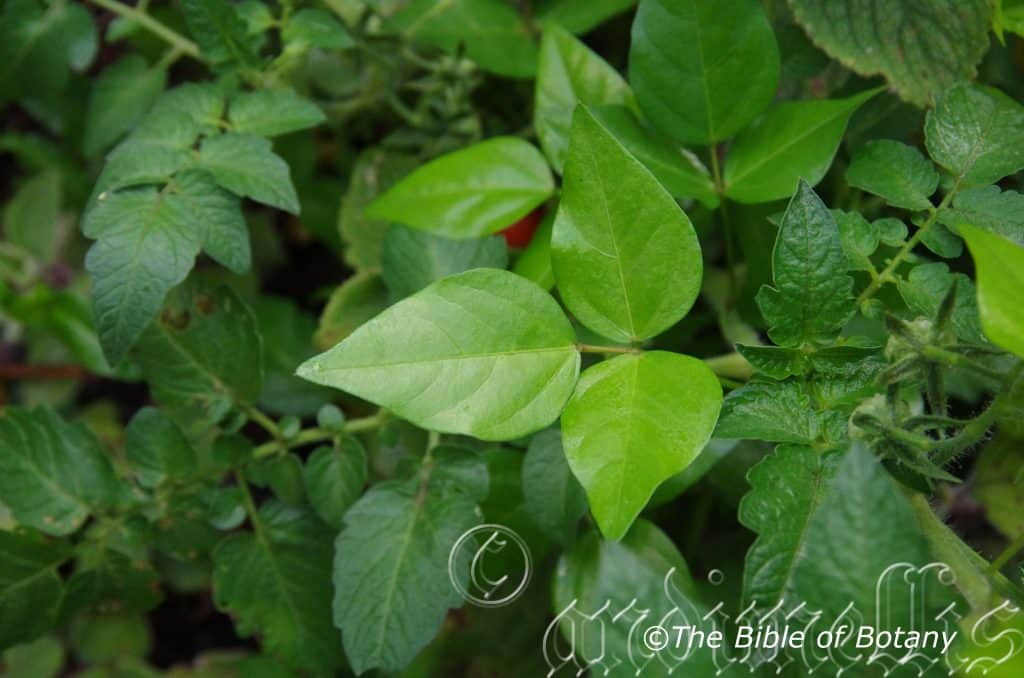
Author’s Garden The Pinnacles NSW

Author’s Garden The Pinnacles NSW

Author’s Garden The Pinnacles NSW

Author’s Garden The Pinnacles NSW
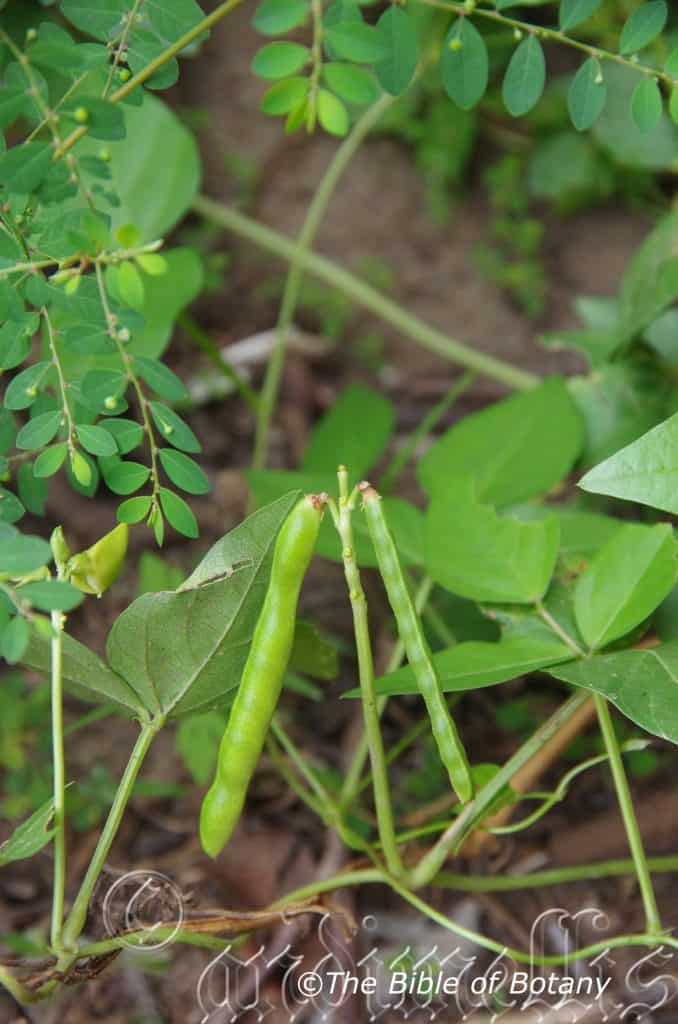
Author’s Garden The Pinnacles NSW
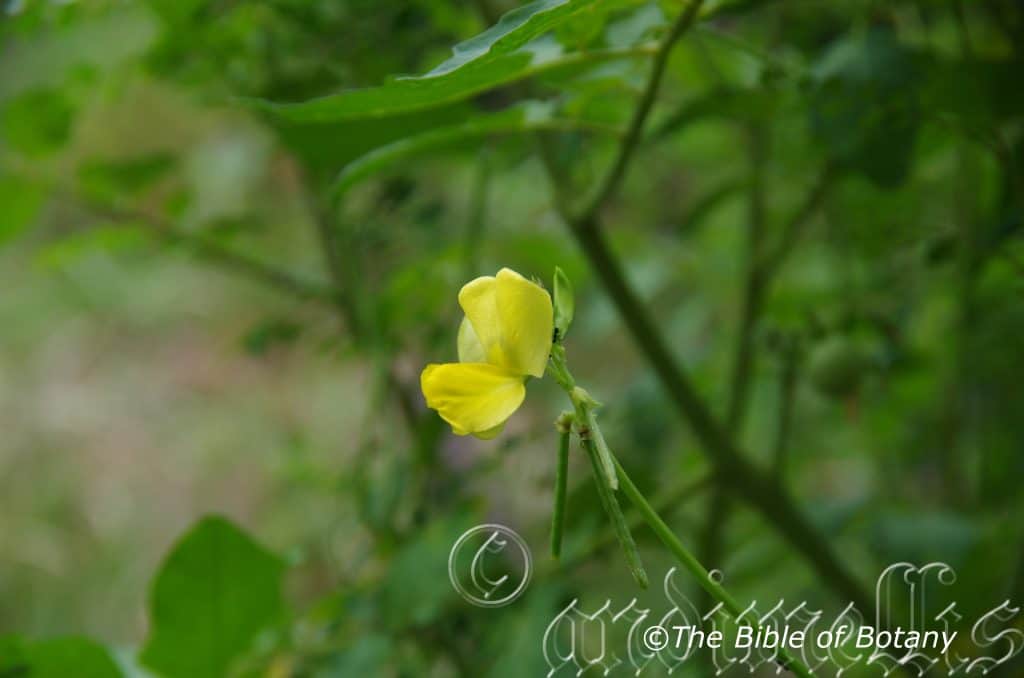
Author’s Garden The Pinnacles NSW
Vigna luteola
Vigna luteola
Classification:
Unranked: Eudicots
Class: Rosids
Order: Fabales
Family: Fabaceae
Subfamily: Faboideae
Tribe: Phaseoleae
Subtribe: Phaseolinae
Genus: Is named in honour of Dominico Vigna; 1577-1647, who was an Italian Professor of Botany and wrote an important commentary on the botanical works of the Greek botanist Theophrastus’s Enquiry into Plants and On the Causes of Plants.
Specie: From L?teum, which is Latin for yellow often with a red or orange tinge. It refers to flowers, being yellow, which often have an orange or reddish tinge.
Sub specie:
Common Name: Dalrymple Vigna, Cow Pea.
Distribution:
Vigna luteola is found at South Bay west on Groote Eylandt and on the Davenport Murchison Range south of Lake woods and north of the 3 Ways in the Northern Territory.
In the east it is found in several disjunct populations south from the tip of Cape York Peninsular in far north Queensland to the lower Macleay River in north eastern New South Wales. It is mainly found on and east of the Great Dividing Range to the coast.
There is an isolated population on Lord Howe Island.
https://avh.ala.org.au/occurrences/search?taxa=Vigna+luteola#tab_mapView
Habitat Aspect Climate:
Vigna luteola prefers dappled shade to full sun. It grows in moist Eucalyptus woodlands, more open eucalyptus forests or moist open woodland heaths, on the coastal wallums or moist shallow depressions. The altitude ranges from 5 meters ASL to 450 meters ASL.
The temperatures range from 2 degrees in July to 36 degrees in January.
The rainfall ranges from lows of 500mm to 3200mm average per annum.
Soil Requirements:
Vigna luteola prefers light sandy loams, gravelly light clays to heavy clays or light silts to heavy silts. The soils are usually derived from decomposed sandstone, granites or accumulated sands on the plains behind the frontal dunes or at times alluvial silts. The soils pH ranges from 4pH to 8pH. It does not tolerate water logged soils however prefers even moisture throughout the year. Non saline soils to moderately soils are tolerated.
Height & Spread:
Wild Plants: 0.3m to 1.5m by 2m to 4m.
Characteristics:
Vigna luteola grows as a small climber or prostrate perennial often with adventitious roots. The stems are usually moderately to densely covered with white appressed or spreading pulverulent hairs or at times are glabrous.
The trifoliate leaves are alternate. The ovate to lanceolate or elliptic leaflets measure 25mm to 100mm in length by 5mm to 50mm in diameter depending on the variety. The ovate to lanceolate stipules measure 2mm to 4mm in length. The petiole and petiolules are usually moderately to densely covered with white appressed or spreading pubescent hairs or at times are glabrous. The petiole measures 20mm to 80mm in length while the lateral petiolules measures 2mm to 3mm in length and the apical petiolule measures 8mm to 15mm in length. The bases are rounded while the apexes are acute to acuminate. The discolourous laminas are mid olive-green to deep green, moderately to densely covered with white appressed or spreading pubescent hairs or glabrous on the upper laminas while the lower laminas are paler. The laminas are flat and straight while the margins are entire. The mid vein and pinnate lateral veins are prominent on the lower laminas and are clearly visible from the upper laminas.
The inflorescences are racemes born singularly from the leaf axils. There are 2 to 12 individual flowers on a raceme. The peduncle, rachis and pedicels are moderately to densely covered with white appressed or spreading pubescent hairs or glabrous. The peduncle measures 50mm to 400mm in length while the rachis measures 15mm to 50mm in length and the pedicels measure 3mm to 5mm in length. The pale green calyx and calyx lobes are erect, glabrous and measure 3mm to 5mm in length while the 5 lobes measure 3mm to 5mm in length. The 2 upper lobes are united.
The yellow broad ovate standard petal has an emarginate apex and measures 10mm to 18mm in height by 14mm to 26mm in width.
The yellow broad oblong wing petals have truncate apexes, flare along the bottom and measure 13mm to 25mm in length by 12mm to 16mm in width.
The yellow, hemi orbicular keel petals have an obtuse apex and measures 15mm to 20mm in height by 12mm to 16mm in width. The flowers appear throughout the year with a peak in April and July.
Vigna luteola’s fruits are terete pods. The pods are glabrous to sparsely covered in white appressed pulverulent hairs. The pods are slightly restricted between the seeds and measure 40mm to 80mm in length by 7mm to 9mm in diameter. The green pods turn deep chocolate brown when ripe. The calyx is persistent on the ripe fruit. The 6 to 9 seeds are deep olive-grey to black with deep olive–grey markings. The obloidal, ovoidal, rectangular or hemi spherical seeds measure 4mm to 5mm in length by 2.5mm to 4mm in width.
Wildlife:
Vigna luteola‘s leaves are eaten by most macropods.
Cultivation:
Vigna luteola is a dense climber for a low fence or ground cover. It can be grown in association with other bush or rockery plants provided it is not overcrowded. In cultivation it grows from 0.2 meters to 1.8 meters in height by 3 meter to 4 meters in diameter when grown in the open.
It grows exceptionally well on most soils where a layer of leaf litter keeps the soil cool and moisture at an even level. If these requirements are met it can cope with temperatures as low as minus 2 degrees and up to 42 degrees. It is drought resistant once established. On the north coast of New South Wales it is inclined to become quite vigorous and will smother more delicate plants. Its profusion of flowers over a long period also means that a lot of seed is produced to add to its weediness.
It is very compatible with most native, tropical, tussock grasses that are grown for stock feeds. As it is a vigorous, twining creeper it may not be appropriate as a ground cover in new orchards. On the other hand it can be used to great effect on new fields where it can be used as a smothering crop planted at maximum density. It is most suitable for use in short term pasture or mixed pastures sown at a medium to low rate. As a green manure it produces good bulk particularly on mixed or heavy soils, drainage problem soils and soils with extremely low acidity and extremely high alkalinity.
It is also suitable in short term legume pastures up to 3 years or as a green manure where it is continually slashed at a high level. Left to flower and self-seed the fields can be used indefinitely with good farm practices. Vigna luteola for some unknown reason has never been accepted as a pasture crop nor has it achieved wide acceptance by farmers. It forms a good ground cover in semi shaded situations provided it is kept 2 meters back from orchard trees or permanent cropping areas.
Propagation:
Seeds: The seeds of Vigna luteola can be removed easily from the pods by placing the ripe capsules in a warm dry location for a few days in an envelope. Store the excess seeds in a dry container in the vegetable crisper of the refrigerator.
Sow seeds directly onto the garden at 1 meter centers in rows 1 meter a part for maximum coverage.
The seeds can be direct drilled into pastures at 1 meter centers in rows 2 meters apart. Sow the seeds at 25mm to 40mm in depth.
Fertilize using Seaweed, fish emulsion or organic chicken pellets soaked in water and apply the liquid on an alternate basis. Fertilize every 2 months until the plants are well established then on an annual basis in September or March to maintain better health, vitality and flowering.
Further Comments from Readers:
“Hi reader, it seems you use The Bible of Botany a lot. That’s great as we have great pleasure in bringing it to you! It’s a little awkward for us to ask, but our first aim is to purchase land approximately 1,600 hectares to link several parcels of N.P. into one at The Pinnacles NSW Australia, but we need your help. We’re not salespeople. We’re amateur botanists who have dedicated over 30 years to saving the environment in a practical way. We depend on donations to reach our goal. If you donate just $5, the price of your coffee this Sunday, We can help to keep the planet alive in a real way and continue to bring you regular updates and features on Australian plants all in one Botanical Bible. Any support is greatly appreciated. Thank you.”
In the spirit of reconciliation we acknowledge the Bundjalung, Gumbaynggirr and Yaegl and all aboriginal nations throughout Australia and their connections to land, sea and community. We pay our respect to their Elders past, present and future for the pleasures we have gained.
Vigna marina
Classification:
Unranked: Eudicots
Class: Rosids
Order: Fabales
Family: Fabaceae
Subfamily: Faboideae
Tribe: Phaseoleae
Subtribe: Phaseolinae
Genus: Is named in honour of Dominico Vigna; 1577-1647, who was an Italian Professor of Botany and wrote an important commentary on the botanical works of the Greek botanist Theophrastus’s Enquiry into Plants and On the Causes of Plants.
Specie: From Mar?num, which is Latin for of the sea. It refers to plants, which have a preference for a saline habitats.
Sub specie:
Common Name: Dune Bean.
Distribution:
Vigna marina is found from Elcho Island in the north east of the Northern Territory around the coast line to the Great Lakes in central coastal New South Wales.
https://avh.ala.org.au/occurrences/search?taxa=Vigna+marina#tab_mapView
Habitat Aspect Climate:
Vigna marina prefers full sun. It grows on the frontal dunes, back dunes and dry coastal wallums, estuaries or at times on low coastal headlands. The altitude ranges from 1 meters ASL to 30 meters ASL.
The temperatures range from 3 degrees in July to 40 degrees in January.
The rainfall ranges from lows of 650mm to 3200mm average per annum.
Soil Requirements:
Vigna marina prefers sands, sandy loams to fine silts. The soils are usually derived from accumulated beach sands, accumulated coral sands, accumulated estuarial silts or alluvial delta deposits. The soils pH ranges from 6.5pH to 8pH. It does not tolerate water logged soils. Non saline soils to the high end of very saline soils are tolerated as are salt laden winds.
Height & Spread:
Wild Plants: 0.2m to 0.4m by 2m to 4m.
Characteristics:
Vigna marina grows as a scrambling climber or trailing perennial with olive brown to olive green stems that are glabrous to sparsely covered in white, appressed puberulent hairs.
The alternate, trifoliate leaves, while the leaflets are broad elliptic to orbicular and measure 30mm to 90mm in length by 20mm to 70mm in diameter depending on the variety. The ovate stipules measure 2.5mm to 3.5mm in length. The petiole and petiolules are glabrous to sparsely covered in white, appressed puberulent hairs. The petiole measures 30mm to 60mm in length while the lateral petiolules measures 3mm to 5mm in length and the apical petiolule measures 8mm to 16mm in length. The bases are rounded while the apexes are obtuse or emarginate. The discolourous laminas are deep grass-green to deep green, glabrous to sparsely covered in white, appressed puberulent to sub sericeous hairs or glabrous on the upper laminas while the lower laminas are paler. The laminas are flat and straight or slightly recurve from the base to the margins and slightly decurve from the base to the apex or from near the base or near the apex. The margins are entire. The mid vein and pinnate lateral veins are prominent on the lower laminas and are clearly visible from the upper laminas.
The inflorescences of Vigna marina are racemes born singularly from the leaf axils. There are 4 to 7 individual flowers on a raceme. The yellow-green peduncle, rachis and pedicels are glabrous to sparsely covered with white, appressed puberulent hairs. The peduncle measures 40mm to 100mm in length while the rachis measures 15mm to 25mm in length and the pedicels measure 2mm to 5mm in length. The pale green calyx and calyx lobes are erect, glabrous and measure 2mm to 3mm in length while the 5 lobes measure 1mm to 41.5mm in length. The 2 upper lobes are united.
The bright, yellow broad ovate standard petal has a truncate base with an emarginate apex and measures 10mm to 12mm in height by 20mm to 25mm in width.
The bright, broad spreading, hemi orbicular, yellow wing petals measure 8mm to 10mm in length by 7mm to 9mm in width.
The bright, greenish-yellow, hemi orbicular keel petals have an obtuse apex and measures 7mm to 12mm in height by 6mm to 7mm in width. The flowers appear throughout the year whenever local conditions are favourable.
The fruits are terete, curved pods. The pods are glabrous, moderately to very restricted between the seeds and measure 35mm to 80mm in length by 7mm to 9mm in diameter. The green pods turn black while the diameter expands just prior to exploding when ripe. The calyx is persistent on the ripe fruit. The 2 to 6 seeds are deep olive brown to chocolate-brown. The obloidal to ovoidal seeds measure 5mm to 6mm in length by 4mm to 5mm in width and 3mm to 4mm in depth.
Wildlife:
Vigna marina leaves are eaten by most macropods.
Cultivation:
Vigna marina is a dense scrambling climber which excels as a ground cover. It can be grown in association with other bush or rockery plants provided it is not overcrowded and the soils are coarse sands. In cultivation it grows from 0.2 meters to 1.8 meters in height by 3 meter to 4 meters in diameter when grown in the open.
It grows exceptionally well on most soils where a layer of leaf litter keeps the soil cool and moisture at an even level. If these requirements are met it can cope with temperatures as low as minus 2 degrees and up to 42 degrees. It is drought resistant once established. On the north coast of New South Wales it is inclined to become quite vigorous and will smother more delicate plants. Its profusion of flowers over a long period also means that a lot of seed is produced to add to its weediness.
It would be worth while trying in semi-arid districts due to its hardiness. It is not compatible with most native, tropical, tussock grasses, which are grown for stock feeds. As it is a vigorous, twining creeper it may not be appropriate as a ground cover in new orchards in semi-arid districts. On the other hand it can be used to great effect on new fields where it can be used as a smothering crop planted at maximum density. It is most suitable for use in short term pastures or mixed pastures sown at a medium to low rate. As a green manure it produces good bulk particularly on hot, dry, saline, sandy soils with extremely high alkalinity and could be tested on moderately acid soils.
It is also suitable in short term legume pastures up to 3 years or as a green manure where it is continually slashed at a high level. Left to flower it may self-seed in the fields which means it could be used indefinitely with good farm practices. Vigna marina for some unknown reason has never been tried as a pasture. It would need full sun to grow at its best and should be kept 2 meters back from orchard trees or permanent cropping areas.
Propagation:
Seeds: The seeds of Vigna marina can be removed easily from the capsules by placing the ripe capsules in a warm dry location for a few days in an envelope. Store the excess seeds in the vegetable crisper of the refrigerator.
Sow fresh seeds directly onto a seed raising mix, keeping them moist not wet. Do not over water as the seeds will rot off before germination takes place. Place the trays in a cool shaded area with 30mm to 50mm shade cloth in the bush house. The seeds are erratic in germination and may take over 12 months for germination to be completed. When the seedlings are 20mm to 50mm tall, prick them out and plant them into 50mm native tubes using a good organic mix.
As the seedlings roots reach the bottom of the tubes plant them out into their permanent position. Do not delay.
Fertilize using Seaweed, fish emulsion or organic chicken pellets soaked in water and apply the liquid on an alternate basis. Fertilize every 2 months until the plants are well established then on an annual basis in September or March to maintain better health, vitality and flowering.
Further Comments from Readers:
“Hi reader, it seems you use The Bible of Botany a lot. That’s great as we have great pleasure in bringing it to you! It’s a little awkward for us to ask, but our first aim is to purchase land approximately 1,600 hectares to link several parcels of N.P. into one at The Pinnacles NSW Australia, but we need your help. We’re not salespeople. We’re amateur botanists who have dedicated over 30 years to saving the environment in a practical way. We depend on donations to reach our goal. If you donate just $5, the price of your coffee this Sunday, We can help to keep the planet alive in a real way and continue to bring you regular updates and features on Australian plants all in one Botanical Bible. Any support is greatly appreciated. Thank you.”
In the spirit of reconciliation we acknowledge the Bundjalung, Gumbaynggirr and Yaegl and all aboriginal nations throughout Australia and their connections to land, sea and community. We pay our respect to their Elders past, present and future for the pleasures we have gained.
Vigna vexillata
Classification:
Unranked: Eudicots
Class: Rosids
Order: Fabales
Family: Fabaceae
Subfamily: Faboideae
Tribe: Phaseoleae
Subtribe: Phaseolinae
Genus: Is named in honour of Dominico Vigna; 1577-1647, who was an Italian Professor of Botany and wrote an important commentary on the botanical works of the Greek botanist Theophrastus’s Enquiry into Plants and On the Causes of Plants.
Specie: From Vexillum, which is Latin for a standard or banner. It refers to standard petals which are much larger than other species in the genus.
Sub specie: Vigna vexillata subsp. angustifolia. From Angusta, which is Latin for narrow and Folium, which is Latin for foliage. It usually refers to leaves or at times the calyx lobes or petals, which are narrower than other species in the genus.
Sub specie: Vigna vexillata subsp. vexillata. From Vexillum, which is Latin for a standard or banner. It refers to standard petals which are much larger than other species in the genus.
Sub specie: Vigna vexillata subsp. youngiana. Is named in honour of Young but which Young cannot be substantiated.
Common Name:
Distribution:
Vigna vexillata subsp. angustifolia is found north of a line from Begal Bay on the Kimberley Ranges in northern coastal Western Australia across the top end to Cairns then down the east coast to the Hawkesbury River in central coastal New South Wales. It is mainly found on the Great Dividing Range to the coast.
Vigna vexillata subsp. vexillata is found the very top end of the Northern Territory with an isolated population further west on the Slate Islands off the Kimberley coast of Western Australia and Arukun on Cape York Peninsular in far north eastern Queensland.
Vigna vexillata subsp. youngiana is found the very top end of the Northern Territory with an isolated population further west at One Arm Point on Dampier Peninsular in north western, Western Australia.
On the east coast it is found south from the Torres Strait Islands in far north eastern Queensland to Port Macquarie in central coastal New South Wales.
https://avh.ala.org.au/occurrences/search?taxa=Vigna+vexillata#tab_mapView
Habitat Aspect Climate:
Vigna vexillata prefers dappled shade to full sun. It grows in moist sites in open woodlands, open heath lands, moist sclerophyll forests or coastal heaths. It is found on the eastern side of the western slopes, on the Great Dividing Range to the coast. The altitude ranges from 5 meters ASL to 850 meters ASL.
The temperatures range from minus 3 degrees in July to 38 degrees in January.
The rainfall ranges from lows of 550mm to 3200mm average per annum.
Soil Requirements:
Vigna vexillata prefer sands, sandy loams to medium clays. The soils are usually derived from decomposed sandstone, granites, brown basalts, black basalts, metamorphic rocks or at times accumulated sands. The soils pH ranges from 5pH to 6.5pH. It does not tolerate water logged soils. Non saline soils to moderately saline soils are tolerated.
Height & Spread:
Wild Plants:0.2m to 0.4m by 2m to 4m.
Characteristics:
Vigna vexillata grow as a scrambling climber or trailing perennial with brown-red to olive-green stems that are sparsely to densely covered brownish hirtellous and hirsute hairs.
The trifoliate leaves are alternate. The linear, ovate to narrow lanceolate leaflets measure 30mm to 160mm in length by 4mm to 30mm in diameter depending on the variety. The apical leaflet is longer than the lateral leaflets. The lanceolate stipules are cordate at the base and measure 5mm to 8mm in length. The petiole and petiolules are sparsely to densely covered in brown-red hirtellous and hirsute hairs. The petiole measures 20mm to 60mm in length while the lateral petiolules measures 3mm to 5mm in length and the apical petiolule measures 8mm to 15mm in length. The asymmetrical bases are rounded while the apexes are acute to acuminate. The discolourous laminas are mid grass-green to deep green, sparsely to moderately covered in brown-red, hirtellous and hirsute hairs on the upper laminas while the lower laminas are paler. The laminas are flat and straight or slightly recurve from the base to the margins and slightly decurve from the base to the apex or from near the base or near the apex. The margins are entire. The mid vein and pinnate lateral veins are prominent on the lower laminas and are clearly visible from the upper laminas.
The inflorescences are racemes born singularly from the leaf axils. There are usually 2 to 4 individual flowers on a raceme. The grass-green peduncle, rachis and pedicels are sparsely to moderately covered in brown-red, hirtellous and hirsute hairs. The peduncle measures 50mm to 350mm in length while the rachis measures 0mm to 5mm in length and the pedicels measure 2mm to 3mm in length.
The grass-green calyx and calyx lobes are erect, and covered in brown-red, hirtellous and hirsute hairs. The calyx tube measures 5mm to 7mm in length while the 5 lobes measure 2mm to 8mm in length.
The yellow, lilac, mauve pink or purple broad asymmetrical ovate standard petal has an emarginate apex while the margins are slightly undulating. The standard measures 14mm to 20mm in height by 20mm to 30mm in width.
The yellow, lilac, mauve pink or purple broad asymmetrical, broad spathulate wing petals have obtuse apexes with entire undulating margins. The wings measures 10mm to 15mm in length by 11mm to 16mm in width.
The yellow, lilac, mauve pink or purple, asymmetrical navicular, incurved to one side, keel petals have an emarginate apex and measures 14mm to 20mm in height by 20mm to 30mm in width. The flowers appear from late September to late February.
The fruits are terete, curved pods. The pods are not restricted between the seeds and measure 40mm to 140mm in length by 8.5mm to 10mm in diameter. The green pods turn deep chocolate brown almost black to deep brown and are densely covered in long brown to brownish-red hirsute hairs when ripe. The hirsute hairs measure 2mm to 4mm in length. The calyx is persistent on the ripe fruit. The 10 to 18 seeds are deep olive brown to chocolate-brown. The obloidal seeds measure 4mm to 5.5mm in length by 3mm to 3.5mm in diameter.
Confusing Subspecie:
Vigna vexillata’s subsp. angustifolia’s leaflets are narrow lanceolate and measure 20mm to 160mm in length by 4mm to 14mm in width. The leaves are sparsely to moderately covered in brownish hirsute hairs.
Vigna vexillata subsp. youngiana’s leaflets are broad lanceolate and measure 35mm to 70mm in length by 15mm to 30mm width. The leaves are moderately to densely covered in brownish hirsute hairs.
Wildlife:
Vigna vexillata’s leaves are eaten by most macropods. The tap root is edible. I have not tried it so cannot vouch for the taste.
Cultivation:
Vigna vexillata is a dense scrambling climber which excels as a ground cover. It can be grown in association with other bush or rockery plants provided it is not overcrowded and the soils are moist but well drained. In cultivation it grows from 0.1 meters to 0.3 meters in height by 3 meter to 4 meters in diameter when grown in the open away from other plants.
It grows exceptionally well on most soils where a layer of leaf litter keeps the soil cool and moisture at an even level. If these requirements are met it can cope with temperatures as low as minus 2 degrees and up to 42 degrees. It is drought resistant once established. On the north coast of New South Wales it is inclined to become quite vigorous and will smother more delicate plants. Its profusion of flowers over a long period also means that a lot of seed is produced to add to its weediness.
It is grows as a very dense fast growing procumbent perennial or with a little tip pruning in the early stages can be used as a small creeper on a fence. It usually reaches its full potential within 4 months from seed making it ideal for the new garden that needs greenery, colour with unusual shaped flowers and good quantities of bulk trash.
Propagation:
Seeds: The seeds can be removed easily from the capsules by placing the ripe capsules in a warm dry location for a few days in an envelope. Store the excess seeds in the vegetable crisper of the refrigerator.
Sow fresh seeds directly into a 50mm native tubes with a good quality mix. Keep them moist not wet. Do not over water as the seeds will rot off before germination takes place. Place the trays in a warm shaded area with 20mm shade cloth in the bush house. The seeds are usually quick to germinate and take over 7 days to several weeks for germination to be completed. When seedlings roots reach the bottom of the tubes plant them out into their permanent position. Do not delay in planting out as setback will occur very quickly.
Fertilize using Seaweed, fish emulsion or organic chicken pellets soaked in water and apply the liquid on an alternate basis. Fertilize every 2 months until the plants are well established then on an annual basis in September or March to maintain better health, vitality and flowering.
Further Comments from Readers:
“Hi reader, it seems you use The Bible of Botany a lot. That’s great as we have great pleasure in bringing it to you! It’s a little awkward for us to ask, but our first aim is to purchase land approximately 1,600 hectares to link several parcels of N.P. into one at The Pinnacles NSW Australia, but we need your help. We’re not salespeople. We’re amateur botanists who have dedicated over 30 years to saving the environment in a practical way. We depend on donations to reach our goal. If you donate just $5, the price of your coffee this Sunday, We can help to keep the planet alive in a real way and continue to bring you regular updates and features on Australian plants all in one Botanical Bible. Any support is greatly appreciated. Thank you.”
In the spirit of reconciliation we acknowledge the Bundjalung, Gumbaynggirr and Yaegl and all aboriginal nations throughout Australia and their connections to land, sea and community. We pay our respect to their Elders past, present and future for the pleasures we have gained.
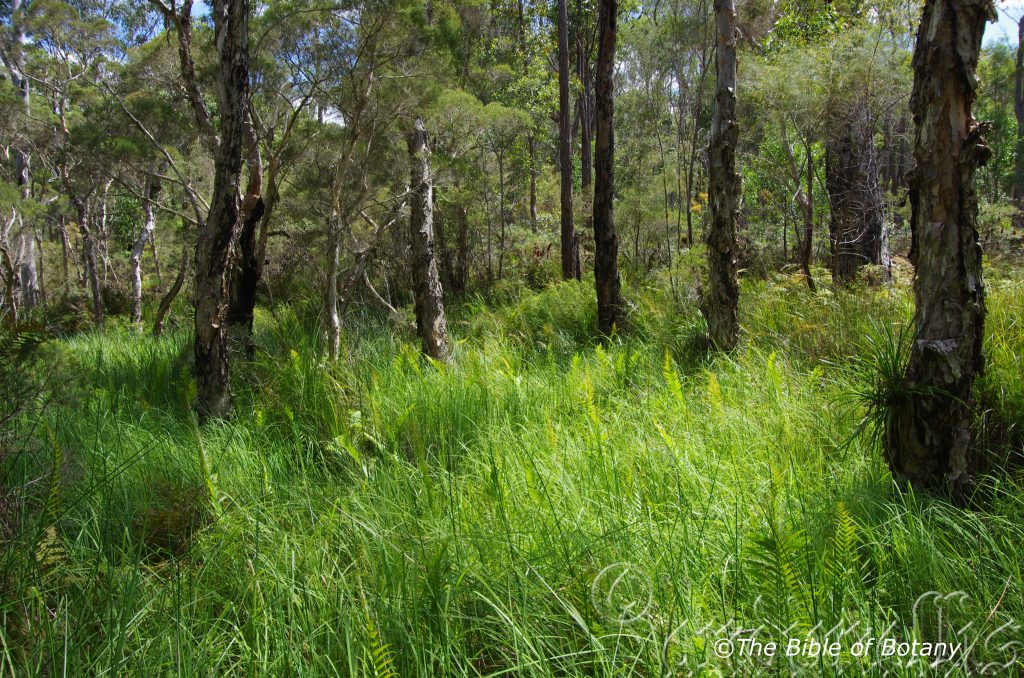
The Pinnacles NSW
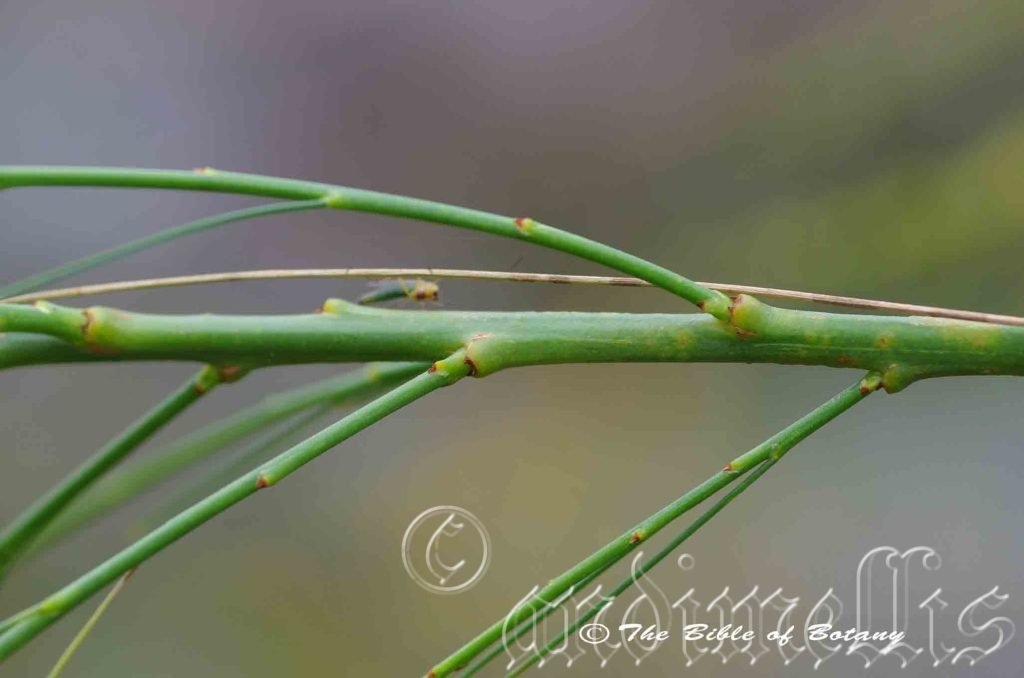
Coffs Harbour Botanic Gardens NSW
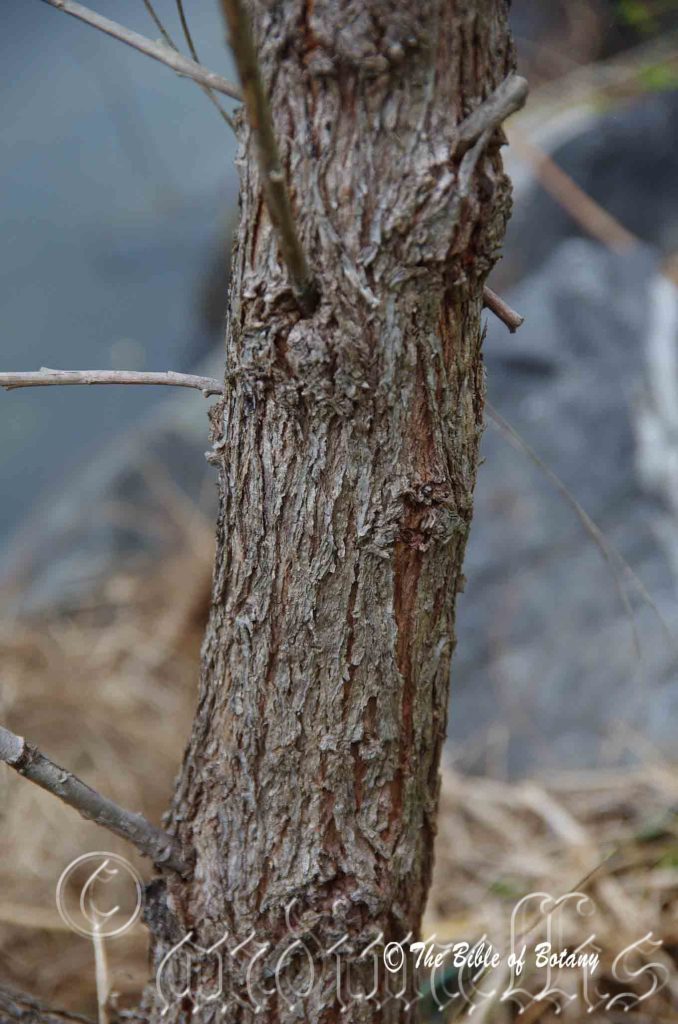
Coffs Harbour Botanic Gardens NSW

The Pinnacles NSW

Coffs Harbour Botanic Gardens NSW
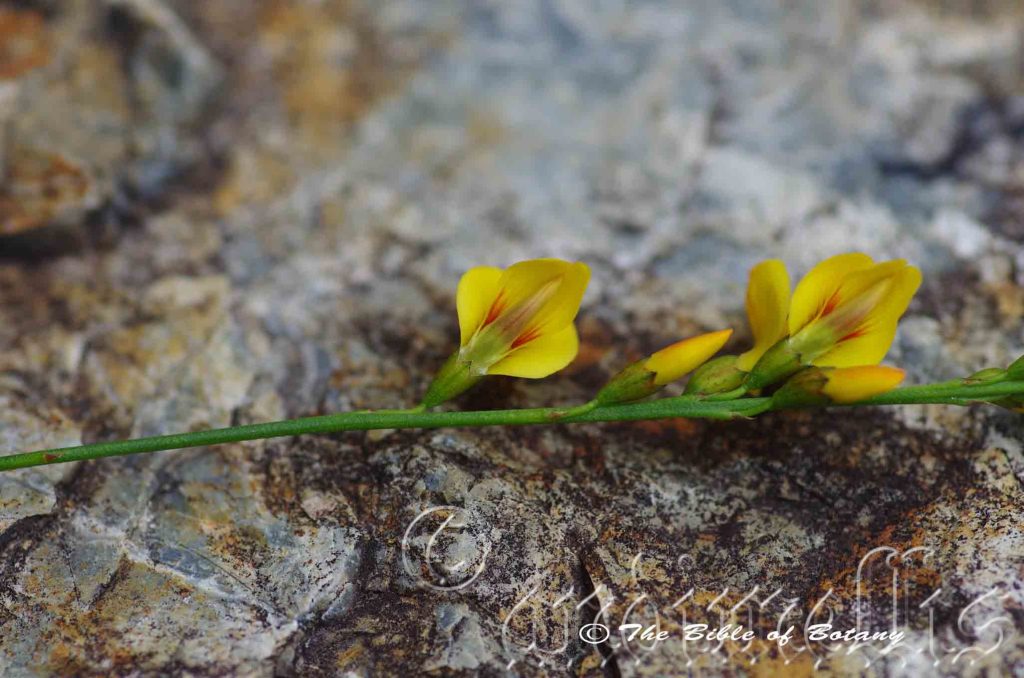
Coffs Harbour Botanic Gardens NSW
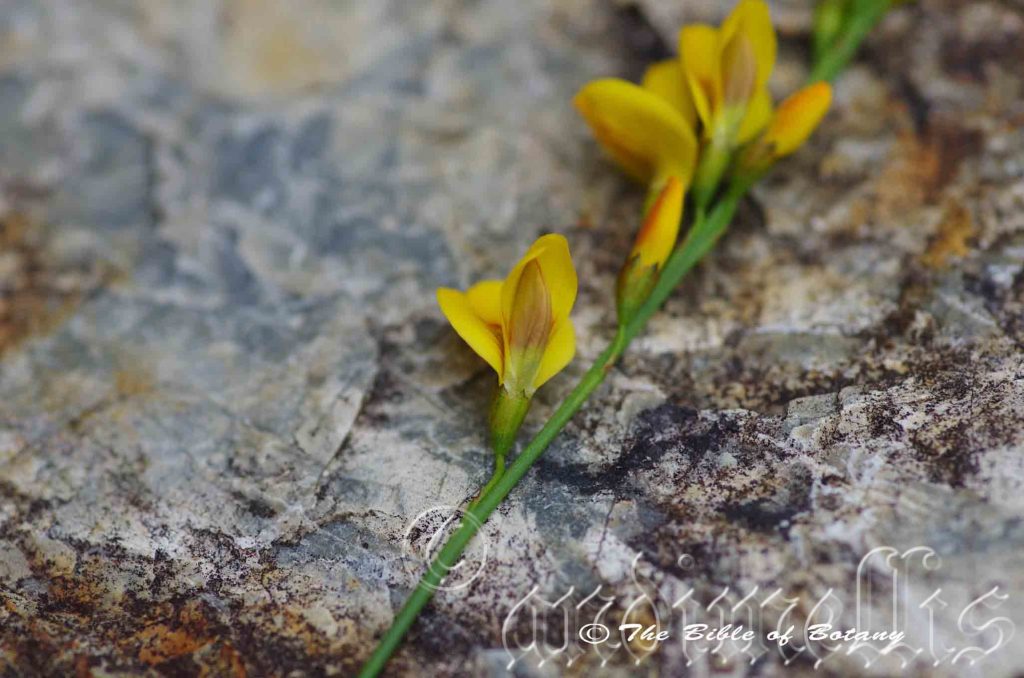
Coffs Harbour Botanic Gardens NSW
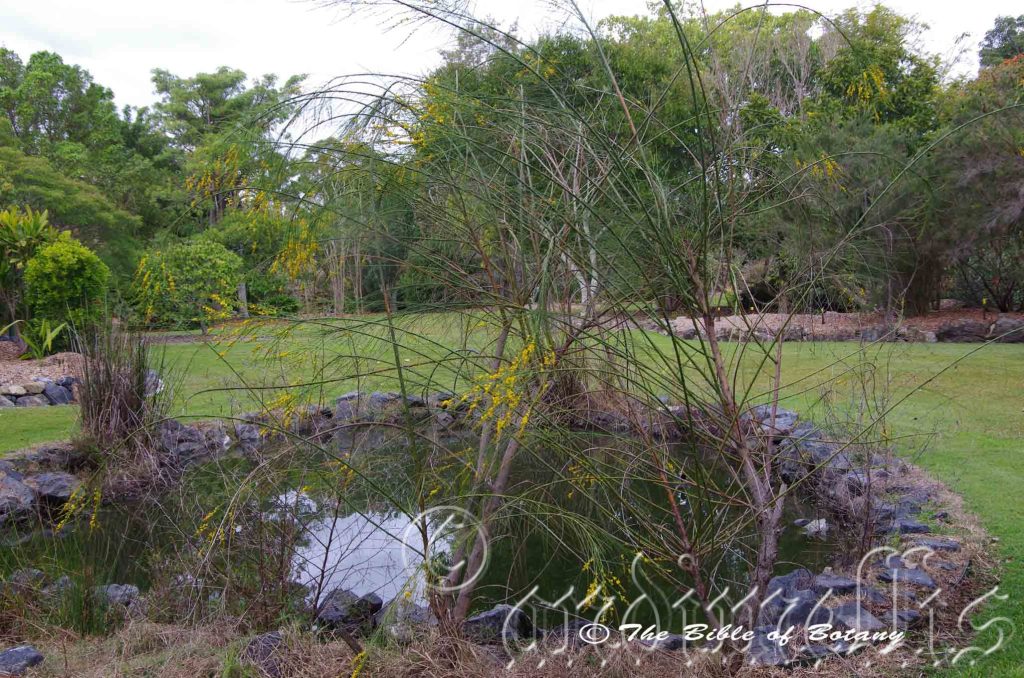
Coffs Harbour Botanic Gardens NSW
Viminaria juncea
Classification:
Unranked: Eudicots
Class: Rosids
Order: Fabales
Family: Fabaceae
Subfamily: Faboideae
Unranked: Mirbelioids
Genus: From V?min?le, which is Latin for long, slender, flexible stems. It refers to stems which are long, slender, flexible that were used in wicker work.
Specie: From Juncus, which is Ancient Greek for a rush or Jingere, which is Latin for to tie or bind. It refers to plants, which thrive wet places with reed like foliage which was used for weaving and tie articles together.
Sub specie:
Common Name: Golden Spray or Native Broom.
Distribution:
Viminaria juncea is found south from Kalbarri to Cape Arid National Park in south west Western Australia with an isolated population on the Ord River in the far north east of the state.
In the east it is mainly found east of the Great Dividing Range south from Maryborough to Wilson’s Promontory in southern Victoria where it moves north to near Wangaratta and west to the Tanunda River and Kangaroo Island in South Australia.
There is a single population in Tasmania around Cole Bay.
https://avh.ala.org.au/occurrences/search?taxa=Viminaria+juncea#tab_mapView
Habitat Aspect Climate:
Viminaria juncea prefer dappled shade to full sun. It grows in open moist woodlands, moist open heath lands, coastal plains in moist wallums, adjacent to swamps, in shallow depressions and along creek banks in more arid areas. The altitude ranges from 5 meters ASL to 165 meters ASL.
The temperatures range from minus 2 degrees in July to 38 degrees in January.
The rainfall ranges from lows of 350mm to 2100mm average per annum.
Soil Requirements:
Viminaria juncea prefer coarse sands, sandy loams, light clays or medium clays. The soils are usually derived from decomposed sandstones, granites, brown basalts, black basalts, metamorphic rocks, calcites or accumulated sands. The soils pH ranges from 4.5pH to 7.5pH. It does not tolerate water logged soils. Non saline soils to very saline soils are tolerated as are salt laden winds.
Height & Spread:
Wild Plants: 1.5m to 5m by 1m to 2.5m.
Characteristics:
Viminaria juncea grows as a small, open, slender tree with erect or pendulous branches. The mid bluish-green to mid greyish-green branches and stems are terete, striated and glabrous.
The leaves on mature trees are reduced to slender petioles that measure 30mm to 250mm in length in length. The narrow lanceolate stipules measure 1mm to 1.5mm in length. The bases are sessile while the apexes are acute. The concolourous laminas are mid bluish-green to mid greyish-green, dull and glabrous.
The leaves on juvenile plants are simple to trifoliate. The leaflets are oblong, narrow lanceolate or linear and measure 10mm to 40mm in length.
The inflorescences are long, narrow, cylindrical racemes born from the terminals. The bluish-green to grass-green peduncle, rachis and pedicels are glabrous. The peduncle measures 10mm to 30mm in length while the rachis measures 200mm to 400mm in length and the appressed pedicels measure 4.5mm to 6mm in length. The lanceolate bracts measure 2mm to 3mm in length.
The yellowish to fawnish-yellow calyx and calyx lobes are erect and glabrous. The calyx tube measures 4mm to 5mm in length while the 5 irregular, triangular to broad triangular lobes measure 0.4mm to 1mm in length.
The yellow, yellow tinged orange or orange tinged yellow with a red hallo near the base. The broad ovate standard petal has an emarginate apex while the margins are slightly undulating. The standard measures 14mm to 20mm in height by 18mm to 25mm in width.
The yellow, broad ovoid-spathulate wing petals have obtuse apexes fold around the keel petals. The wings measures 16mm to 20mm in length by 10mm to 12mm in width.
The usually deep yellow navicular keel petals have obtuse apexes and measures 12mm to 18mm in height by 9mm to 10mm in width. The flowers appear from late September to November.
The fruits are ovate glabrous pods. The pods are obliquely rostrate and measure 4mm to 5mm in length by 2mm to 3mm in diameter. The bluish-green pods turn black when ripe. The calyx lobes are persistent on the ripe fruit. The single reniform seed measures 2mm to 3mm in length by 1.6mm to 2.5mm in diameter.
Wildlife:
Viminaria juncea’s wildlife is unknown to the author.
Cultivation:
Viminaria juncea is a magnificent small tree or large shrub that is frequently overlooked by gardeners because of its spindly appearance in pots. It is suitable for small, medium and large sunny gardens close to the coast, semi-arid, temperate and sub-tropical areas, especially where the soils are sandy loams to medium clays which experience seasonal drainage problems. As garden subjects it grows to 3.5 meters to 4.5 meters in height by 2 meter to 2.5 meters in width when grown in the open. It is fast growing and is cold tolerant to temperatures as low as minus 4 degrees once established.
Many reports say it cannot be pruned however if it reacts similarly to Jacksonia scoparia we have found the opposite, in that pruning up to a third of the present season’s growth has no adverse effects on the plants; instead increases bushiness’ and promotes terminal growth and flowering is far more superior the following season. Plants that had been slashed on the farm came away with far more vigour than plants that were nearby. It responds very well to additional native fertilizers mulch and even soil moisture.
It is most suitable for use in rockeries, along drive ways or adjacent to natural bush gardens. Mass plantings of 5 or more plants even in small areas; really do the plants justification, especially when they are in flower and trimmed to different heights.
It is best used adjacent to small areas of bush close to paths or the house so their mass of yellow flowers can be viewed. Plants can be placed near a bend in the garden or along a long driveway with other smaller broad green leaf shrubs. They will gain a lot of attention and highlight the other broader green leaf shrubs. Mass plant them (4 to 8) with plants with deep green broader simple leaves in the foreground and with prostrate plants with broad deep green leaves. If fine leaf plants are used they will be lost in a miniature jungle that will look very untidy and uninteresting. Ensure that the whole plant or at least most of it is on display from most sections of the garden as the flowers are a real bonus.
When mass planting Viminaria juncea try leaving some of the plants as trees and trim the others so that they grow into shrubs of different heights to give depth and height to the area. I would not use other plants to the rear unless they were mature towering trees. Viminaria juncea looks magnificent when in flower especially when used as a central feature with shorter pink or red flowering plants in the foreground.
Propagation:
Seeds: Viminaria juncea require treatment before sowing. Pre-treat by placing the seeds into a glass of hot water not boiling. Allow the water to cool and leave to soak for 4 to 8 hours. Seeds that have not swollen repeat the exercise.
The seeds can be sown directly into a seed raising mix. Sow thinly and cover them with 5mm to 6mm of fine weed free mulch and keep moist. Place the tray in a warm sunny position. Harden plants off by placing them in full sun for a week before transplanting. This should be started when the seedlings are just 10mm tall. When the seedlings are 20mm to 25mm tall, prick them out and plant them into 50mm native tubes using a good organic mix. Be very careful at this stage as the plants are very susceptible to damping off as they resent root disturbance. I usually did this before watering the plants so the mix was semi dry.
Once the seedlings reach 100mm to 150mm in height they can be planted out into their permanent position.
Fertilize using Seaweed, fish emulsion or organic chicken pellets soaked in water and apply the liquid on an alternate basis. Fertilize every 2 months until the plants are well established then on an annual basis in September or March to maintain better health, vitality and flowering.
Further Comments from Readers:
“Hi reader, it seems you use The Bible of Botany a lot. That’s great as we have great pleasure in bringing it to you! It’s a little awkward for us to ask, but our first aim is to purchase land approximately 1,600 hectares to link several parcels of N.P. into one at The Pinnacles NSW Australia, but we need your help. We’re not salespeople. We’re amateur botanists who have dedicated over 30 years to saving the environment in a practical way. We depend on donations to reach our goal. If you donate just $5, the price of your coffee this Sunday, We can help to keep the planet alive in a real way and continue to bring you regular updates and features on Australian plants all in one Botanical Bible. Any support is greatly appreciated. Thank you.”
In the spirit of reconciliation we acknowledge the Bundjalung, Gumbaynggirr and Yaegl and all aboriginal nations throughout Australia and their connections to land, sea and community. We pay our respect to their Elders past, present and future for the pleasures we have gained.
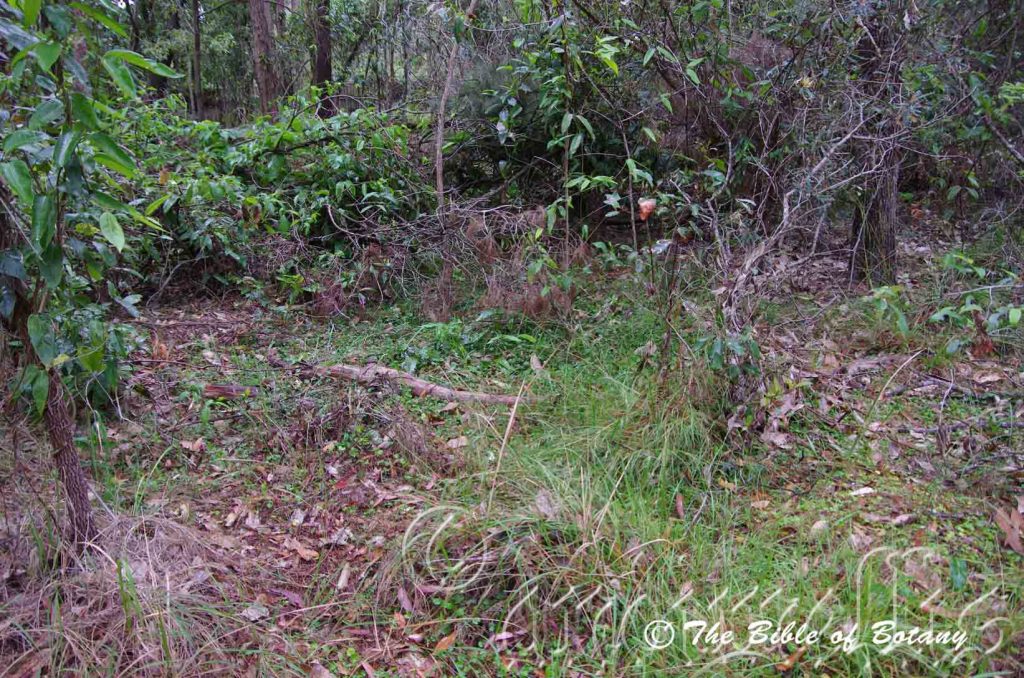
Boorkoom Yuraigir National Park NSW

Boorkoom Yuraigir National Park NSW
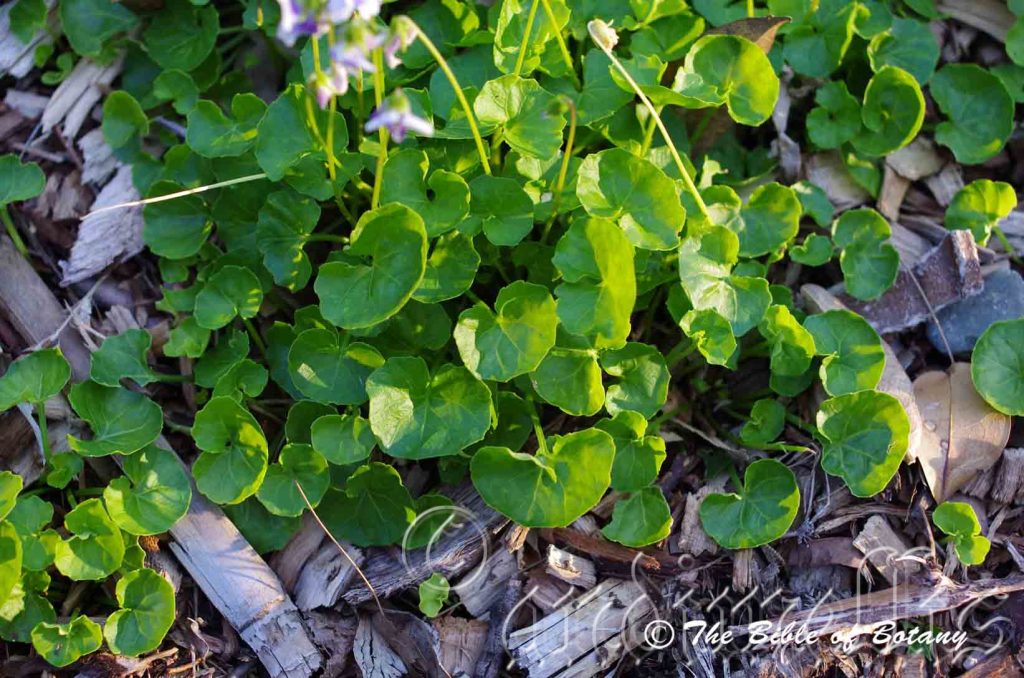
Mount Cootha Botanic Gardens Qld.
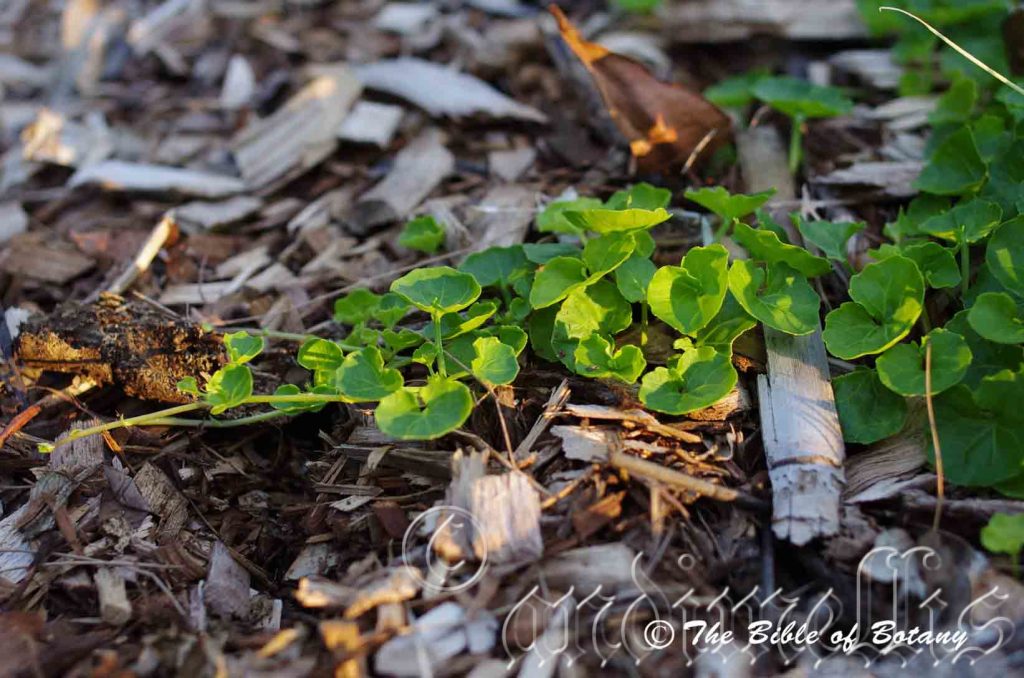
Mount Cootha Botanic Gardens Qld.

Author’s Garden NSW
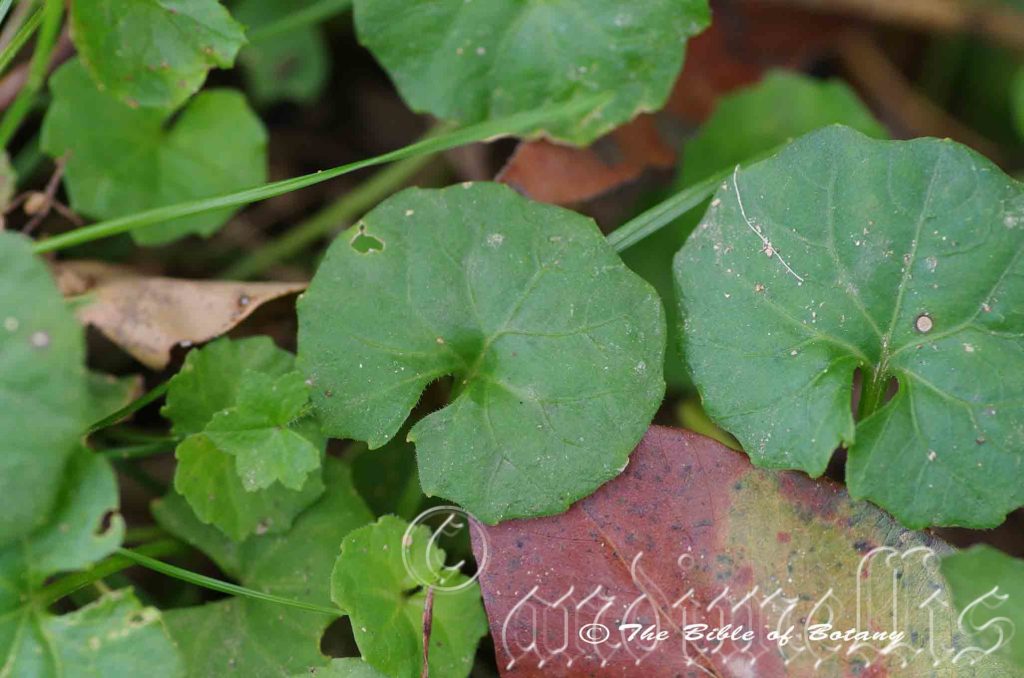
Nerang Qld.
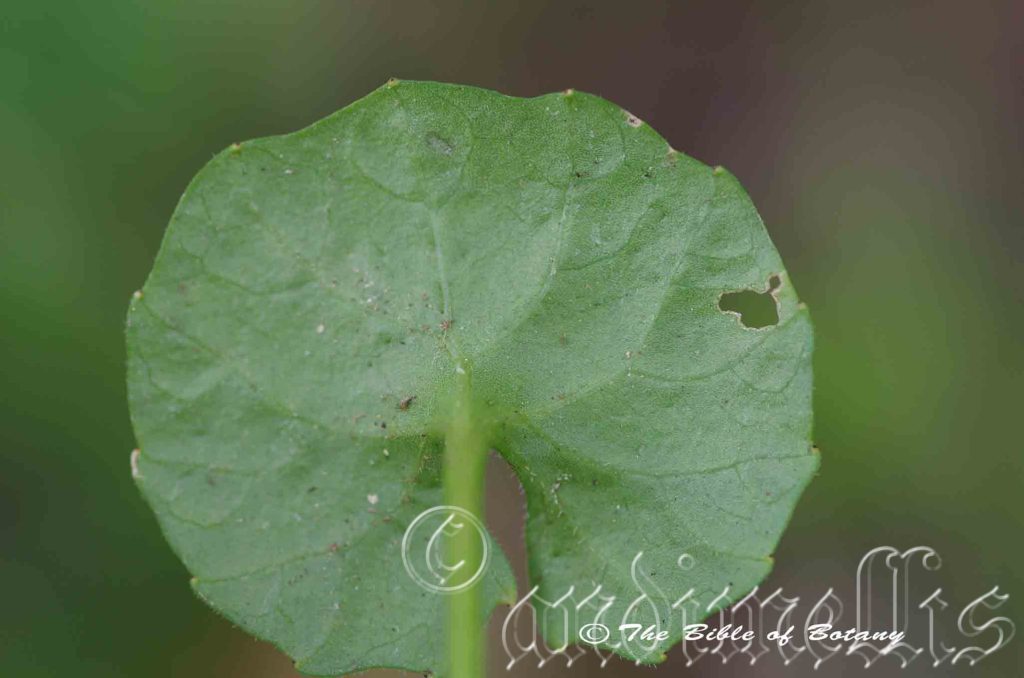
Nerang Qld.

Boorkoom Yuraigir National Park NSW
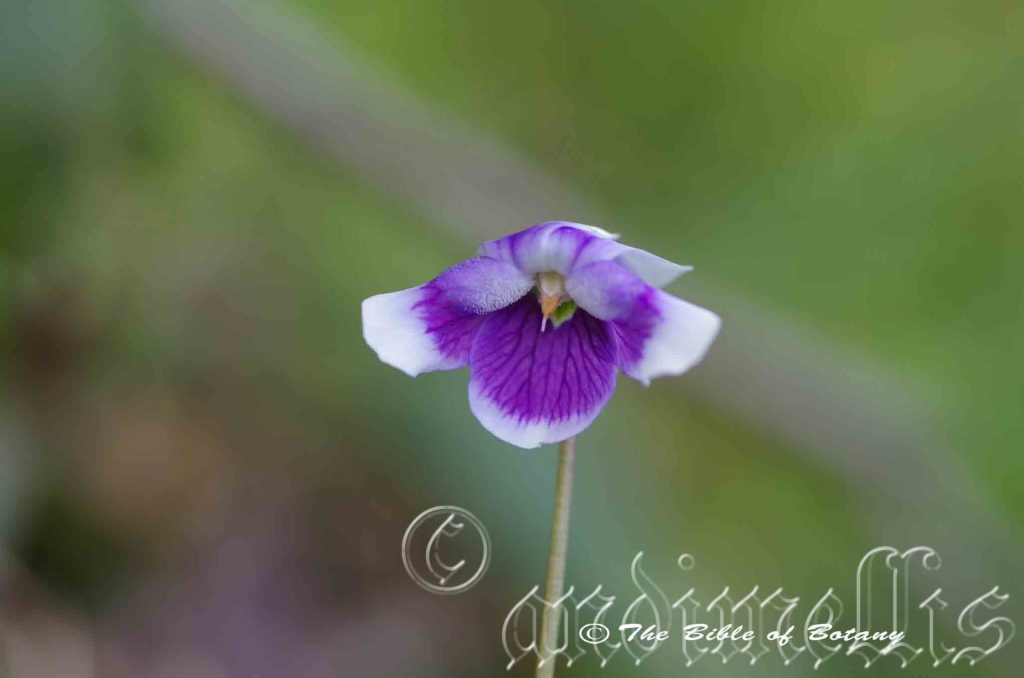
Author’s Garden NSW
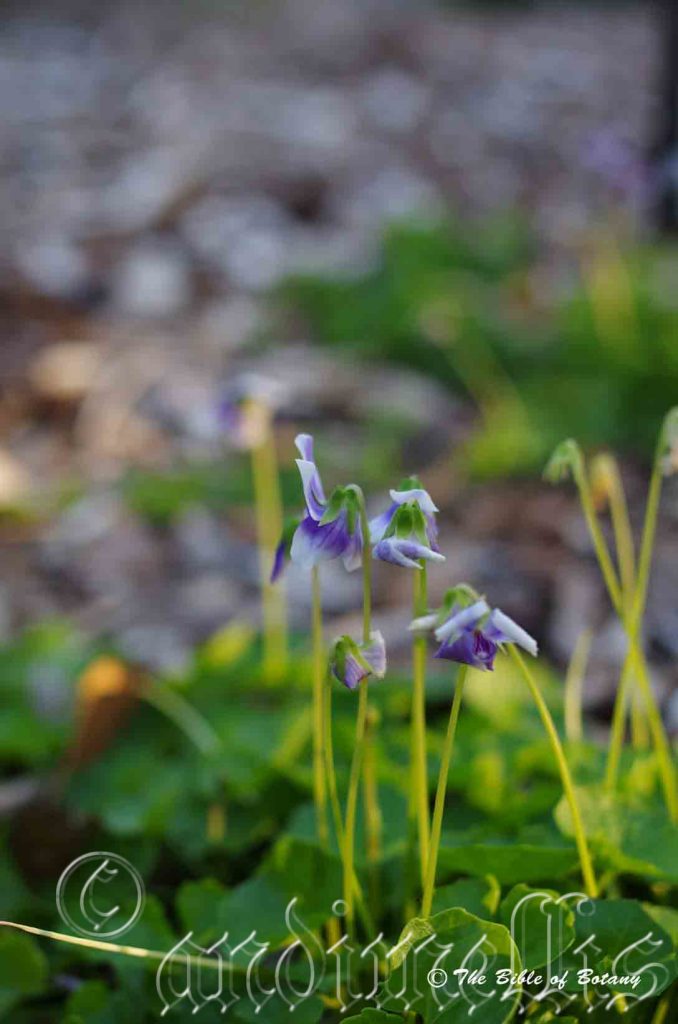
Mount Cootha Botanic Gardens Qld.
Viola banksii
Classification:
Unranked: Eudicots
Class: Rosids
Order: Malpighiales
Family: Violaceae
Subamily: Violoideae
Tribe: Violeae
Genus: From Viola, which is Latin for violet. It refers to the colour of the flowers in many species which are deep purple to violet.
Specie: Is named in honour of Sir Joseph Banks; 1743-1820, who was an English Naturalist and patron of botany who travelled with Captain Cook on the Endeavour to explore the east coast of Australia.
Sub specie:
Common Name: Ivy Viola.
Distribution:
Viola banksii is found south from Maroochydore in southern coastal Queensland to Kiama in southern coastal New South Wales. It is mainly found east of the Great Dividing Range.
https://avh.ala.org.au/occurrences/search?taxa=Viola+banksii#tab_mapView
Habitat Aspect Climate:
Viola banksii prefers dappled shade to semi shade. It grows adjacent to moist, cool sub-tropical rainforests, tropical rainforests, moist, Eucalyptus forests on slopes, mountains, along streams and drainage lines and behind the frontal dunes where permanent ground water occurs. The altitude ranges from 0.5 meters ASL to 40 meters ASL.
The temperatures range from minus 4 degrees in July to 34 degrees in January.
The rainfall ranges from lows of 350mm to 3200mm average per annum.
Soil Requirements:
Viola banksii prefers most types of sandy loams through to medium clays often with copious quantities of leaf litter and other natural debris. The soils are derived from most types of rocks including basalts, heavier sandstones, metamorphic, laterites, granites, shale and accumulated sands. The soils pH ranges from 5pH to 7pH. It does not tolerate water logged soils however soils usually remain moist throughout the year. Non saline soils to moderately saline soils are tolerated.
Height & Spread:
Wild Plants:0.03m to 0.08m by 0.08m to 0.15m.
Characteristics:
Viola banksii grows as a stoloniferous ground cover with pale grass-green, glabrous stems.
The tufted, orbicular to broadly reniform leaves of Viola banksii measure 18mm to 25mm in length by 30mm to 45mm in width. The petioles measure 30mm to 50mm in length. The narrow triangular to broad triangular stipule’s margins are usually covered with glandular teeth. The bases are truncate to cordate while the apexes are obtuse to broadly acute. The concolourous laminas are grass-green to deep grass-green, dull and glabrous. The laminas recurve slightly from the petiole to the margins and are convex between the radiating veins and lateral veins. The leaf margins are finely crenate. The main radiating veins and main laterals are slightly prominent on the lower laminas.
The inflorescences of Viola banksii are born singularly on a long scape. The grass-green scapes are glabrous and measure 70mm to 150mm in length. The 5 pale green sepals are elliptical with long narrowly acute apexes. The 2 lower and lateral sepals are pendulant while the upper lobe is recurved along the upper petals which are erect. The sepals measure 4mm to 5mm in length.
The lilac to violet or rarely white petals are usually white on the apex half and streaked with deep violet, red or yellow. The ovate anterior petal (Lower petal) is widest at the center point and has a green “V” blotch at the base to help distinguish it from Viola hederacea. The lower petal has a short spur while the 2 lateral petals have a white hirsute beard. The petals measure 7.5mm to 11mm in length by 5mm to 10mm in length.
The 2 white, inserted stamens have a nectary at the base. The filaments and anthers are white.
The deep orange-yellow to deep orange style is conical with a narrow linear white stigma and glabrous, green ovary. The style measures 3mm to 3.5mm in length by 1.8mm to 2mm in diameter at the base while the stigma measures 1mm to 1.2mm in length. Viola banksii’s flowers appear throughout the year with a peak in the warmer months or after good rain.
Viola banksii’s fruits are linear to narrowly ovoidal capsules. The capsules are glabrous and measure 4.5mm to 6.5mm in length by 2mm to 3mm in diameter. The green capsules turn white to pale creamy green externally and pale creamy fawn internally when ripe and split into 3 equal chambers. The calyx lobes are persistent on the ripe fruit. The small ellipsoidal seeds are deep purple-black and glossy and measure 1.8mm to 2.4mm in length.
Confusing species:
Viola banksii Mainly coastal New South Wales. Leaves are orbicular usually with a deep sinus and short irregular teeth. The anterior petal is elliptical to orbicular with or without a small notched truncate apex.
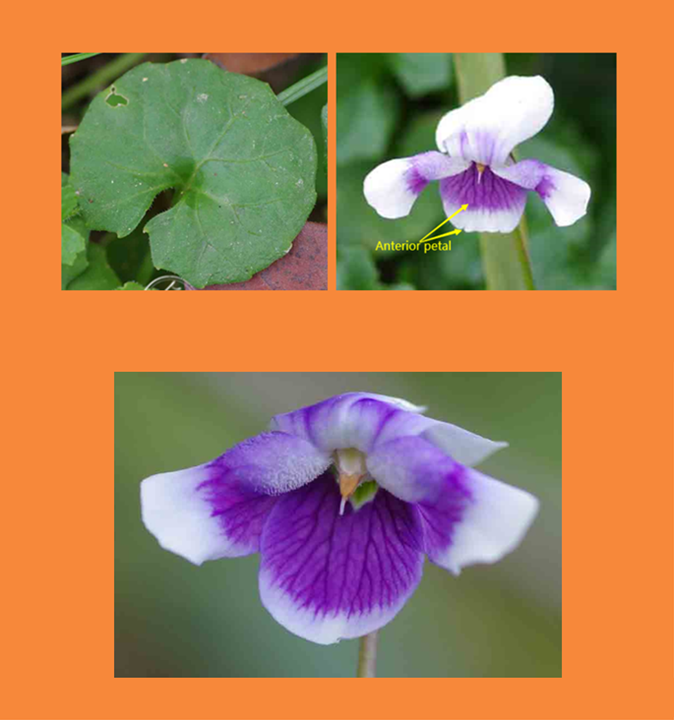
Viola hederacea Mainly north of Queensland, New South Wales border and further inland than Viola banksii in New South Wales. Leaves are broadly reniform to semi orbicular often without teeth. The anterior petal is ovate and somewhat pleated.

Viola eminens Lowland Victoria to South Australia. Leaves are broadly reniform often with a few broad irregular teeth. The anterior petal is obovate without an apical notch.
Viola x zophodes Highland Victoria. Leaves are broadly reniform to semi orbicular often with small irregular teeth. The anterior petal is ovate with an apical notch.
Wildlife:
Viola banksii’s flowers attract several butterflies including the Purple Crow butterfly (Euploea tulliolus) while its leaves feed the beautiful black, white and yellow larvae. Damage is usually minimal with plants recovering quickly.
Cultivation:
Viola banksii is a magnificent small herb that should be grown in association with other forest specie, partially shaded courtyards, around swimming pools and bush houses. It is ideal at the edge of a moist forest or deep in the center of the forest. In cultivation they will grow from 0.15 meters to 0.25 meters in height by 0.3 meters to 0.4 meters in diameter when grown in the open.
It grows exceptionally well on all moist soils, particularly those high in leaf litter where deep leaf litter keeps the soil cool and moisture at an even level where it can be mass planted. If these requirements are met it can cope with temperatures as low as minus 5 degrees and up to 36 degrees. They are moderately drought resistant once established.
Add to the above, if it is given an adequate supply of water and a little native fertilizer on a regular basis the plants will respond with excellent flowering and size over a long period. It is an excellent plant for moist semi shaded to shady areas around the house especially when mixed with medium size fern species.
It is best suited to areas that are water logged or have poor drainage like in small depressions and around sullage trenches. Place them at the bottom of slopes or retaining walls where moisture seeps out after rain.
Because of its size it is ideal in settings near ponds in court yards or moist rockeries rockery. It needs strong sunlight for at least half the day to very light shade to grow at their best.
Viola banksii also makes an excellent hanging basket plants especially where the humidity is high or where moisture can be sprayed over the trailing sections several times a day.
Propagation:
Seeds: Seeds of Viola banksii are very difficult to obtain and the best method of propagation is from division or stolons.
When seed is available sow the fresh seeds directly onto a seed raising mix, and cover them with 1mm of fine sand or mix. Keep the mix moist not wet. Place the trays in a cool shaded area with 50mm shade cloth in the bush house. The seeds are erratic in germination and may take over 10 weeks for germination to be completed. When the seedlings are 20mm to 50mm tall, prick them out and plant them into 100mm squat pots using a good organic mix.
As the seedlings roots reach the bottom of the pots plant them out into their permanent position and water thoroughly with our recommended fertilizer.
Carefully remove whole leafy stolons from the parent plants that have some established roots. Place them in a 100mm squat pot in a weed free mix being careful not to cover the crown. Place the pots in a cool spot under 50mm to 60mm shade and keep moist. Roots should appear at the bottom of the pots in 3 to 4 weeks in warm weather.
Fertilize using Seaweed, fish emulsion or organic chicken pellets soaked in water and apply the liquid on an alternate basis. Fertilize every 2 months until the plants are well established then on an annual basis in September or March to maintain better health, vitality and flowering.
Further Comments from Readers:
“Hi reader, it seems you use The Bible of Botany a lot. That’s great as we have great pleasure in bringing it to you! It’s a little awkward for us to ask, but our first aim is to purchase land approximately 1,600 hectares to link several parcels of N.P. into one at The Pinnacles NSW Australia, but we need your help. We’re not salespeople. We’re amateur botanists who have dedicated over 30 years to saving the environment in a practical way. We depend on donations to reach our goal. If you donate just $5, the price of your coffee this Sunday, We can help to keep the planet alive in a real way and continue to bring you regular updates and features on Australian plants all in one Botanical Bible. Any support is greatly appreciated. Thank you.”
In the spirit of reconciliation we acknowledge the Bundjalung, Gumbaynggirr and Yaegl and all aboriginal nations throughout Australia and their connections to land, sea and community. We pay our respect to their Elders past, present and future for the pleasures we have gained.

Ebor NSW
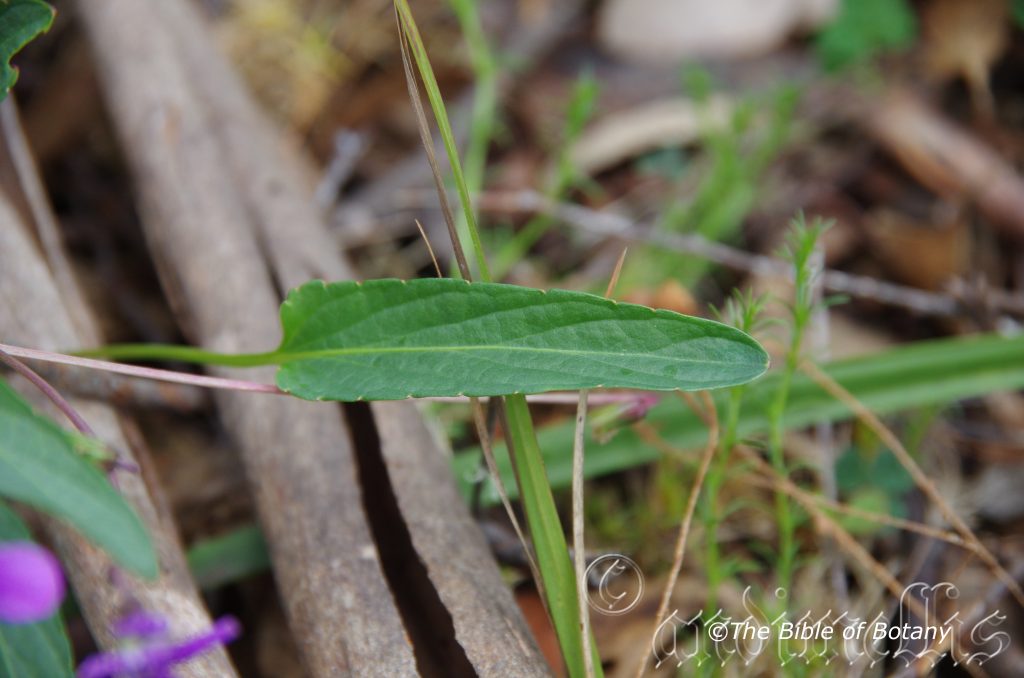
Ebor NSW
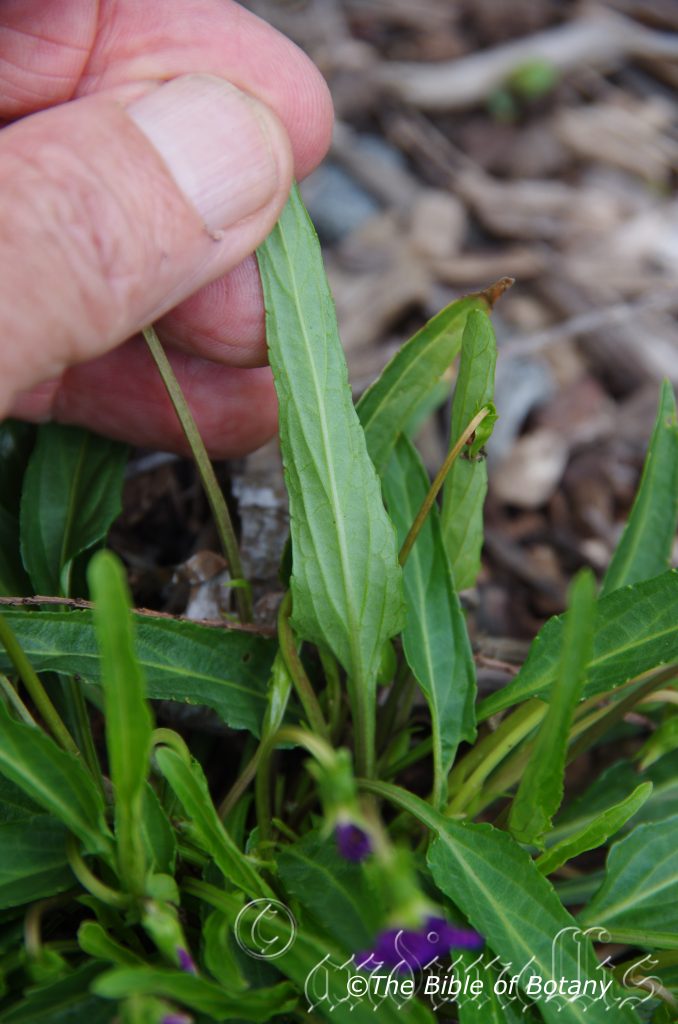
Author’s Garden NSW
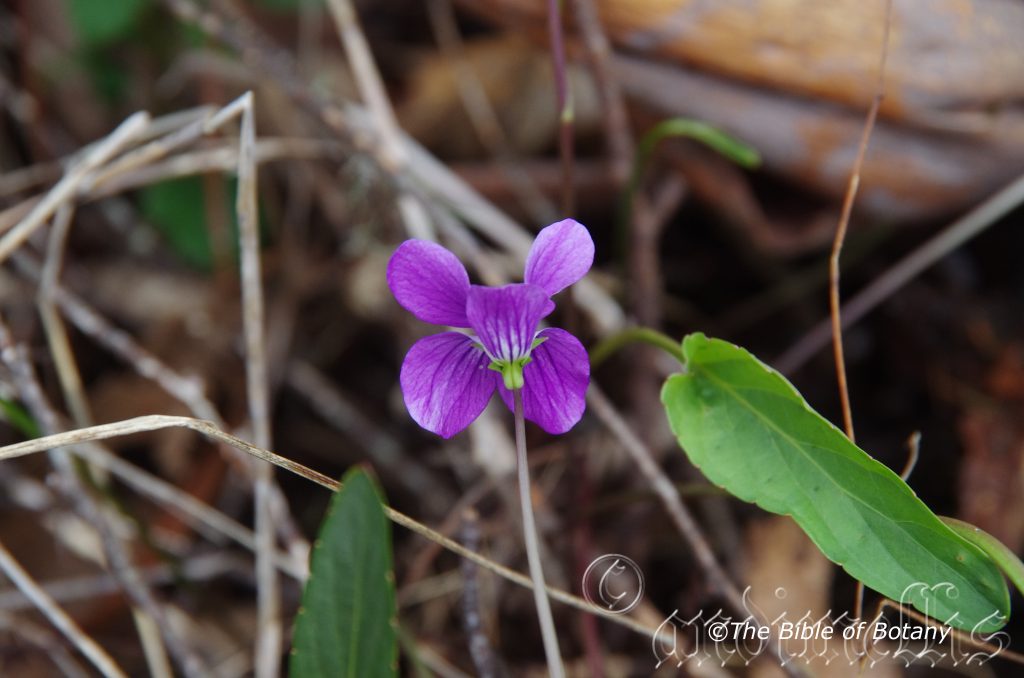
Ebor NSW
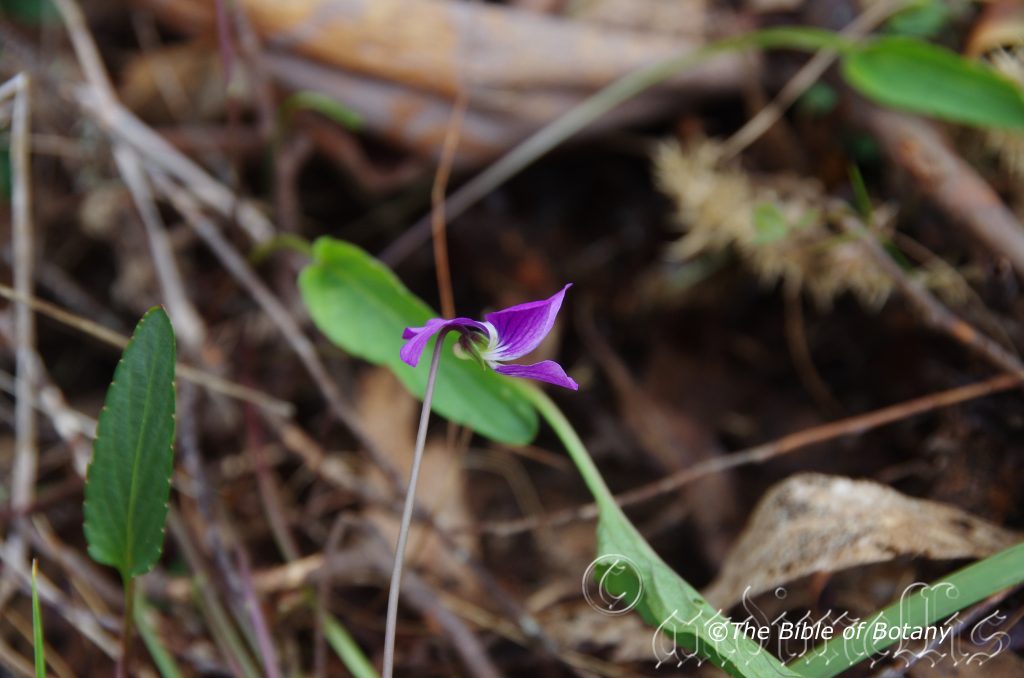
Ebor NSW
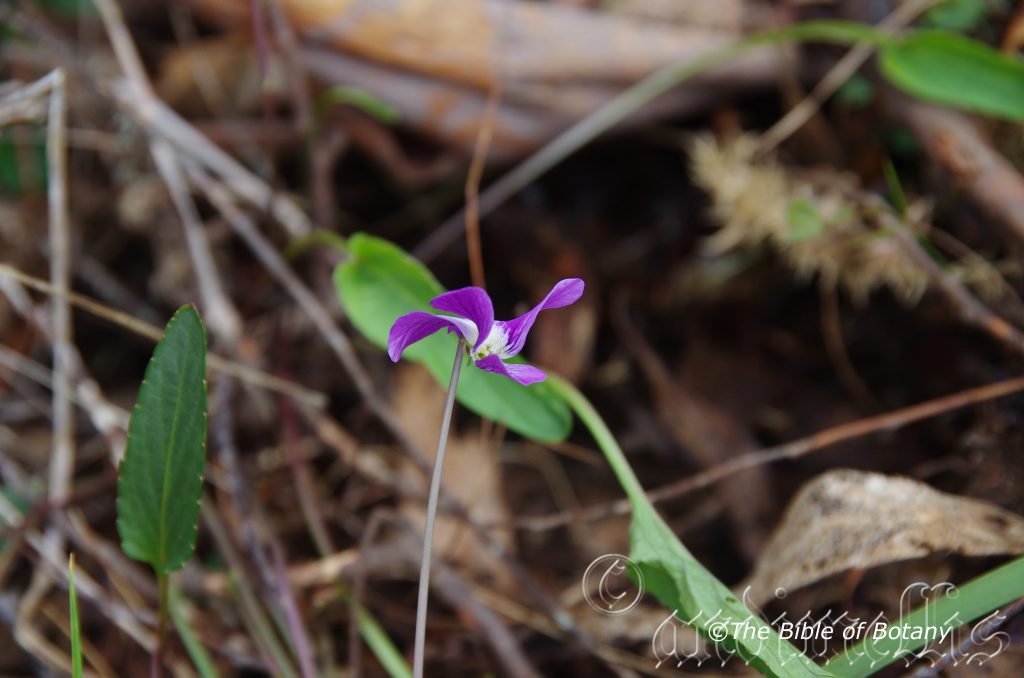
Ebor NSW
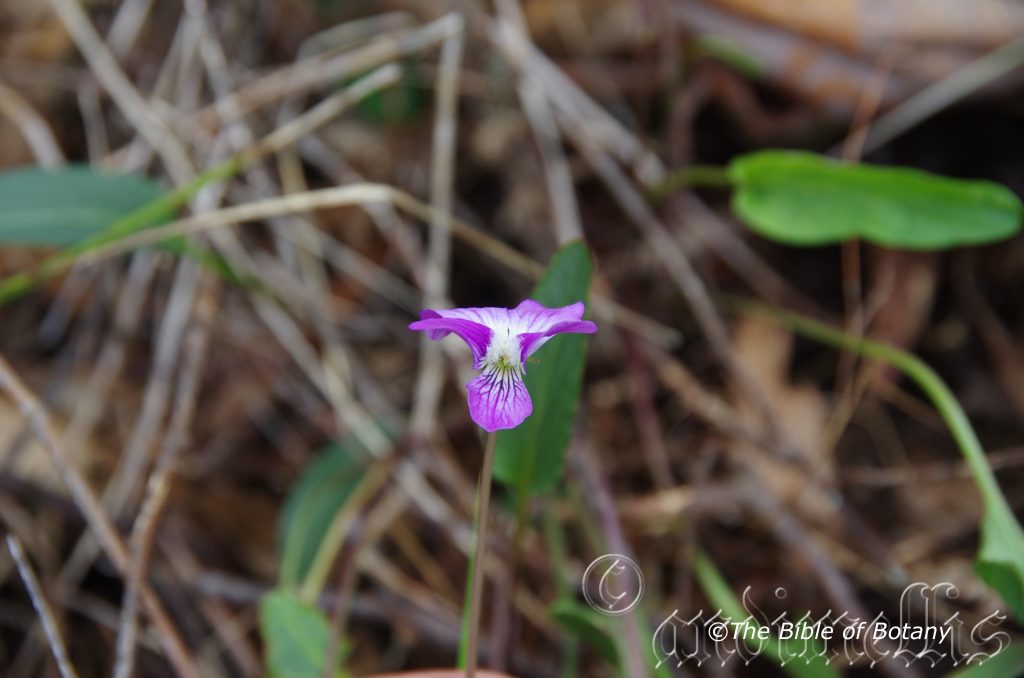
Ebor NSW
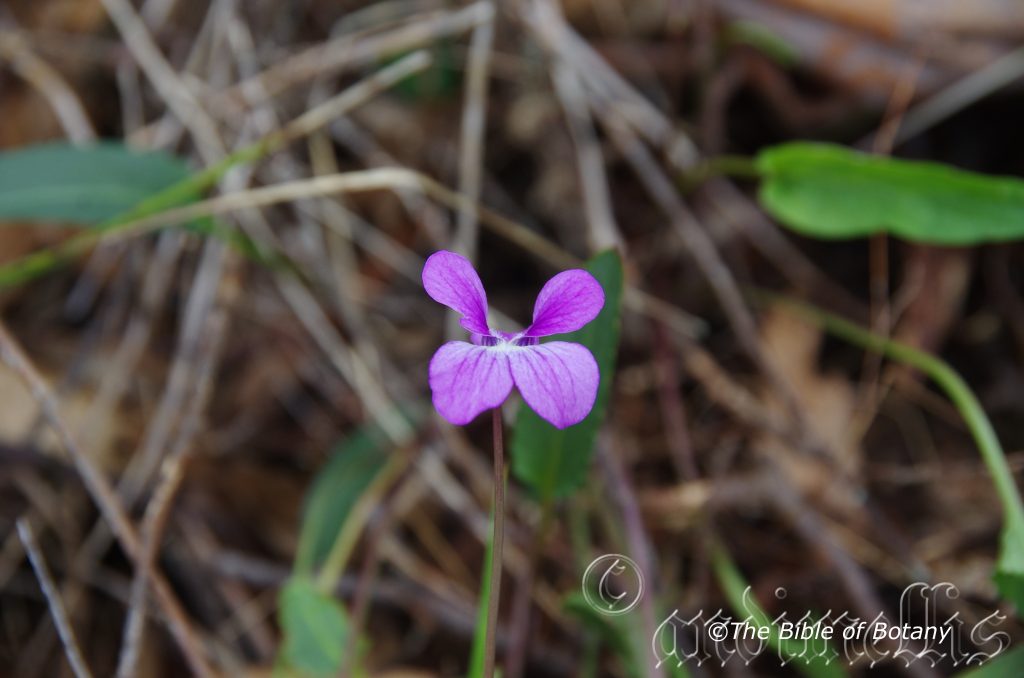
Ebor NSW

Author’s Garden NSW
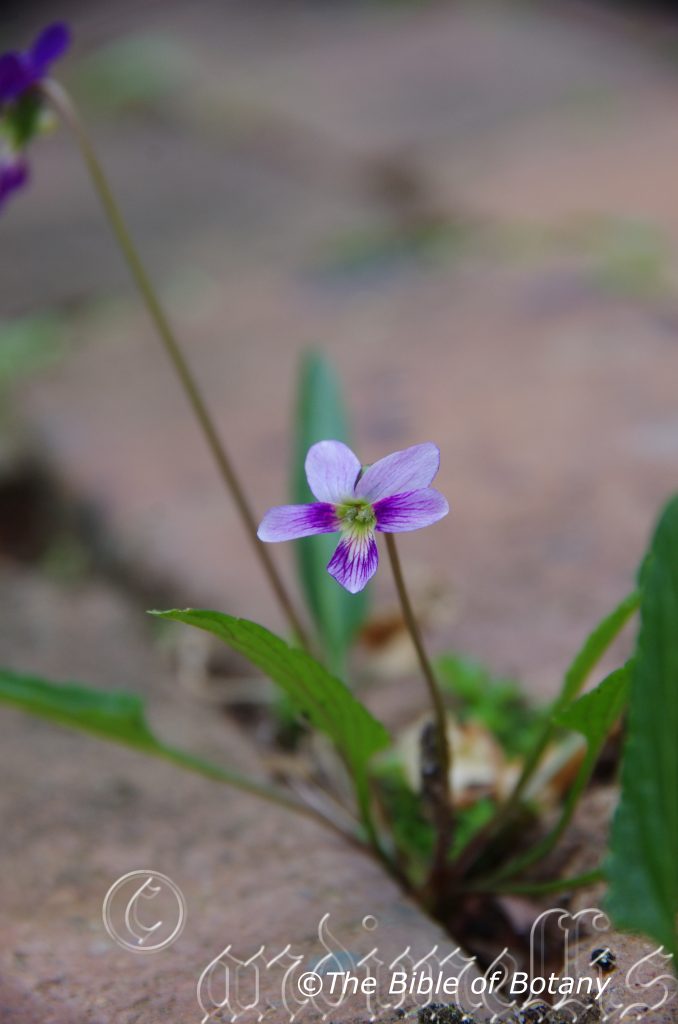
Author’s Garden NSW
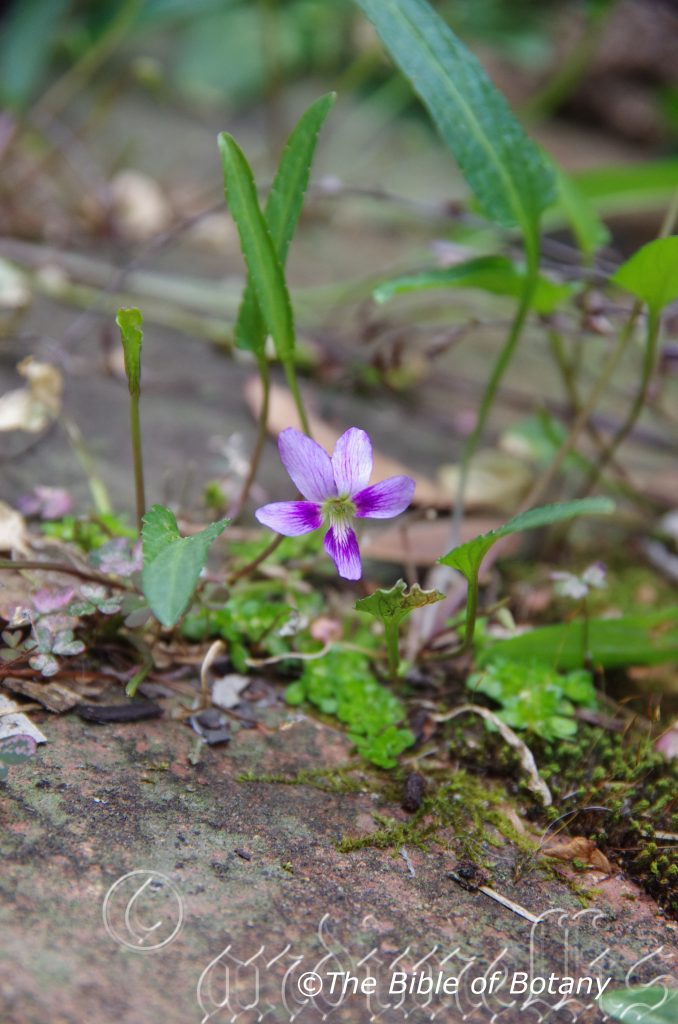
Author’s Garden NSW

Author’s Garden NSW

Author’s Garden NSW
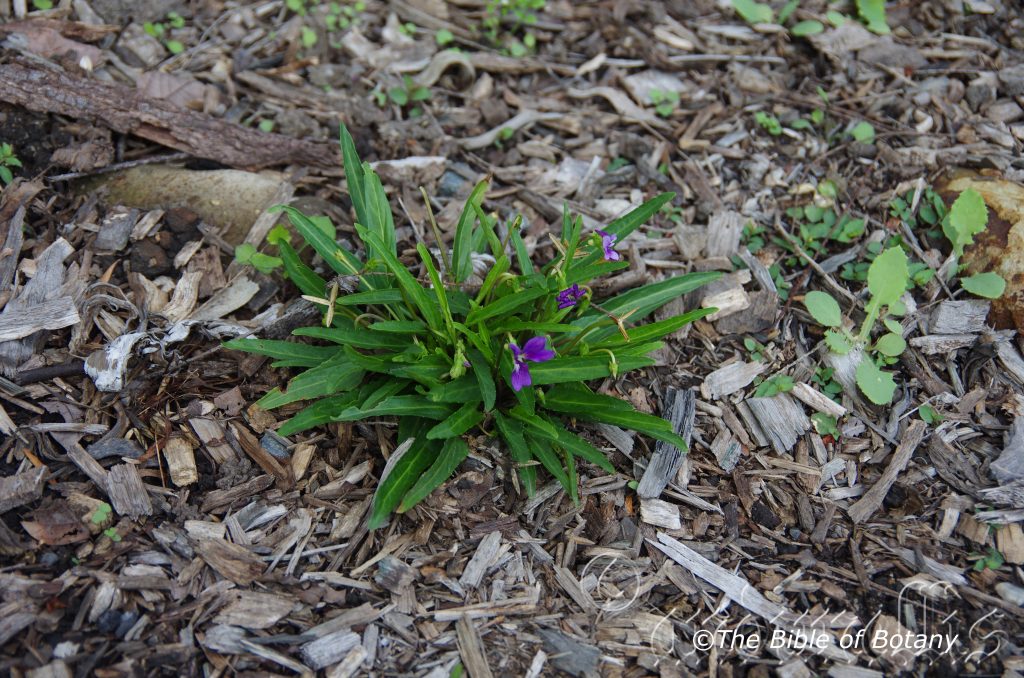
Author’s Garden NSW
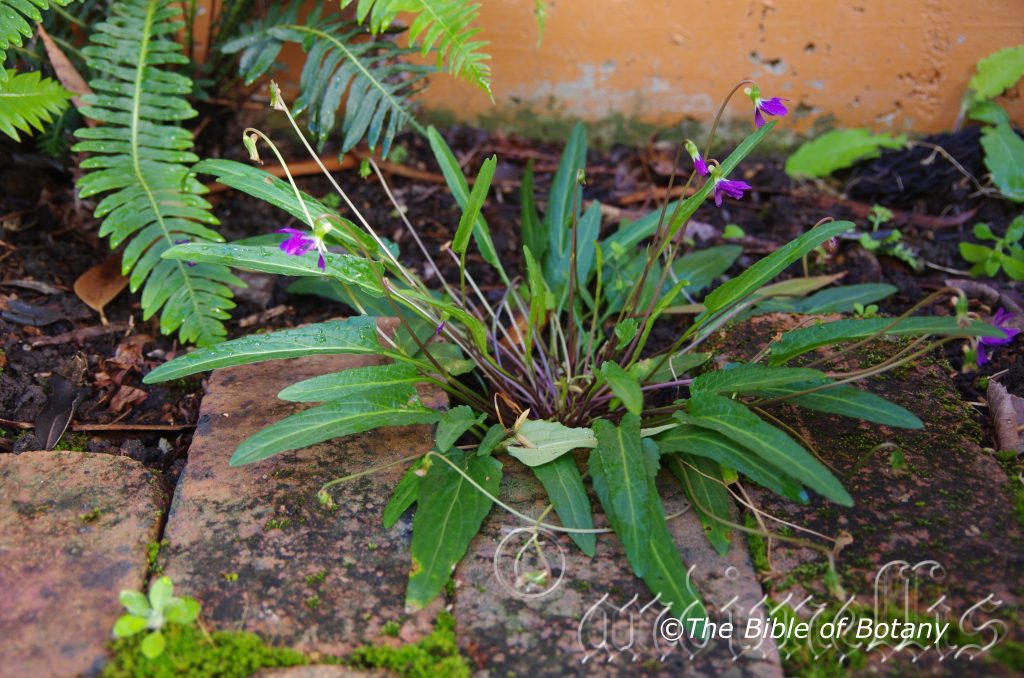
Author’s Garden NSW
Viola betonicifolia
Classification:
Unranked: Eudicots
Class: Rosids
Order: Malpighiales
Family: Violaceae
Subamily: Violoideae
Tribe: Violeae
Genus: From Viola, which is Latin for violet. It refers to the colour of the flowers in many species which are deep purple to violet.
Specie: From Betonie, which is German or Betoine which is French for the Stahys genus and Folium, which is Latin for foliage. It refers to the common name for the European flowering plant Stachys officincalis being Betony.
Sub specie:
Common Name: Native Violet or Showy Violet.
Distribution:
Viola betonicifolia is found south from Cardwell and the Undara Volcanic National Park to Wilson’s Promontory in southern Victoria then west to the Narracoorte Coastal plains in south east South Australia. It is found on the central Western Plains, Western Slopes, on and east of the Great Dividing Range.
In South Australia it is found from Adelaide south along the Fleurieu Peninsular.
https://avh.ala.org.au/occurrences/search?taxa=Viola+betonicifolia#tab_mapView
Habitat Aspect Climate:
Viola betonicifolia prefers dappled shade to semi shade. It grows adjacent to and in moist cool tropical rainforests, moist, warm temperate rainforests, moist Eucalyptus forests or moist gallery forests on flats, slopes or mountains. The altitude ranges from 2 meters ASL to 1400 meters ASL.
The temperatures range from minus 4 degrees in July to 34 degrees in January.
The rainfall ranges from lows of 800mm to 2000mm average per annum.
Soil Requirements:
Viola betonicifolia prefers most types of sandy loams to medium clays. The soils are usually derived from most types of rocks including brown basalts, black basalts, sandstones, granites, metamorphic, laterites, shales or limestones. The soils pH ranges from 4.5pH to 7.5pH. It does not tolerate water logged soils however soils usually remain moist throughout the year. Non saline soils to moderately saline soils are tolerated.
Height & Spread:
Wild Plants: 0.15m to 0.2m by 0.2m to 0.25m.
Characteristics:
Viola betonicifolia grows as a perennial herb with short erect herbaceous fleshy stems. The stems are deep green and glabrous to covered in white puberulent hairs.
The alternate, erect, narrowly sagittate leaves of Viola betonicifolia measure 10mm to 60mm in length by 5mm to 25mm in width near the base. The bases are sagittate while the apexes are obtuse to bluntly acuminate. The concolourous laminas are sea-green to deep sea-green, dull to semi glossy and glabrous. The leaf margins are entire or shallowly crenate while the laminas recurve slightly from the mid vein to the margins and decurve slightly from the base to the apexes. The lamina is convex between the lateral veins. The mid vein and main laterals are prominent on the lower laminas and are distinctly visible from the upper laminas. The laciniate stipules are linear, entire and strongly fused to the base of the petiole. The petioles measure 1.5mm to 8mm in length.
The inflorescences of Viola betonicifolia are born singularly on a long scape from the base. The green to purple-green scapes are glabrous to sparsely covered in white puberulent hairs near the base and measure 60mm to 200mm in length. The 5 pale green tinges purple sepals are elliptical with long narrowly acute apexes. The 2 lower and lateral sepals are pendulant while the upper lobe is recurved along the upper petals. The sepals measure 3mm to 6mm in length. The lilac to violet or rarely white petals are usually white on the basal half and streaked with deep violet, red or yellow. The lower petals have a short spur while the 2 lateral petals are covered in white villous hairs. The petals measure 9mm to 15mm in length by 5mm to 9mm in length.
The 2 white, inserted stamens have a nectary at the base. The filaments and anthers are white.
The deep orange-yellow to deep orange style is conical with a narrow linear white stigma and glabrous, green ovary. The style measures 3mm to 3.5mm in length by 1.8mm to 2mm in diameter at the base while the stigma measures 1mm to 1.2mm in length. The flowers appear from late September through to Late February.
Viola betonicifolia’s fruits are ellipsoidal capsules. The capsules are glabrous split into 3 chambers revealing the small ovoidal black seeds. The capsules measure 7mm to 13mm in length by 3.2mm to 5.2mm in diameter. The green capsules turn grey-brown to fawn externally and pale creamy fawn internally when ripe. The calyx lobes are persistent on the ripe fruit.
Wildlife:
Viola betonicifolia’s flowers attract several butterflies including the Purple Crow butterfly, Euploea tulliolus while the leaves are food for the beautiful black, white and yellow larvae.
Cultivation:
Viola betonicifolia is a magnificent small herb that should be grown in association with other forest species, partially shaded courtyards, around swimming pools and bush houses. It is ideal at the edge of a moist forest or deep in the center of the forest. In cultivation it grows from 0.2 meters to 0.3 meters in height by 0.3 meters to 0.4 meters in diameter when grown in the open.
It grows exceptionally well on all soils particularly those high in leaf litter where deep leaf litter keeps the soil cool and moisture at an even level where it can be mass planted. If these requirements are met it can cope with temperatures as low as minus 5 degrees and up to 36 degrees. It is moderately drought resistant once established.
Add to the above, if it is given an adequate supply of water and a little native fertilizer on a regular basis the plants will respond with excellent flowering and size over a long period.
It is best suited to areas where water logging or poor drainage like in depressions and around sullage trenches. Place it at the bottom of slopes or retaining walls where moisture seeps out after rain.
Because of its size it is ideal in settings near ponds in courtyards or moist rockeries especially when mass planted. It needs some sunlight for at least half the day to very light shade to grow at its best.
This Violet can become a weed in certain circumstances. We have notated it here between paving bricks in semi shade where moisture levels and the microclimate for ferns exist. The same situation has arisen in Coffs Harbour in similar niche locations, where it self seeds but generally it is easy to control and never appears out of place.
Propagation:
Seeds: Seeds of Viola betonicifolia can be removed easily from the capsules.
Sow freshly treated seeds directly into a seed raising mix, keeping them moist not wet. Do not over water as the seeds will rot off before germination takes place. Place the trays in a cool shaded area with 50mm shade cloth in the bush house. When the seedlings are 20mm to 25mm tall, prick them out and plant them into 50mm native tubes using a good organic mix.
As the seedlings roots reach the bottom of the tubes plant them out into their permanent position and water thoroughly with our recommended fertilizer at half strength. Do not delay.
Fertilize using Seaweed, fish emulsion or organic chicken pellets soaked in water and apply the liquid on an alternate basis. Fertilize every 2 months until the plants are well established then on an annual basis in September or March to maintain better health, vitality and flowering.
Further Comments from Readers:
“Hi reader, it seems you use The Bible of Botany a lot. That’s great as we have great pleasure in bringing it to you! It’s a little awkward for us to ask, but our first aim is to purchase land approximately 1,600 hectares to link several parcels of N.P. into one at The Pinnacles NSW Australia, but we need your help. We’re not salespeople. We’re amateur botanists who have dedicated over 30 years to saving the environment in a practical way. We depend on donations to reach our goal. If you donate just $5, the price of your coffee this Sunday, We can help to keep the planet alive in a real way and continue to bring you regular updates and features on Australian plants all in one Botanical Bible. Any support is greatly appreciated. Thank you.”
In the spirit of reconciliation we acknowledge the Bundjalung, Gumbaynggirr and Yaegl and all aboriginal nations throughout Australia and their connections to land, sea and community. We pay our respect to their Elders past, present and future for the pleasures we have gained.
Viola caleyana
Classification:
Unranked: Eudicots
Class: Rosids
Order: Malpighiales
Family: Violaceae
Subfamily: Violoideae
Tribe: Violeae
Genus: From Viola, which is Latin for violet. It refers to the colour of the flowers in many species which are deep purple to violet.
Specie: Is named in honour of George Caley; 1770-1829 who was an English born collector of plants for Sir Joseph Banks in New South Wales.
Sub specie:
Common Name: Swamp Violet.
Distribution:
Viola caleyana is found south from Sandy Creek headwaters near Sandy Hill in far north east New South Wales, on and east of the Great Dividing Range.
There is a disjunct population in the Dandenong Mountains east of Melbourne in south eastern Victoria and from near Launceston to the Apsley Marshes in central eastern Tasmania
https://avh.ala.org.au/occurrences/search?taxa=Viola+caleyana#tab_mapView
Habitat Aspect Climate:
Viola caleyana prefers dappled shade to semi shade. It grows in wet situations adjacent to cool, moist sub-tropical and tropical rainforests, warm moist temperate rainforest, wet Eucalyptus forests, open woodlands, swamps and wallums along streams and drainage lines. The altitude ranges from 30 meter ASL to 950 meters ASL.
The temperatures range from minus 4 degrees in July to 34 degrees in January.
The rainfall ranges from lows of 1000mm to 1600mm average per annum on the mainland while the Tasmanian plants rainfall varies from 600mm to 8oomm per annum.
Soil Requirements:
Viola caleyana prefers coarse sandy loams to medium clays often with copious quantities of leaf litter and other forest debris. The soils are usually derived from granites. The soils pH ranges from 5pH to 6pH. It does not tolerate water logged soils however soils usually remain wet throughout the year. Non saline soils to moderately saline soils are tolerated.
Height & Spread:
Wild Plants: 0.03m to 0.08m by 0.08m to 0.15m.
Characteristics:
Viola caleyana grows as a stoloniferous ground cover with pale grass-green stems. The stems are glabrous to densely covered in soft, white, pulverulent hairs.
The scattered, sometimes clustered at the node leaves of Viola caleyana are orbicular in outline and measure 10mm to 50mm in length by 10mm to 50mm in width. The grass-green, linear to lanceolate stipules are glabrous and entire or sparsely toothed on the margins. The stipules measure 5mm to 8mm in length by 1.5mm to 2.5mm in width. The grass-green, glabrous petioles measure 20mm to 60mm in length. The bases are strongly cordate while the apexes are obtuse or broadly acute to broad acuminate. The concolourous laminas are grass-green, to deep grass-green, semi glossy and glabrous. The laminas are flat and straight while the margins are slightly crenate while the laminas recurve slightly from the petiole to the margins and are convex between the radiating veins and lateral veins. The main radiating veins and main laterals are slightly prominent on the lower laminas.
The inflorescences of Viola caleyana are born singularly on a long scape. The grass-green scapes are glabrous and measure 20mm to 80mm in length. The scape’s bracteoles are near the middle to slightly apical of the middle. The 5 pale green sepals are elliptical with long narrow acute apexes. The sepals measure 3mm to 4mm in length. The white to pale violet petals are usually plain on the upper 4 petals and slightly to densely streak with deep violet, reddish violet on the lower petal. The lower petal has a short spur while the 2 lateral petals are erect or converge over the lower petal. The petals are glabrous except for the lateral petals which are at times slightly covered in soft, white, puberulent hairs. The upper oblong petals measure 7.5mm to 10mm in length by 1.9mm to 2.1mm in length. The lower petal is shorter than the upper four.
The 2 white, inserted stamens have a nectary at the base. The filaments and anthers are white.
The deep orange-yellow to deep orange style is conical with a narrow linear white stigma and glabrous, green ovary. The flowers appear from late November to late February.
Viola caleyana’s fruits are fusiform capsules. The glabrous capsules measure 7mm to 9mm in length by 3mm to 3.5mm in diameter. The green capsules turn grey-brown to fawn externally and pale creamy fawn internally when ripe. The calyx lobes are persistent on the ripe fruit.
Wildlife:
Viola caleyana’s wildlife is unknown to the author.
Cultivation:
Viola caleyana is a magnificent small herb that can be grown in association with other moisture loving heath or annual specie in partially shaded courtyards, around swimming pools, bush houses or rockeries. It is ideal at the edge of a moist forest or deep in the center of the forest. In cultivation it will grow from 0.2 meters to 0.3 meters in height by 0.3 meters to 0.4 meters in diameter when grown in the open.
It grows exceptionally well on all moist soils particularly those high in leaf litter where deep leaf litter keeps the soil cool and moisture at an even level where it can be mass planted. If these requirements are met it can cope with temperatures as low as minus 5 degrees and up to 36 degrees. It is moderately drought resistant once established.
Add to the above, if it is given an adequate supply of water and a little native fertilizer on a regular basis the plants will respond with excellent flowering and size over a long period.
It is best suited to areas that are water logged or have poor drainage like in small depressions and around sullage trenches. Place it at the bottom of slopes or retaining walls where moisture seeps out after rain.
Because of its size it is ideal in settings near ponds in court yards or moist rockeries rockery. It needs strong sunlight for at least half the day to very light shade to grow at their best.
Viola caleyana also make excellent hanging basket plants especially where the humidity is high or where moisture can be sprayed over the trailing sections several times a day.
Propagation:
Seeds: The seeds of Viola caleyana are very difficult to obtain and the best method of propagation is from division or stolons.
When seed is available sow the fresh seeds directly onto a seed raising mix, and cover them with 1mm of fine sand or mix. Keep the mix moist not wet. Place the trays in a cool shaded area with 50mm shade cloth in the bush house. The seeds are erratic in germination and may take over 10 weeks for germination to be completed. When the seedlings are 20mm to 50mm tall, prick them out and plant them into 100mm squat pots using a good organic mix.
As the seedlings roots reach the bottom of the pots plant them out into their permanent position and water thoroughly with our recommended fertilizer.
Carefully remove leafy stolons from the parent plants that have some established roots. Place them in a 100mm squat pot in a weed free mix being careful not to cover the crown. Place the pots in a cool spot under 50mm to 60mm shade and keep moist. Roots should appear at the bottom of the pots in 3 to 4 weeks in warm weather.
Fertilize using Seaweed, fish emulsion or organic chicken pellets soaked in water and apply the liquid on an alternate basis. Fertilize every 2 months until the plants are well established then on an annual basis in September or March to maintain better health, vitality and flowering.
Further Comments from Readers:
“Hi reader, it seems you use The Bible of Botany a lot. That’s great as we have great pleasure in bringing it to you! It’s a little awkward for us to ask, but our first aim is to purchase land approximately 1,600 hectares to link several parcels of N.P. into one at The Pinnacles NSW Australia, but we need your help. We’re not salespeople. We’re amateur botanists who have dedicated over 30 years to saving the environment in a practical way. We depend on donations to reach our goal. If you donate just $5, the price of your coffee this Sunday, We can help to keep the planet alive in a real way and continue to bring you regular updates and features on Australian plants all in one Botanical Bible. Any support is greatly appreciated. Thank you.”
In the spirit of reconciliation we acknowledge the Bundjalung, Gumbaynggirr and Yaegl and all aboriginal nations throughout Australia and their connections to land, sea and community. We pay our respect to their Elders past, present and future for the pleasures we have gained.
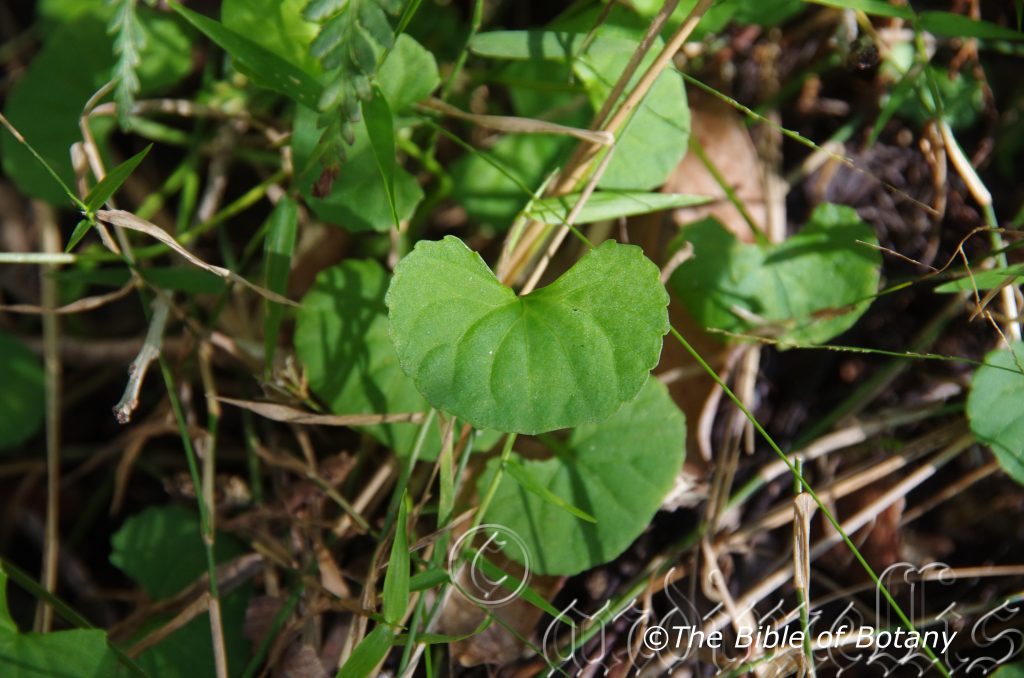
Yuraygir National park NSW
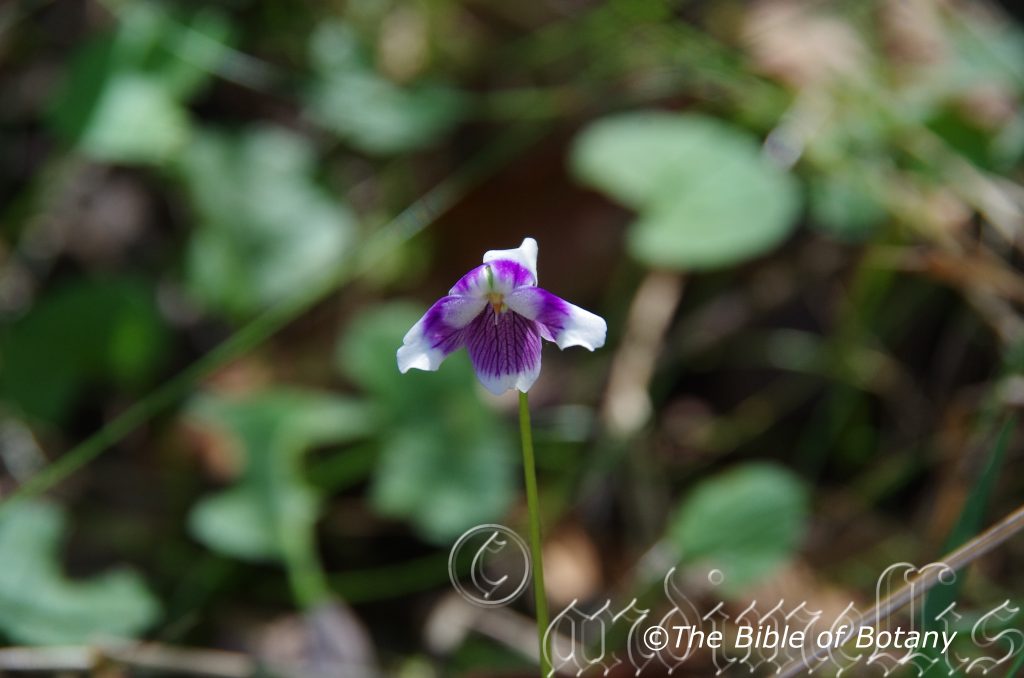
Yuraygir National park NSW

Yuraygir National park NSW
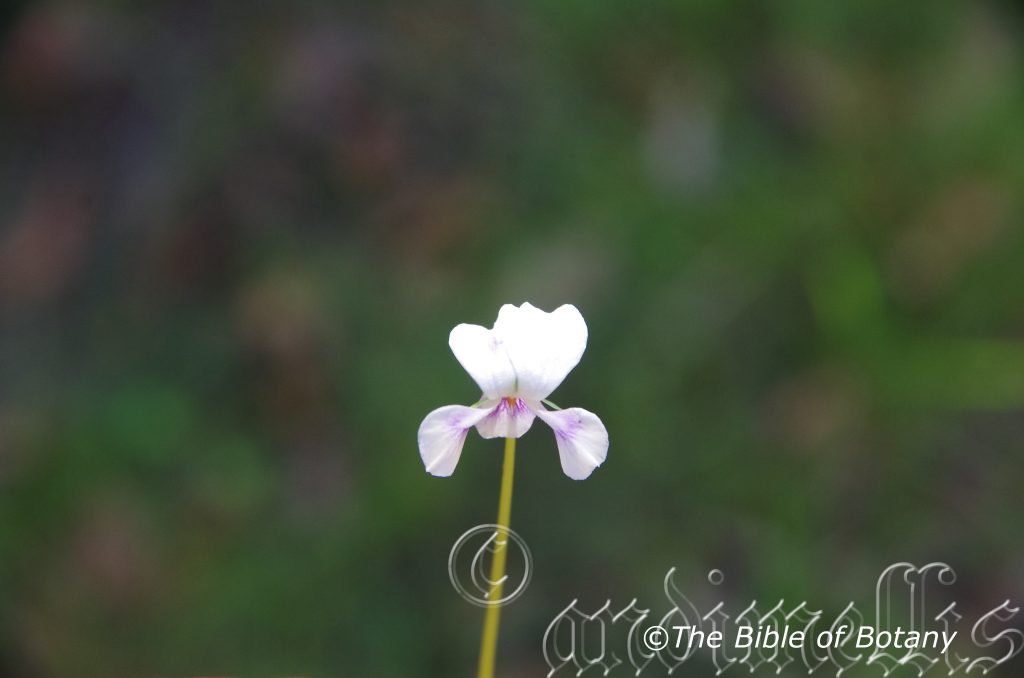
Yuraygir National park NSW
Viola hederacea
Classification:
Unranked: Eudicots
Class: Rosids
Order: Malpighiales
Family: Violaceae
Subfamily: Violoideae
Tribe: Violeae
Genus: From Viola, which is Latin for violet. It refers to the colour of the flowers in many species which are deep purple to violet.
Specie: From Hedera, which is Latin for an ivy. It refers to plants, which are somewhat like an ivy.
Sub specie:
Common Name: Ivy Viola.
Distribution:
Viola hederacea is found south from Proserpine in far north eastern Queensland to Kangaroo Island in southern South Australia. It is found on the Western Slopes, on and east of the Great Dividing Range to the coast.
It is found throughout Tasmania and the Bass Straight Islands.
https://avh.ala.org.au/occurrences/search?taxa=Viola+hederacea#tab_mapView
Habitat Aspect Climate:
Viola hederacea prefers dappled shade to semi shade. It grows adjacent to cool tropical rainforests, sub-tropical rainforests, moist warm temperate rainforests, moist Eucalyptus forests on flats, slopes or mountains, along streams or drainage lines. The altitude ranges from 1 meters ASL to 1400 meters ASL.
The temperatures range from minus 4 degrees in July to 34 degrees in January.
The rainfall ranges from lows of 350mm to 3200mm average per annum.
Soil Requirements:
Viola hederacea prefers most types of sandy loams through to medium clays often with copious quantities of leaf litter and other natural debris. The soils are usually derived from brown basalts, black basalts, heavier sandstones, metamorphic, laterites, granites or shale. The soils pH ranges from 5pH to 7pH. It does not tolerate water logged soils however soils usually remain moist throughout the year. Non saline soils to moderately saline soils are tolerated.
Height & Spread:
Wild Plants: 0.03m to 0.08m by 0.08m to 0.15m.
Characteristics:
Viola hederacea grows as a stoloniferous ground cover with pale grass-green stems. The stems are glabrous to densely covered in soft, white, pubescent hairs.
The tufted, orbicular to reniform leaves of Viola hederacea measure 6mm to 20mm in length by 6mm to 30mm in width. The petiole measures 20mm to 60mm in length. The bases are truncate to cordate or rarely broadly cuneate while the apexes are obtuse to broadly acute. The concolourous laminas are grass-green to deep grass-green, semi glossy and glabrous. The leaf margins are crenate to sinuate while the laminas recurve slightly from the petiole to the margins and are convex between the radiating veins and lateral veins. The main radiating veins and main laterals are slightly prominent on the lower laminas.
The inflorescences of Viola hederacea are born singularly on a long scape. The grass-green scapes are glabrous and measure 40mm to 100mm in length. The 5 pale green sepals are elliptical with long, narrow, acute apexes. The 2 lower and lateral sepals are pendulant while the upper lobe is recurved along the upper petals which are erect. The sepals measure 4mm to 5mm in length. The lilac to violet or rarely white petals are usually white on the apex half and streaked with deep violet, red or yellow. The lower petals have a short spur while the 2 lateral petals are covered in white hirsute hairs. The petals measure 7.5mm to 11mm in length by 5mm to 10mm in length.
The 2 white, inserted stamens have a nectary at the base. The filaments and anthers are white.
The deep orange-yellow to deep orange style is conical with a narrow linear white stigma and glabrous, green ovary. The style measures 3mm to 3.5mm in length by 1.8mm to 2mm in diameter at the base while the stigma measures 1mm to 1.2mm in length. The flowers appear throughout the year with a peak in the warmer months or after good rain.
Viola hederacea’s fruits are globose to obovoidal capsules. The large capsules are glabrous and covered in white film and measure 4mm to 5mm in length by 2mm to 2.5mm in diameter. The green capsules turn grey-brown to fawn externally and pale creamy fawn internally when ripe. The calyx lobes are persistent on the ripe fruit.
Confusing species:
Viola hederacea Mainly north of Queensland New South Wales border and further inland than Viola banksii in New South Wales. Leaves are broadly reniform to semi orbicular often without teeth. The anterior petal is ovate and somewhat pleated.
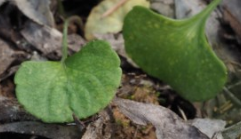

Photos by https://canberra.naturemapr.org/Species/8290
Viola banksii Mainly coastal New South Wales. Leaves are orbicular usually with a deep sinus and short irregular teeth – above. Below leaf of Viola banksii. The anterior petal is elliptical to orbicular with or without a small notch.
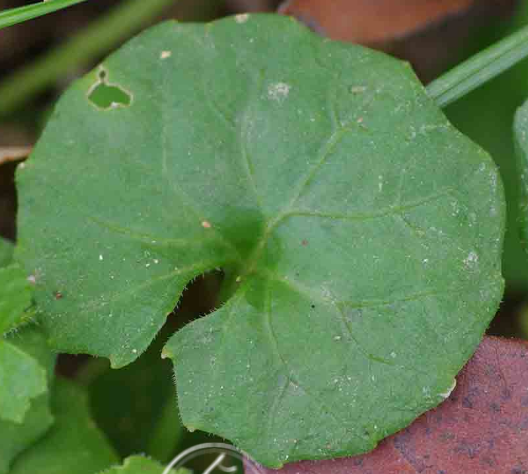
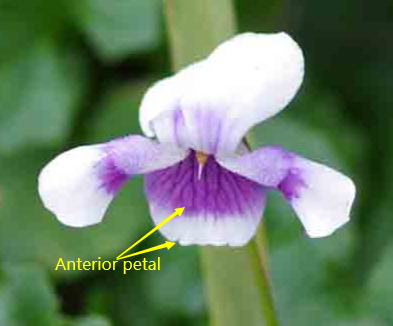
Photos by andi Mellis
Viola eminens Lowland Victoria to South Australia. Leaves are broadly reniform often with a few broad irregular teeth. The anterior petal is obovate without an apical notch.
Viola x zophodes 4 Highland Victoria. Leaves are broadly reniform to semi orbicular often with small irregular teeth. The anterior petal is ovate with an apical notch.
Wildlife:
Viola hederacea’s flowers attract several butterflies including the Purple Crow butterfly (Euploea tulliolus) while its leaves feed the beautiful black, white and yellow larvae. Damage is usually minimal with plants recovering quickly.
Cultivation:
Viola hederacea is a magnificent small herb that should be grown in association with other forest specie, partially shaded courtyards, around swimming pools and bush houses. It is ideal at the edge of a moist forest or deep in the center of the forest. In cultivation they will grow from 0.2 meters to 0.3 meters in height by 0.3 meters to 0.4 meters in diameter when grown in the open.
It grows exceptionally well on all moist soils particularly those high in leaf litter where deep leaf litter keeps the soil cool and moisture at an even level where they can be mass planted. If these requirements are met it can cope with temperatures as low as minus 5 degrees and up to 36 degrees. It is moderately drought resistant once established.
Add to the above, if it is given an adequate supply of water and a little native fertilizer on a regular basis the plants will respond with excellent flowering and size over a long period.
It is best suited to areas that are water logged or have poor drainage like in small depressions and around sullage trenches. Place them at the bottom of slopes or retaining walls where moisture seeps out after rain.
Because of its size it is ideal in settings near ponds in courtyards or moist rockeries rockery. It needs strong sunlight for at least half the day to very light shade to grow at their best.
Viola hederacea also make excellent hanging basket plants especially where the humidity is high or where moisture can be sprayed over the trailing sections several times a day.
Propagation:
Seeds: Seeds of Viola hederacea are very difficult to obtain and the best method of propagation is from division or stolons.
When seed is available sow the fresh seeds directly onto a seed raising mix, and cover them with 1mm of fine sand or mix. Keep the mix moist not wet. Place the trays in a cool shaded area with 50mm shade cloth in the bush house. The seeds are erratic in germination and may take over 10 weeks for germination to be completed. When the seedlings are 20mm to 50mm tall, prick them out and plant them into 100mm squat pots using a good organic mix.
As the seedlings roots reach the bottom of the pots plant them out into their permanent position and water thoroughly with our recommended fertilizer.
Carefully remove individual plants or a leafy stolon from the parent plants that have some established roots. Place them in a 100mm squat pot in a weed free mix being careful not to cover the crown. Place the pots in a cool spot under 50mm to 60mm shade and keep moist. Roots should appear at the bottom of the pots in 3 to 4 weeks in warm weather.
Fertilize using Seaweed, fish emulsion or organic chicken pellets soaked in water and apply the liquid on an alternate basis. Fertilize every 2 months until the plants are well established then on an annual basis in September or March to maintain better health, vitality and flowering.
Further Comments from Readers:
“Hi reader, it seems you use The Bible of Botany a lot. That’s great as we have great pleasure in bringing it to you! It’s a little awkward for us to ask, but our first aim is to purchase land approximately 1,600 hectares to link several parcels of N.P. into one at The Pinnacles NSW Australia, but we need your help. We’re not salespeople. We’re amateur botanists who have dedicated over 30 years to saving the environment in a practical way. We depend on donations to reach our goal. If you donate just $5, the price of your coffee this Sunday, We can help to keep the planet alive in a real way and continue to bring you regular updates and features on Australian plants all in one Botanical Bible. Any support is greatly appreciated. Thank you.”
In the spirit of reconciliation we acknowledge the Bundjalung, Gumbaynggirr and Yaegl and all aboriginal nations throughout Australia and their connections to land, sea and community. We pay our respect to their Elders past, present and future for the pleasures we have gained.
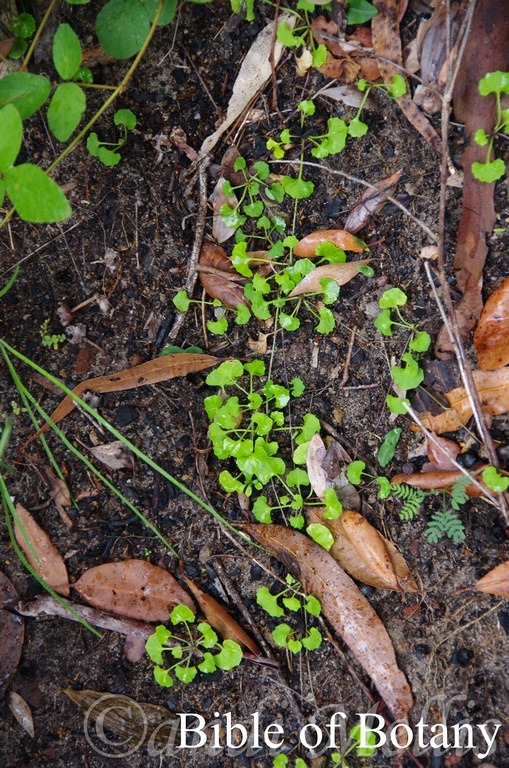
Wombat Creek Conservation Park NSW
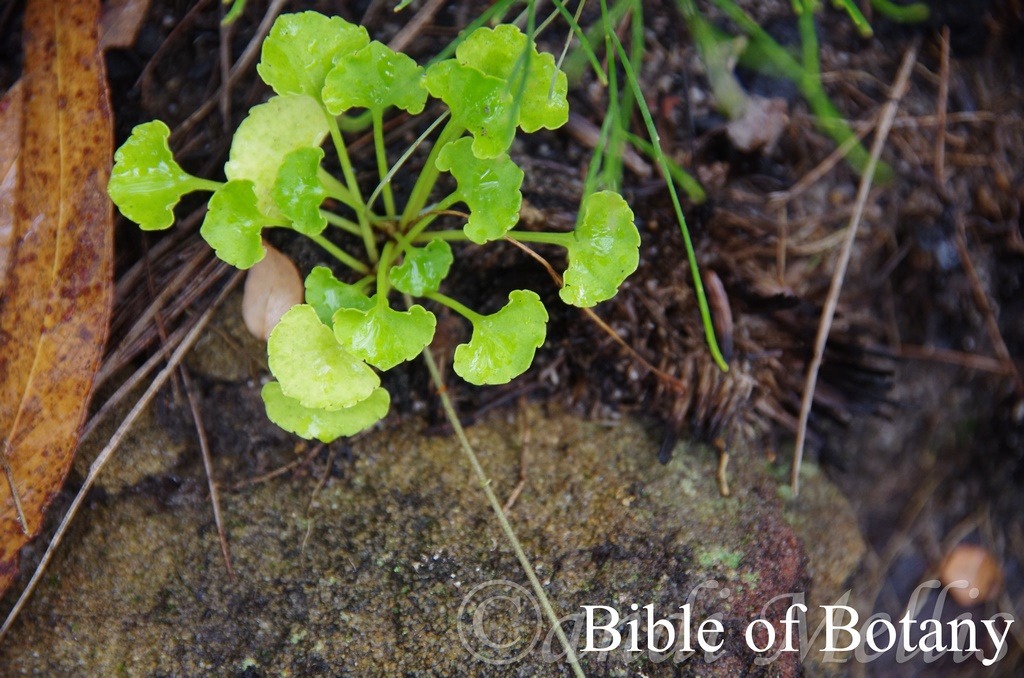
Wombat Creek Conservation Park NSW

Wombat Creek Conservation Park NSW
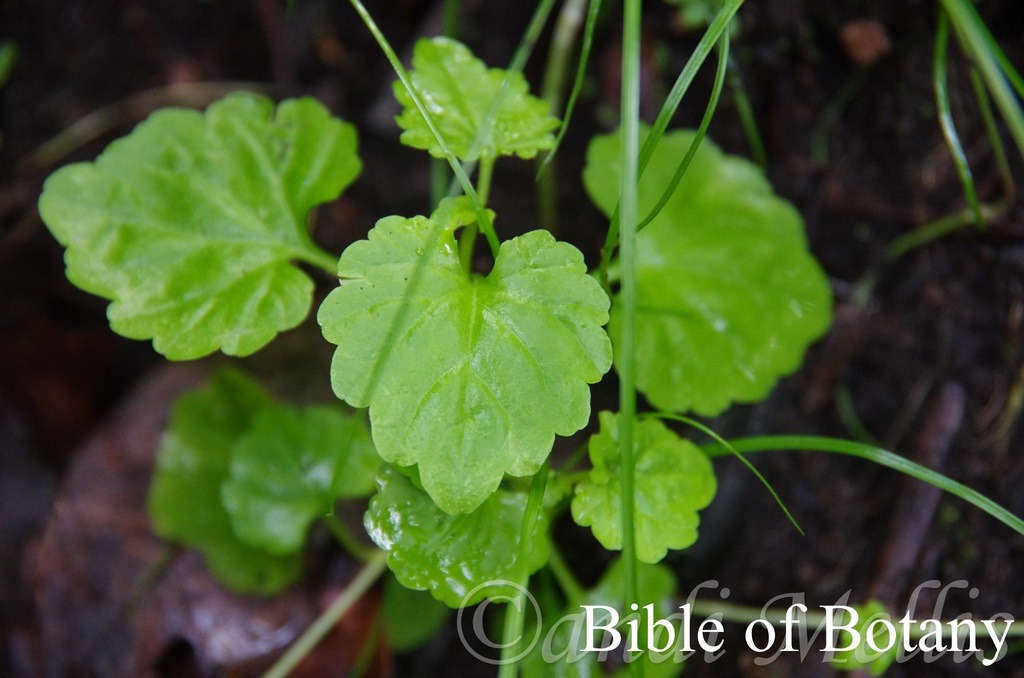
Wombat Creek Conservation Park NSW

Wombat Creek Conservation Park NSW
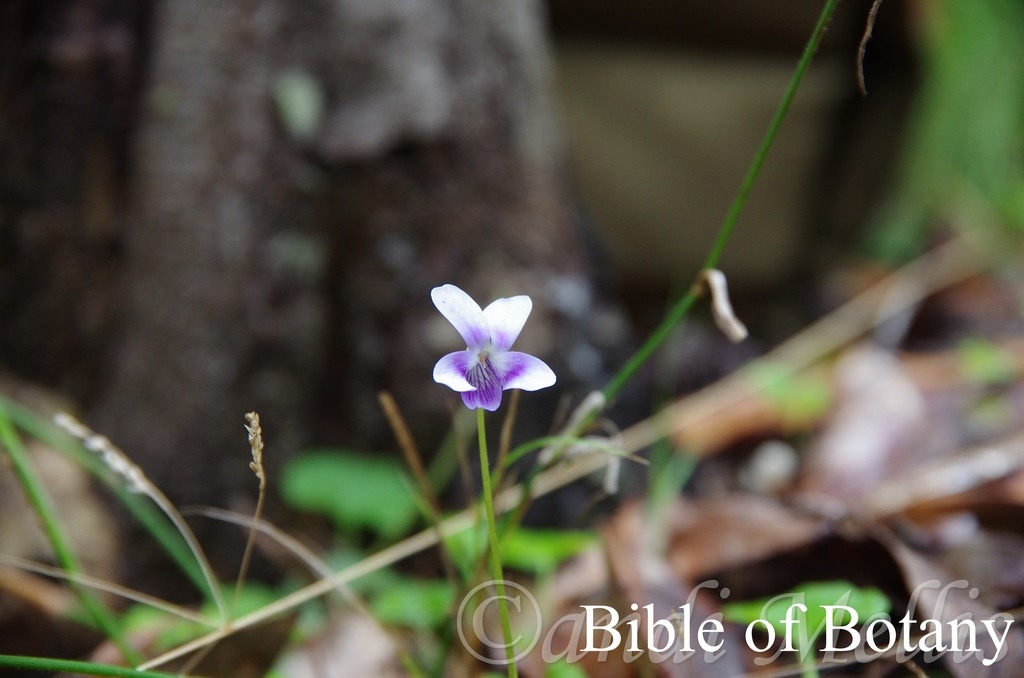
Wombat Creek Conservation Park NSW

Wombat Creek Conservation Park NSW
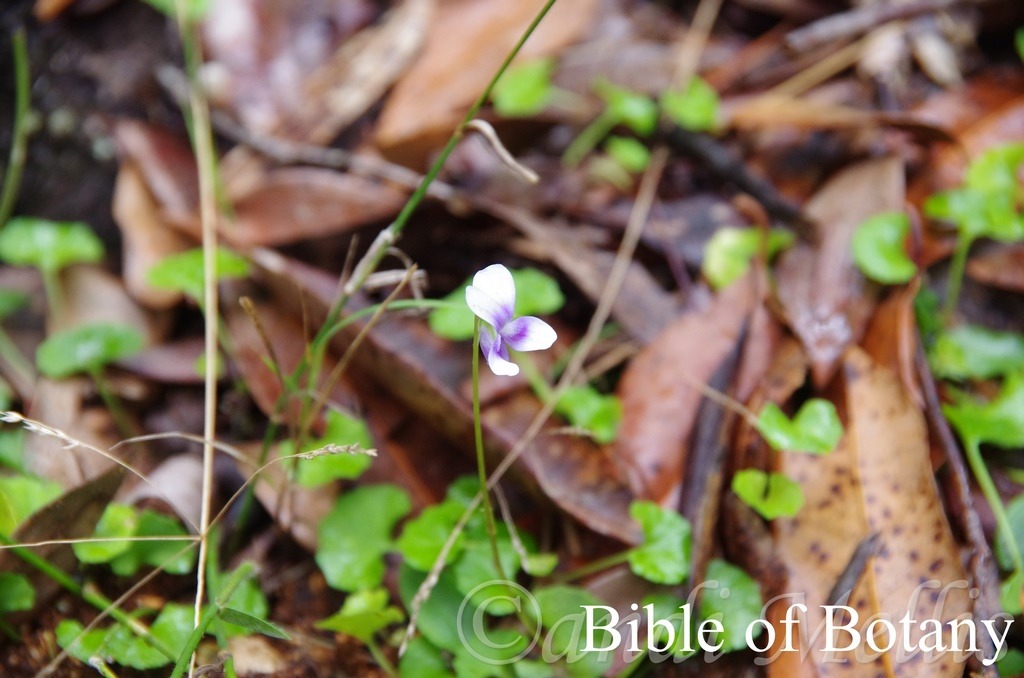
Wombat Creek Conservation Park NSW
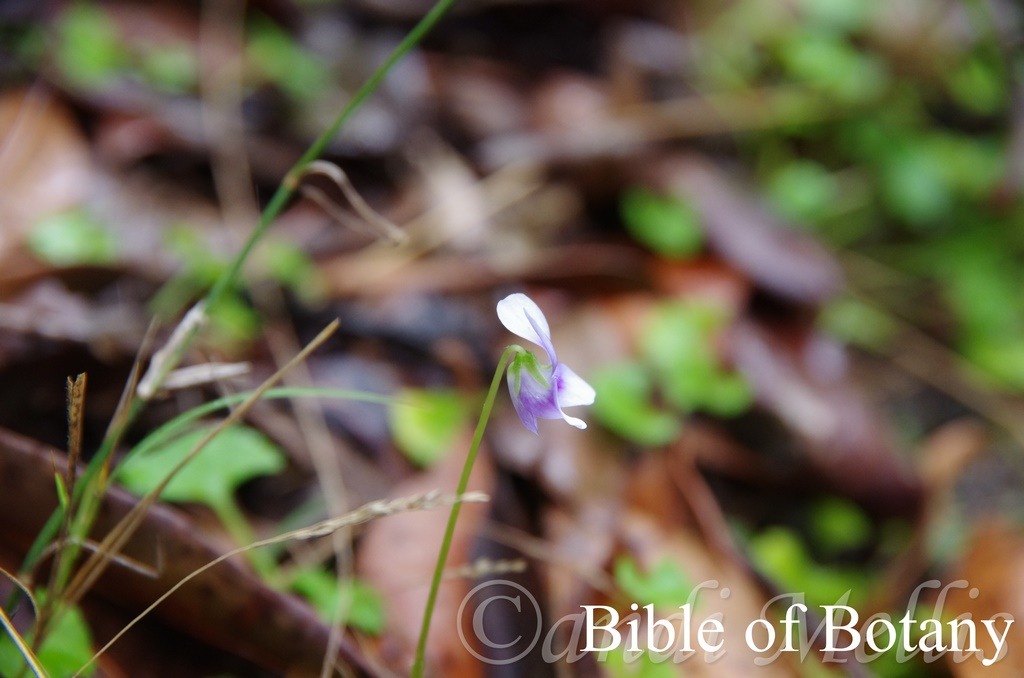
Wombat Creek Conservation Park NSW
Viola silicestris
Classification:
Unranked: Eudicots
Class: Rosids
Order: Malpighiales
Family: Violaceae
Subfamily: Violoideae
Tribe: Violeae
Genus: From Viola, which is Latin for violet. It refers to the colour of the flowers in many species which are deep purple to violet.
Specie: From Silex, which is Ancient Greek for flints or pebbles and Cr?tum, which is Latin for to be separated. It refers to indurated soils. Duricrusts are formed when very fine surface sand and gravel, which are cemented together by dissolved silica that resolidifies. It often forms in arid areas forming the crusts on top of rocks, ranges and hills. It was used extensively in the making stone implements by Australian aborigines. It refers to plants, which prefer conglomerate rocky soils to sandy soils.
Sub specie:
Common Name: Sandstone violet.
Distribution:
Viola silicestris is found south from Mount Mee in south eastern Queensland to Batemans Bay in central eastern coastal New South Wales.
https://avh.ala.org.au/occurrences/search?taxa=Viola+silicestris#tab_mapView
Habitat Aspect Climate:
Viola silicestris prefers dappled shade to semi shade. It grows adjacent to cool tropical rainforests, sub-tropical rainforests, moist warm temperate rainforests, and moist Eucalyptus forests on flats, slopes or mountains, along streams or drainage lines. The altitude ranges from 1 meters ASL to 1400 meters ASL.
The temperatures range from minus 4 degrees in July to 34 degrees in January.
The rainfall ranges from lows of 350mm to 3200mm average per annum.
Soil Requirements:
Viola silicestris prefers sandy loams to light gravelly clays often with copious quantities of forest litter. The soils are usually derived from sandstones or granites. The soils pH ranges from 5pH to 6pH. It does not tolerate water logged soils however soils usually remain moist throughout the year. Non saline soils to moderately saline soils are tolerated.
Height & Spread:
Wild Plants: 0.03m to 0.4m by 0.08m to 0.15m.
Characteristics:
Viola silicestris grows as a perennial herb with spreading stolons. The rootstock is scarcely swollen at the basal slender woody taproot. The stems varying from leaves forming rosettes over the tap root or erect and scrambling on the stems.
The tufted and cauline stem leaves are orbicular, reniform to hemi orbicular. The leaves of Viola silicestris measure 4mm to 15mm in length by 5mm to 38mm in width. The scarious stipules are narrow triangular with irregular elongate teeth. The petiole measures 20mm to 110mm in length. The bases are truncate with auricles near the margins while the apexes are obtuse. The concolourous laminas are grass-green to mid green, dull to semi glossy and glabrous to sparsely covered in short white, puberulent hairs. The laminas are flat to slightly recurve upwards from the petiole. The 5 to 15 small crenate are minute and regularly spaced. The usually 7 or at times 9 radiating veins are slightly prominent on the lower laminas.
The inflorescences of Viola silicestris are born singularly on a long scape. The grass-green scapes are glabrous and measure 40mm to 150mm in length. The sepals measure 4mm to 5mm in length. The 5 pale green sepals are elliptical with long narrowly acute apexes.
The concolourous petals are usually pale mauve, mauve-blue or rarely white. The usually strongly retrorse or at times erect dorsal petals measure 6mm to 7mm in length by 3mm to 4mm in width.
The divaricate lateral petals twist to 70 to 90 degrees are usually reflexed. The lateral petals measure 6mm to 8mm in length.
The oblong to ovate lower petals are regularly trinervis with slightly deeper longitudinal veins. The anthers are usually deep tinged violet. The flowers appear from September to November.
Viola silicestris’s fruits are fusiform capsules. The capsules are glabrous and measure 4mm to 5mm in length by 2mm to 2.5mm in diameter. The green capsules turn pale dull, creamy-green with or without purple blotches when ripe. The calyx lobes are persistent on the ripe fruit. The glossy purplish black seeds measure 1.5mm to 1.7mm in diameter.
Confusing Species: Looking at the leaves.
Viola banksii – The leaves have a strong sinus, margins have small teeth on the lobes and are slightly concolourous.
Viola hederacea – The leaves have a shallow or no sinus, shallow lobes without teeth and are slightly discolourous.
Viola silicestris – The leaves are more deeply lobed without teeth and are slightly more discolourous.
Wildlife:
Viola silicestris’s wildlife is unknown to the author.
Cultivation:
Viola silicestris is a magnificent small herb that should be grown in association with other forest specie, partially shaded courtyards, around swimming pools and bush houses. It is ideal at the edge of a moist forest or deep in the center of the forest. In cultivation it grows from 0.2 meters to 0.3 meters in height by 0.3 meters to 0.4 meters in diameter when grown in the open.
It grows exceptionally well on all moist soils particularly those high in leaf litter where deep leaf litter keeps the soil cool and moisture at an even level where they can be mass planted. If these requirements are met they can cope with temperatures as low as minus 5 degrees and up to 36 degrees.
Add to the above, if it is given an adequate supply of water and a little native fertilizer on a regular basis the plants will respond with excellent flowering and size over a long period.
IT is best suited to areas that are water logged or have poor drainage like in small depressions and around sullage trenches. Place it at the bottom of slopes or retaining walls where moisture seeps out after rain.
Because of its size it is ideal in settings near ponds in courtyards or moist rockeries rockery. It needs strong sunlight for at least half the day to very light shade to grow at its best.
Viola silicestris also make excellent hanging basket plants especially where the humidity is high or where moisture can be sprayed over the trailing sections several times a day.
Propagation:
Seeds: The seeds of Viola silicestris are very difficult to obtain and the best method of propagation is from division or stolons.
When seed is available sow the fresh seeds directly onto a seed raising mix, and cover them with 1mm of fine sand or mix. Keep the mix moist not wet. Place the trays in a cool shaded area with 50mm shade cloth in the bush house. The seeds are erratic in germination and may take over 10 weeks for germination to be completed. When the seedlings are 20mm to 50mm tall, prick them out and plant them into 100mm squat pots using a good organic mix.
As the seedlings roots reach the bottom of the pots plant them out into their permanent position and water thoroughly with our recommended fertilizer.
Carefully remove young plantlets or leafy stolons from the parent plants that have some established roots. Place them in a 100mm squat pot in a weed free mix being careful not to cover the crown. Place the pots in a cool spot under 50mm to 60mm shade and keep moist. Roots should appear at the bottom of the pots in 3 to 4 weeks in warm weather.
Fertilize using Seaweed, fish emulsion or organic chicken pellets soaked in water and apply the liquid on an alternate basis. Fertilize every 2 months until the plants are well established then on an annual basis in September or March to maintain better health, vitality and flowering.
Further Comments from Readers:
“Hi reader, it seems you use The Bible of Botany a lot. That’s great as we have great pleasure in bringing it to you! It’s a little awkward for us to ask, but our first aim is to purchase land approximately 1,600 hectares to link several parcels of N.P. into one at The Pinnacles NSW Australia, but we need your help. We’re not salespeople. We’re amateur botanists who have dedicated over 30 years to saving the environment in a practical way. We depend on donations to reach our goal. If you donate just $5, the price of your coffee this Sunday, We can help to keep the planet alive in a real way and continue to bring you regular updates and features on Australian plants all in one Botanical Bible. Any support is greatly appreciated. Thank you.”
In the spirit of reconciliation we acknowledge the Bundjalung, Gumbaynggirr and Yaegl and all aboriginal nations throughout Australia and their connections to land, sea and community. We pay our respect to their Elders past, present and future for the pleasures we have gained.
Viscum articulatum
Classification:
Unranked: Eudicots
Order: Santalales
Family: Santalaceae
Genus: From Visc/Viskus, which is Latin for birdlime made from viscin, which is from the fruits of the Mistletoe. It refers to organs usually the fruits which have a rather thick glutinous consistency similar to thick adhesive glues.
Specie: From Articulatus, which is Latin for to be divided into distinct sections. It refers to stems, which have very distinct divisions at the joints.
Sub specie:
Common Name:
Distribution:
Viscum articulatum is found north of a line from the east Kimberley Range in north west, Western Australia to near Gove in the north eastern corner of the Northern Territory.
In the east it is found south from the Torres Straight Islands in far north east Queensland to Port Macquarie in central coastal New South Wales. It is found on the eastern side of the Western Plains, Western Slopes, on and east of the Great Dividing Range to the coast.
https://avh.ala.org.au/occurrences/search?taxa=Viscum+articulatum#tab_mapView
Habitat Aspect Climate:
Viscum articulatum prefers dappled shade to full sun. It grows in monsoonal forests, warm tropical rainforests, littoral rainforests, Eucalyptus forests, open Eucalyptus woodlands, open Acacia woodlands from the beach, mountains or plains. The altitude ranges from 10 meters ASL to 1100 meters ASL.
The temperatures range from minus 3 degrees in July to 40 degrees in January.
The rainfall ranges from lows of 500mm to 3200mm average per annum.
Soil Requirements:
Viscum articulatum grows as a parasitic plant on a large range of families including Casuarinaceae, Myrtaceae, Acacia Aulacocarpa and many of the Loranthaceae plants which are also parasitic.
Height & Spread:
Wild Plants: 0.6m to 1m by 0.8m to 1.2m.
Characteristics:
Viscum articulatum grows as a slender pendulant parasitic shrub which mainly grows on other parasitic plants in particular Loranthaceae, other species of Viscaceae species and Santalaceae. The 4 angulated or 4-ribbed stem internodes measure 8mm to 37mm in length by 1mm to 4.5mm in width.
The internodes are compressed with acute marginal and median ridges. The ridges measure 2mm to 4.5mm in length by 1.5mm to 2.5mm in width on juvenile plants with the basal ones becoming terete on mature plants. The stems are deep grass-green and glabrous.
The scale like leaves measure 0.5mm to 0.8mm in length by 0.5mm to 0.8mm in width. The leaves subtend the inflorescences.
The monoecious inflorescences are born from the nodes. The individual flowers develop separately from the same node. A sessile female flower develops first, followed by a pair of male flowers then usually by successive individual female flowers.
The sessile male flowers are usually paired or at times singularly appear below the involucre bracts of the earlier female flower. The male hypanthium is turbinate and glabrous. The hypanthia measure 0.5mm in diameter. The 3 greenish tepals measure 0.5mm to 0.6mm in diameter. The 3 sessile, spherical anthers have numerous irregular locules.
The glabrous female ovary measures 0.5mm in diameter. The tepals measure 0.5mm to 0.6mm in diameter.
The fruits are sessile, globose to spherical drupes. The drupes are glabrous and translucent. The berries measure 4mm to 6mm in length by 4mm to 6mm in diameter. The green drupes turn pastel pink to pastel yellow when ripe.
Wildlife:
Viscum articulatum’s fruits are not edible and should not be eaten. Viscum species in general are mildly toxic to humans. Eating the fruit causes a weak or slowing of the pulse and acute gastrointestinal problems including stomach pain and diarrhea. At least one of the active ingredients is the lectin viscumin, which is intensely toxic. It inhibits protein synthesis by catalytically inactivating ribosomes.
The side effects of allopathic medicines have created a global opportunity, acceptance and demand for phytomedicines (Herbal Medicines). Viscum articulatum could be an excellent source of effective and safe phytomedicine for various ailments if focused translational efforts are undertaken by integrating the existing outcomes of researches.
Cultivation:
Being a parasitic plant Viscum articulatum is not a favourite garden subject for many gardeners and just as many do not appreciate the real beauty it has to offer.
However if one commences life on a tree close to the ground where the flowers and fruits can be viewed easily it may be worthwhile leaving there as a curiosity. The fruits can then be controlled when ripe or they can be left to nature. It makes an interesting addition to the garden. This is a great talking point for children and adults alike. The seeds must be placed onto Casuarinaceae specie to survive.
Propagation:
Seeds: The seeds of Viscum articulatum can be removed from the ripe berries by squeezing them and placing the viscus seeds directly onto the branch of another parasitic plant. Use the fruit as the adhesive to stick the seed to the branch. Seeds usually germinate in a few days to a week.
Further Comments from Readers:
“Hi reader, it seems you use The Bible of Botany a lot. That’s great as we have great pleasure in bringing it to you! It’s a little awkward for us to ask, but our first aim is to purchase land approximately 1,600 hectares to link several parcels of N.P. into one at The Pinnacles NSW Australia, but we need your help. We’re not salespeople. We’re amateur botanists who have dedicated over 30 years to saving the environment in a practical way. We depend on donations to reach our goal. If you donate just $5, the price of your coffee this Sunday, We can help to keep the planet alive in a real way and continue to bring you regular updates and features on Australian plants all in one Botanical Bible. Any support is greatly appreciated. Thank you.”
In the spirit of reconciliation we acknowledge the Bundjalung, Gumbaynggirr and Yaegl and all aboriginal nations throughout Australia and their connections to land, sea and community. We pay our respect to their Elders past, present and future for the pleasures we have gained.
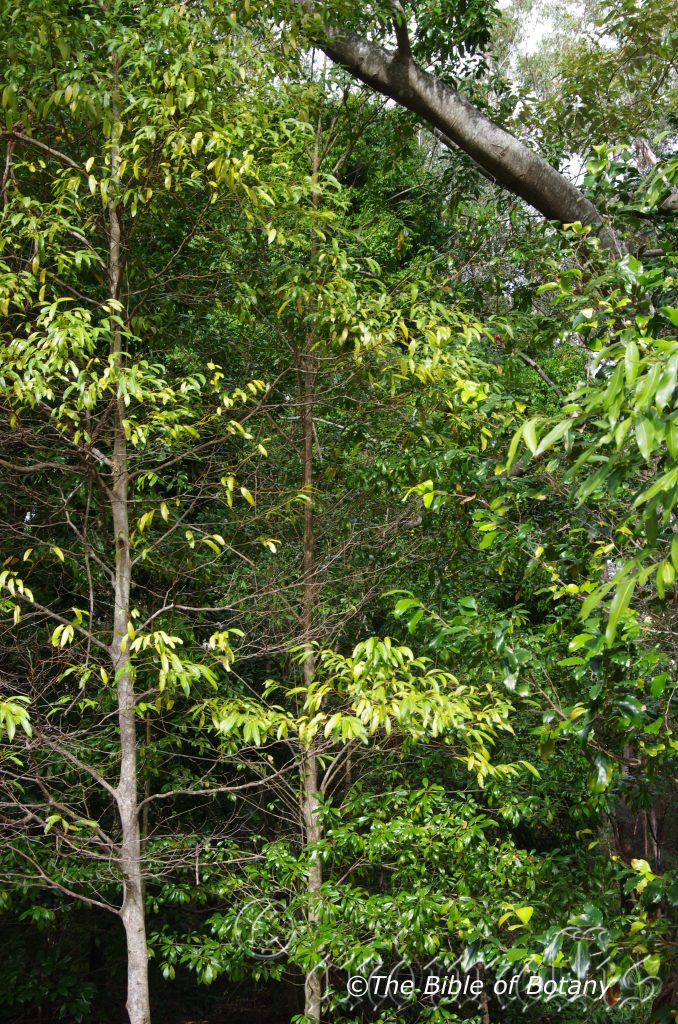
NCBG Coffs Harbour NSW
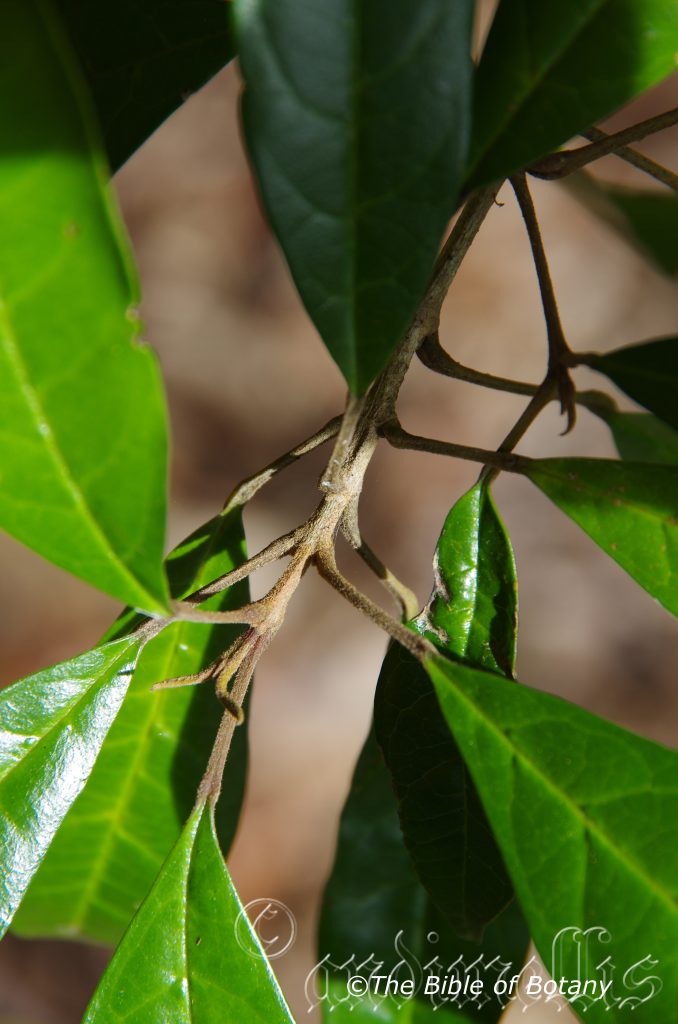
NCBG Coffs Harbour NSW

NCBG Coffs Harbour NSW

NCBG Coffs Harbour NSW
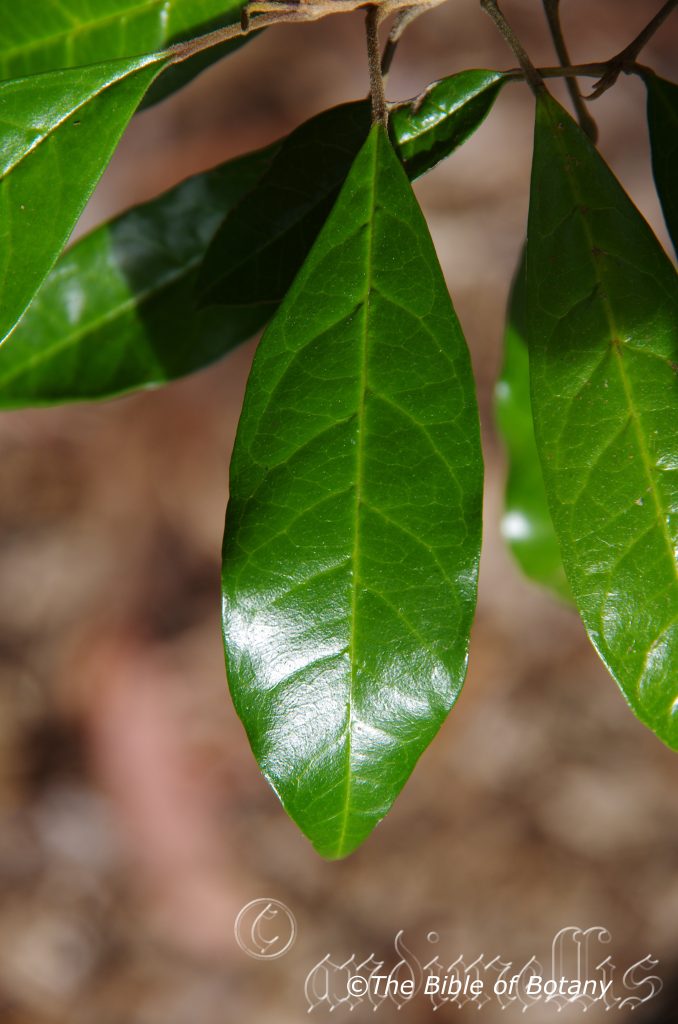
NCBG Coffs Harbour NSW

NCBG Coffs Harbour NSW
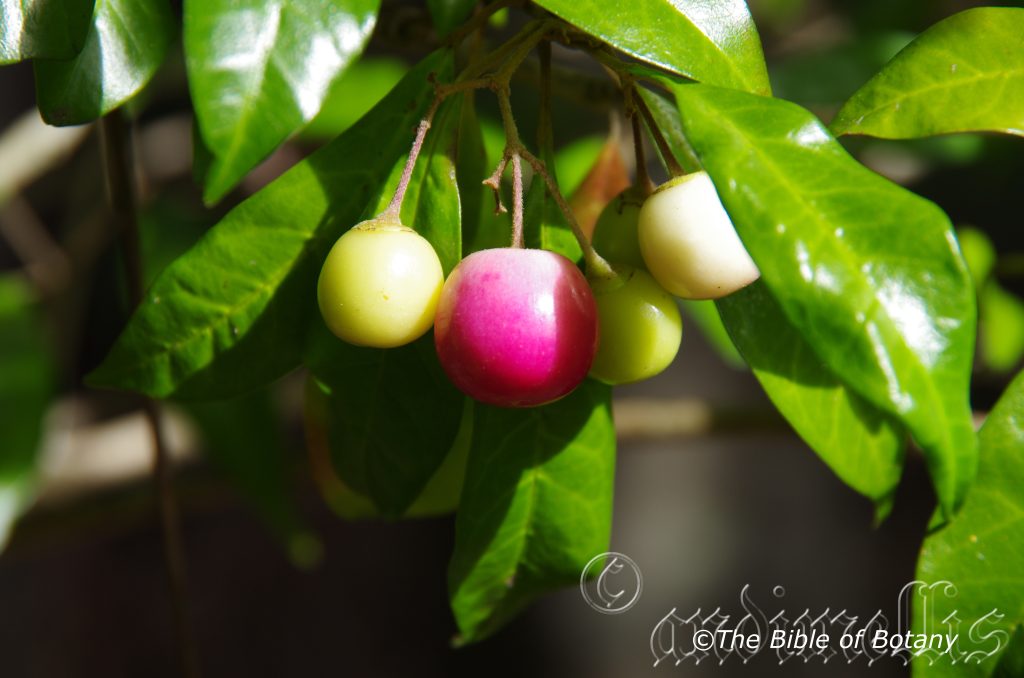
NCBG Coffs Harbour NSW

NCBG Coffs Harbour NSW
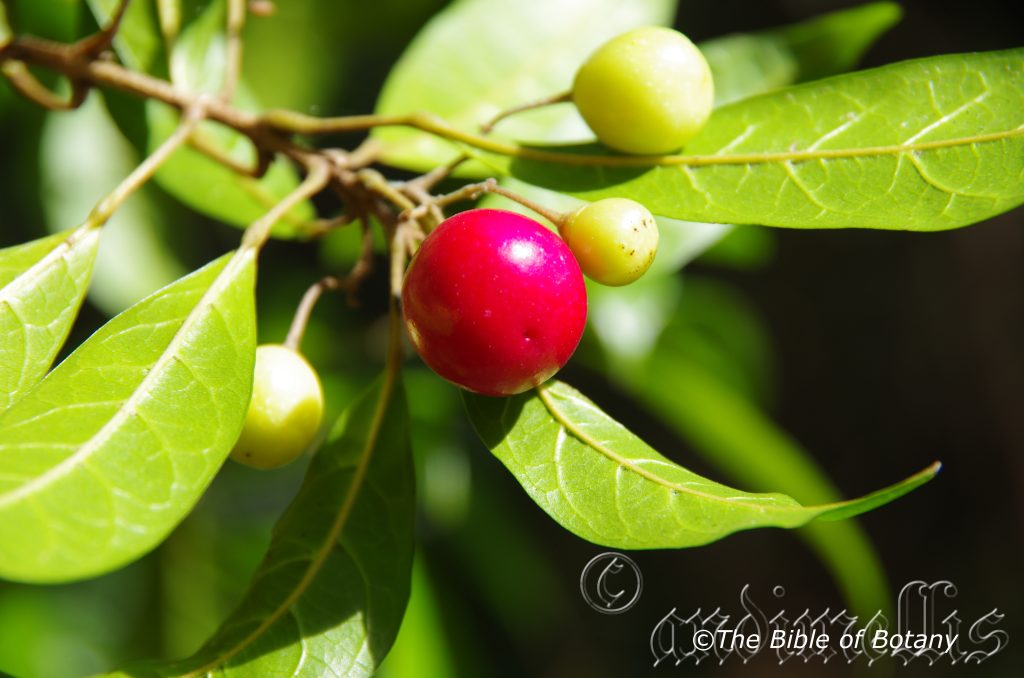
NCBG Coffs Harbour NSW

NCBG Coffs Harbour NSW
Vitex lignum-vitae
Classification:
Unranked: Eudicots
Unranked: Asterids
Order: Lamiales
Family: Lamiaceae
Subfamily: Premnoideae
Genus: From Viti, which is the Latin name for grape vine. It refers to fruits, which are somewhat similar in appearance to those of the grape vines.
Specie: From Lignum, which is Latin for wood and V?ta, which is Latin for life, living, support or subsistence. It refers to leaves, which are round or much rounder than other species in the genus.
Sub specie:
Common Name: Rainforest Vitex, Satinwood or Yellow Hollywood.
Distribution:
Vitex lignum-vitae is found in two distinct populations in north eastern Queensland south from north of Cairns to Innisfail then from Gladstone in south eastern Queensland to the Clarence River in far north eastern New South Wales.
https://avh.ala.org.au/occurrences/search?taxa=Vitex+lignum-vitae#tab_mapView
Habitat Aspect Climate:
Vitex lignum-vitae prefers dappled shade to full sun. It grows in dry or subtropical rainforest on steep stony slopes. The altitude ranges from 25 meters ASL to 950 meters ASL.
The temperatures range from 4 degrees in July to 40 degrees in January.
The rainfall ranges from lows of 700mm to 3000mm average per annum.
Soil Requirements:
Vitex lignum-vitae prefers better quality fine sands, sandy loams, peaty sands or light silts. The soils are usually derived from accumulated peaty beach sands or alluvial deposits along coastal estuaries. The soils pH ranges from 5pH to 8pH. It does not tolerate water logged soils however soils usually remain moist throughout the year. Non saline soils to extremely saline soils are tolerated.
Height & Spread:
Wild Plants: 5m to 30m by 5m to 12m.
Characteristics:
Vitex lignum-vitae usually grows as a large shrub to tall erect tree. The trunk is usually conspicuously fluted or at least channelled near the base. The hard brittles bark is longitudinally striped. The stems are brown and densely covered in fawn pubescent hairs.
The opposite somewhat decastate, oblong leaves of Vitex lignum-vitae measure 75mm to 110mm in length by 25mm to 45mm in width. The semi-terete petiole is swollen, with a short furrow on the upper side, near the base of the leaf and measures 10mm to 25mm in length. It is densely covered in thick, fawn pubescent hairs.
The bases are cuneate, while the apexes are accuminate. The discolourous laminas are deep glossy green and glabrous on the upper lamina, while the lower lamina is paler, semi glossy and glabrous. The leaf margins are entire and decurve slightly downwards near the margins and near the apex. The lower lamina has a few minute yellow glands visible with a hand lens. The mid vein is strongly prominent on the lower lamina, while the 6 to 8 pairs of lateral veins are slightly prominent and is visible on the upper lamina. The lateral veins form loops well inside the margin. The domatia are foveoles with a small orifice.
The inflorescences of Vitex lignum-vitae are born from the upper leaf axis. The calyx has a truncate apex and 2.5mm to 4mm in length. It is densely covered in glandular and rusty pubescent and glossy yellow glands externally. The corolla measures 9mm to 15mm in length, while corolla tube is broad and measures 6.5mm to 10mm in length and is at least twice as long as the calyx. The lobes measure 3mm to 4mm in length.
The exerted stamens have dull creamy filaments that are sparsely covered in white villous hairs near the base and are glabrous near the anthers. The filaments measure 7mm to 11mm length, while the basifixed, oblong anthers dehisce longitudinally. The pollen is white or cream.
The globose ovary is glabrous and measures 1mm to 2mm in diameter. The creamy, glabrous style measures 9mm to 15mm in length and has 2 tapering stigmas. The flowers appear from early April to early May but are erratic from late summer to throughout Autumn.
The fruits of Vitex lignum-vitae are globose, glabrous drupes. The measure 5mm to 18mm in length by 5mm to 20mm in diameter. The pale green drupes turn pale yellow then deep crimson when ripe. The calyx is persistent on the base of the ripe fruit. The ovoidal seeds are enclosed in a stone. The stones measure 4mm to 12mm in length by 4mm to 14mm in diameter.
Wildlife:
Vitex lignum-vitae’s wildlife is unknown to the author.
Cultivation:
Vitex lignum-vitae is a magnificent medium size tree that could be grown in association with other dry rainforest trees where some ground water is available throughout the year and full sun is assured. In cultivation it grows from 6 meters to 20 meter in height by 4 meters to 8 meters in diameter when grown in the open.
It grows exceptionally well on lighter sandy soils where a layer of leaf litter keeps the soil cool and moisture at an even level. If these requirements are met it can cope with temperatures as low as minus 2 degrees and up to 40 degrees. It is moderately drought resistant once established.
Add to the above, if it is given an adequate supply of water and a little native fertilizer on a regular basis the plants will respond with good flowering and fruit over a long period.
It should be more widely grown with in warm temperate areas of Australia and tried at least as far south as Melbourne and Adelaide where sandstone or granite outcrops prevail and inland where some ground water is guaranteed.
Vitex lignum-vitae would make an interesting bonsai specimen with its crimson fruits as it matures. It grows on some fairly inhospitable sites and is reasonably flexible, indicating that may be easy to work, long lived but can be finicky with leaf drop if care is not taken. New leaves will reshoot soon after dropping.
Propagation:
Seeds: Seeds of Vitex lignum-vitae can be removed easily from the fruits.
Sow freshly treated seeds directly into a seed raising mix, keeping them moist not wet. Do not over water as the seeds will rot off before germination takes place. Place the trays in a cool shaded area with 50mm shade cloth in the bush house that receives little water. Seeds may take up to 2 years to commence germinating which may take another 12 months to be completed. Germination is both erratic and unreliable. When the seedlings are 30mm to 50mm tall, prick them out and plant them into 50mm native tubes using a good organic mix.
Cuttings: To my knowledge I do not record plants being grown from cuttings. Treat Vitex lignum-vitae cuttings with care. Use 150mm to 300mm long semi hardwood from the present season’s growth or 300mm to 400mm long hardwood cuttings. Take them in warmer months of the year. Remove half the leaves from the bottom section being careful not to tear the bark.
1 Prepare the cutting mix by adding two thirds sharp clean river sand, one third peat or one third perlite. These ingredients must be sterilized,
2 Select good material from non diseased plants,
3 Select semi green stems for cuttings. Look for a sree nodes,
4 Place the cutting on a flat, hard surface, and make a clean cut down one side of the cutting at the base for 10mm with a sharp sterile knife or razor blade. – This scarification of the node will increase the chances of roots emerging from this spot. Now remove all but one or two the leaves, leaving the apex leaves in tact. If the leaves are very large in proportion to the stem, cut off the apical halves.
5 Fill a saucer with water, and place a little medium strength rooting hormone into another container like a milk bottle top. Dip the node end of the cutting into the water and then into the rooting hormone. Tap off any excess hormone,
6 Use a small dipple stick or old pencil to poke a hole into the soilless potting mix. Ensure the hole is slightly larger than the stem diameter and be careful not to damage or wipe the rooting hormone off the cuttings base. Place 1 cutting in each of the 750mm native tubes,
7 I like to place the tubes in bucket with holes drilled in the bottom to allow excess water to drain out. A plastic bag that fits over the bucket is ideal to help maintain temperature and moisture. Place in a semi shaded, warm position like under 50mm shade cloth.
8 When the cuttings have struck, open the bag to allow air circulation for a few days to a week,
9 Once hardened off remove the cuttings from the bag and allow to further hardening for a few more days to a week,
10 Transplant into a good potting mix to grow on.
Fertilize using seaweed, fish emulsion or organic chicken pellets soaked in water on an alternate basis. Fertilize every two months until the plants are established then twice annually in early September or March to maintain health, vitality and better flowering.
Further Comments from Readers:
“Hi reader, it seems you use The Bible of Botany a lot. That’s great as we have great pleasure in bringing it to you! It’s a little awkward for us to ask, but our first aim is to purchase land approximately 1,600 hectares to link several parcels of N.P. into one at The Pinnacles NSW Australia, but we need your help. We’re not salespeople. We’re amateur botanists who have dedicated over 30 years to saving the environment in a practical way. We depend on donations to reach our goal. If you donate just $5, the price of your coffee this Sunday, We can help to keep the planet alive in a real way and continue to bring you regular updates and features on Australian plants all in one Botanical Bible. Any support is greatly appreciated. Thank you.”
In the spirit of reconciliation we acknowledge the Bundjalung, Gumbaynggirr and Yaegl and all aboriginal nations throughout Australia and their connections to land, sea and community. We pay our respect to their Elders past, present and future for the pleasures we have gained.
Vitex melicopea
Classification:
Unranked: Eudicots
Unranked: Asterids
Order: Lamiales
Family: lamiaceae
Subfamily: Premnoideae
Genus: From Viti, which is the Latin name for grape vine. It refers to fruits, which are somewhat similar in appearance to those of the grape vines.
Specie: From Méli/Mellis, which is Ancient Greek for honey, sweet or pleasant and Kope which is Ancient Greek for a division. It refers to the four large glands, which divide the Ovaries into four sections and the somewhat sweetness of the fruits.
Sub specie:
Common Name: Pink Fruited Vitex.
Distribution:
Vitex melicopea is found south from Lethbrook to Dingo Beach and the Whitsunday Islands to Perigan Beach in eastern Queensland.
https://avh.ala.org.au/occurrences/search?taxa=Vitex+melicopea#tab_mapView
Habitat Aspect Climate:
Vitex melicopea prefers dappled shade to full sun. It grows in monsoonal vine thickets, littoral rainforests, Eucalyptus forests or open woodlands from the beach, slopes or mountains. The altitude ranges from 2 meters ASL to over 600 meters ASL.
The temperatures range from 4 degrees in July to 34 degrees in January.
The rainfall ranges from lows of 700mm to 3000mm average per annum.
Soil Requirements:
Vitex melicopea prefers most types of sandy loams through to medium clays. The soils are usually derived from basalts, sandstones, metamorphic, laterites, shale and calcareous sands accumulated along the foreshores. The soils pH ranges from 5pH to 7.5pH. It does not tolerate water logged soils however soils usually remain moist throughout the year. Non saline soils to very saline soils are tolerated as are salt laden winds.
Height & Spread:
Wild Plants: 15m to 25m by 8m to 12m.
Characteristics:
The trunk of Vitex melicopea is tall, straight, pale grey, glabrous and fluted near the base on older trees. The branches are pale grey, scabrous turning pale grey-brown and then green near the apex where the newer leaf growth occurs. The smallest branchlets are grass-green and covered in brown caducous pulverulent hairs. The blaze turns bright orange when the bark is damaged and exposed to the air.
The opposite, trifoliate or rarely 5 foliate leaves of Vitex melicopea measure 70mm to 160mm in length by 80mm to 120mm in width. The petioles and petiolules are pale grass-green to yellow-green. The petioles measure 35mm to 55mm in length while the petiolules measure 6mm to 16mm in length with the apex petiolule being about twice the length of the 2 lateral petiolules. The elliptical to broadly lanceolate leaves measure 40mm to 100mm in length by 20mm to 40mm in width with the apex leaflet being the longest. The bases are oblique and cuneate on the lateral leaflets while the apex leaflets are cuneate. The terminal leaflet’s bases are oblique and cuneate while the apexes are acute with an obtuse tip. The discolourous laminas are deep sea-green, semi glossy and glabrous on the upper lamina while the lower lamina is paler and dull. The leaf margins are entire and undulating while the lamina recurves from the mid vein to the margins and decurve near the apex. The laminas are convex between the lateral veins. The mid vein is yellow-green and strongly prominent on the lower laminas while the 8 to 28 lateral veins are slightly prominent on the lower laminas. They are distinctly visible on the upper lamina.
The inflorescences of Vitex melicopea are born on dense thrice from the upper leaf axils or terminal. The thrice measure 80mm to 180mm in length. The green peduncles and pedicels are glabrous to covered in brown pulverulent hairs. The peduncles measure 35mm to 50mm in length while the pedicles measure 2mm to 4mm in length. The green calyxes and 5 green calyx lobes are erect, covered in brown pulverulent and glandular hairs externally and glabrous internally. The calyxes measure 1.5mm to 2.5mm in length by 1.5mm to 2mm in diameter while the lobes measure 0.5mm in length.
The pale blue, lavender to purple corollas are tubular on the basal half while the apex half supports 5 asymmetrical lobes. The corollas and lobes are covered in brown pulverulent hairs and densely covered in brown glandular hairs externally. Internally the lobes are covered in white villous hairs while the corolla tube is glabrous internally. The corolla tube measures 3.5mm to 5mm in length by 2.5mm to 3.5mm in diameter. The lobes measure 2.5mm to 4.5mm in length. The lower lobe is the longest.
The 4 exserted stamens are free for their entire length and are attached to the basal half of the corolla tube. The stamens measure 4mm to 6.6mm in length. The lilac, filiform filaments are covered in white villous hairs on the basal half while the apex half are glabrous. The anthers are fawn.
The lilac style and bifid stigma are glabrous while the globose ovary is green and sparsely covered in glands and white hirsute hairs. The pistil measures 7mm to 9mm in length. Vitex melicopea’s flowers appear throughout the year with a peak in the warmer months or after rain.
The fruits of Vitex melicopea are globose to obovoidal drupes. The drupes are glabrous or sparsely covered in glands and brown hirsute hairs near the apex. The berries measure 5mm to 12mm in length by 5mm to 12mm in diameter. The green drupes turn pale pink to deep pink, red or deep burgundy-red when ripe. The calyx and calyx lobes are persistent and accrescent expanding to 4mm to 6mm in length on the ripe fruit. The ovoidal seeds are enclosed in a stone. The stones measure 4mm in length by 3mm in diameter while the seeds measure 2.5mm in length by 1.5mm in diameter.
Wildlife:
Vitex melicopea’s don’t appear to have any predators the shrubs are always frequented by butterflies of all descriptions and native bees from the time the first flower appears to the last flower disappears every season.
The ripe fruits are usually eaten by the grey headed flying fox Pteropus poliocephalus and red headed flying foxes Pteropus scapulatus, while fallen fruits are eaten by native rats and possibly small wallabies.
Cultivation:
Vitex melicopea is a magnificent medium size tree that could be grown in association with other dry rainforest species. It is ideal at the edge of a littoral forest, estuarine areas or in moist to dry Eucalyptus gardens. It also makes a great park trees offering quick growth, and good shade. In cultivation it grows from 10 meters to 15 meters in height by 6 meters to 9 meters in diameter when grown in the open or taller and narrower if grown closer together as a rainforest tree.
It grows exceptionally well on lighter soils where deep leaf litter keeps the soil cool and moisture at an even level. If these requirements are met it can cope with temperatures as low as minus 5 degrees and up to 36 degrees. It is moderately drought resistant.
Add to the above, if it is given an adequate supply of water and a little native fertilizer on a regular basis the plants should respond with good flowering and fruit over a long period.
It often reaches its full potential in just 12 to 15 years and flower from the seventh or eighth year from seed.
This tree could be used a s bonsai plant as I have seen some trees in the forest that have grown in some very difficult conditions take on some weird shapes.
The trees make ideal plants for native epiphytic ferns and orchids once it is established.
Propagation:
Seeds: Seeds of Vitex melicopea can be removed easily from the fruits.
Sow freshly treated seeds directly into a seed raising mix, keeping them moist not wet. Do not over water as the seeds will rot off before germination takes place. Place the trays in a cool shaded area with 50mm shade cloth in the bush house. When the seedlings are 30mm to 50mm tall, prick them out and plant them into 50mm native tubes using a good organic mix.
Cuttings: Fortunately Vitex melicopea cuttings strike relatively easy. Use 100mm to 150mm long semi hardwood from the present season’s growth. Take them in warmer months of the year. Remove half the leaves from the bottom section being careful not to tear the bark.
1 Prepare the cutting mix by adding two thirds sharp clean river sand, one third peat or one third perlite. These ingredients must be sterilized,
2 Select good material from non diseased plants,
3 Select semi green stems for cuttings. Look for a sree nodes,
4 Place the cutting on a flat, hard surface, and make a clean cut down one side of the cutting at the base for 10mm with a sharp sterile knife or razor blade. – This scarification of the node will increase the chances of roots emerging from this spot. Now remove all but one or two the leaves, leaving the apex leaves in tact. If the leaves are very large in proportion to the stem, cut off the apical halves.
5 Fill a saucer with water, and place a little medium strength rooting hormone into another container like a milk bottle top. Dip the node end of the cutting into the water and then into the rooting hormone. Tap off any excess hormone,
6 Use a small dipple stick or old pencil to poke a hole into the soilless potting mix. Ensure the hole is slightly larger than the stem diameter and be careful not to wipe the rooting hormone off the cuttings base. Place 2 to 4 cuttings in each of the 50mm native tubes,
7 I like to place the tubes in bucket with holes drilled in the bottom to allow excess water to drain out. A plastic bag that fits over the bucket is ideal to help maintain temperature and moisture. Place in a semi shaded, warm position like under 50mm shade cloth.
8 When the cuttings have struck, open the bag to allow air circulation for a few days to a week,
9 Once hardened off remove the cuttings from the bag and allow to further hardening for a few more days to a week,
10 Transplant into a good potting mix to grow on.
Fertilize using seaweed, fish emulsion or organic chicken pellets soaked in water on an alternate basis. Fertilize every two months until the plants are established then twice annually in early September or March to maintain health, vitality and better flowering.
Further Comments from Readers:
“Hi reader, it seems you use The Bible of Botany a lot. That’s great as we have great pleasure in bringing it to you! It’s a little awkward for us to ask, but our first aim is to purchase land approximately 1,600 hectares to link several parcels of N.P. into one at The Pinnacles NSW Australia, but we need your help. We’re not salespeople. We’re amateur botanists who have dedicated over 30 years to saving the environment in a practical way. We depend on donations to reach our goal. If you donate just $5, the price of your coffee this Sunday, We can help to keep the planet alive in a real way and continue to bring you regular updates and features on Australian plants all in one Botanical Bible. Any support is greatly appreciated. Thank you.”
In the spirit of reconciliation we acknowledge the Bundjalung, Gumbaynggirr and Yaegl and all aboriginal nations throughout Australia and their connections to land, sea and community. We pay our respect to their Elders past, present and future for the pleasures we have gained.
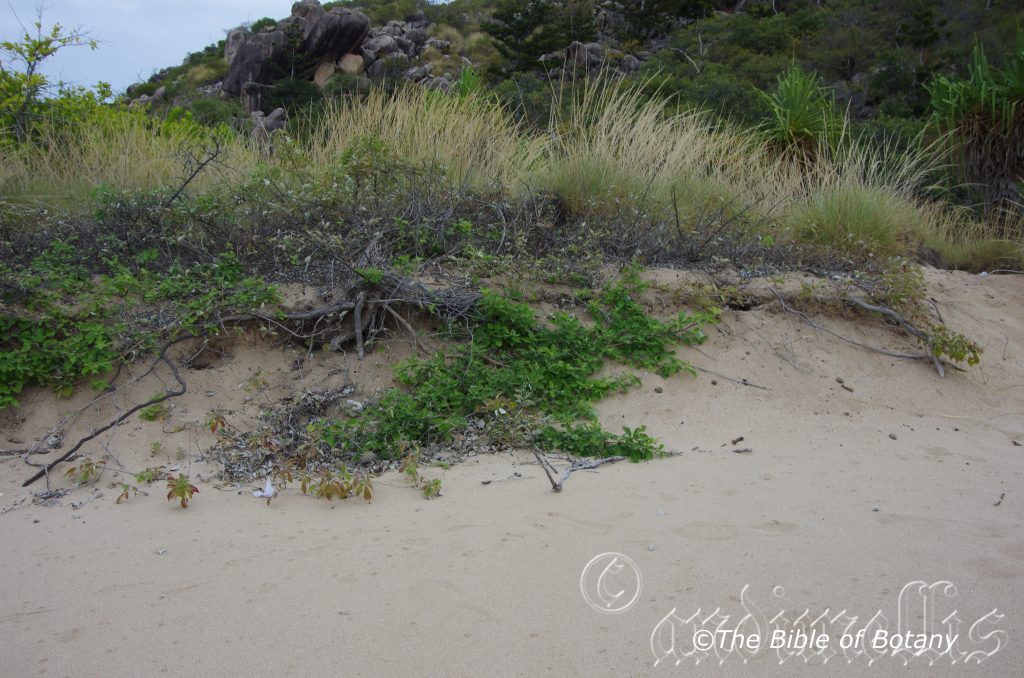
Magnetic Island Qld.
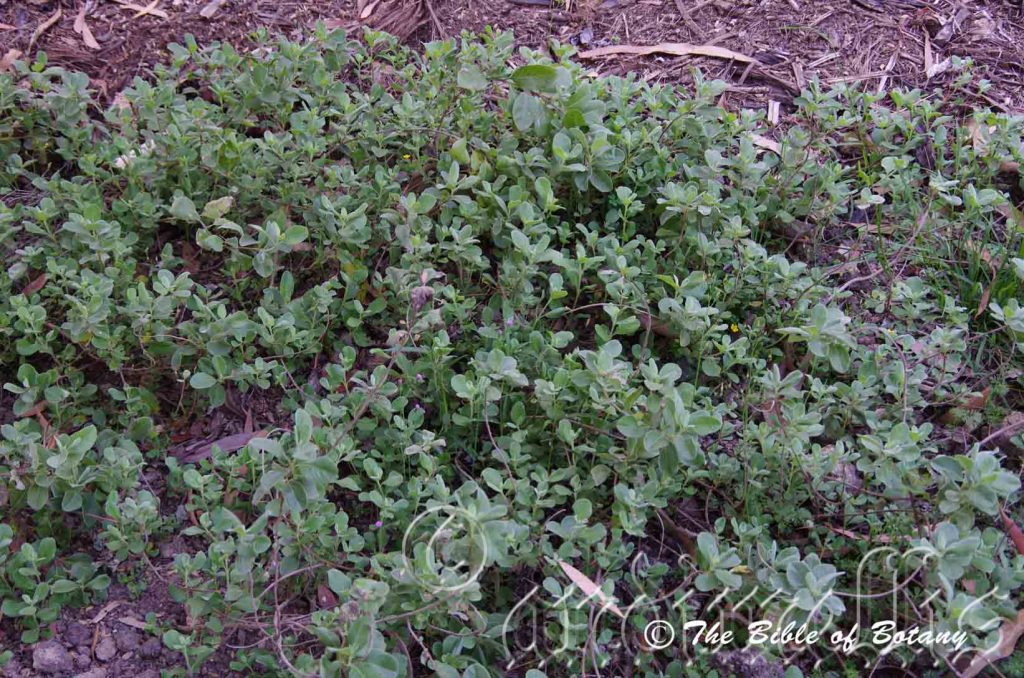
Mount Cootha Botanical Gardens Qld.
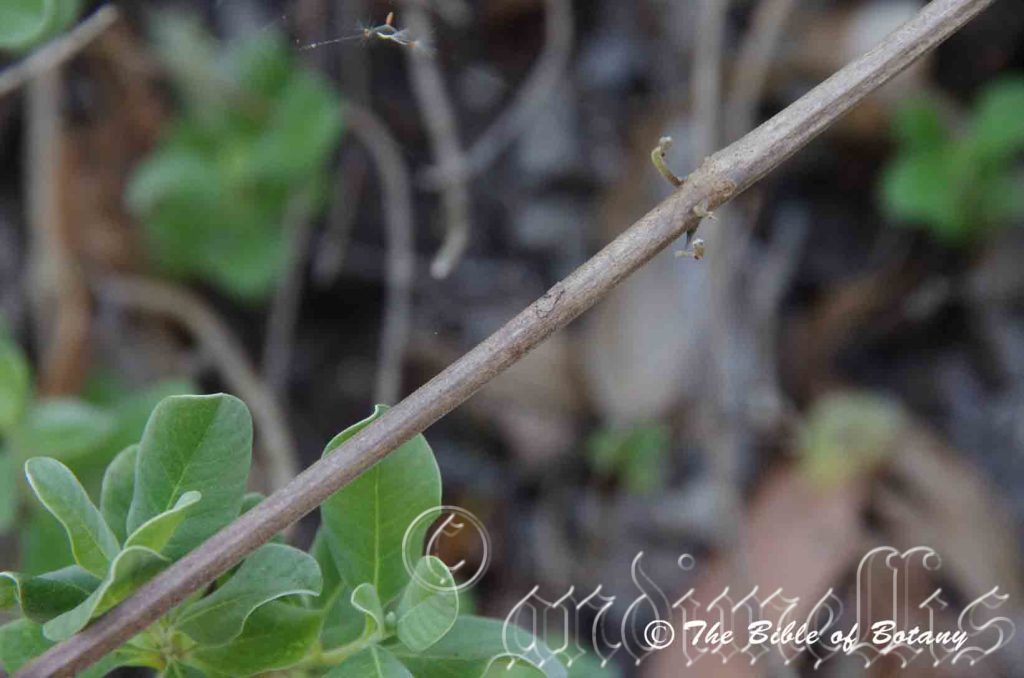
Mount Cootha Botanical Gardens Qld.
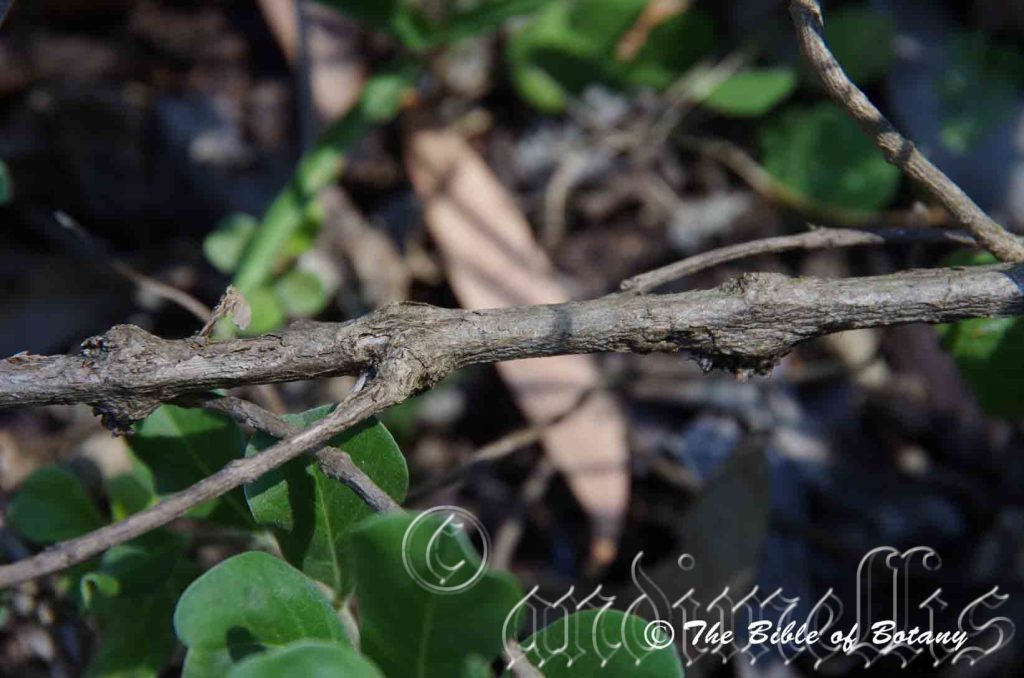
Mount Cootha Botanical Gardens Qld.

Magnetic Island Qld.

Mount Cootha Botanical Gardens Qld.
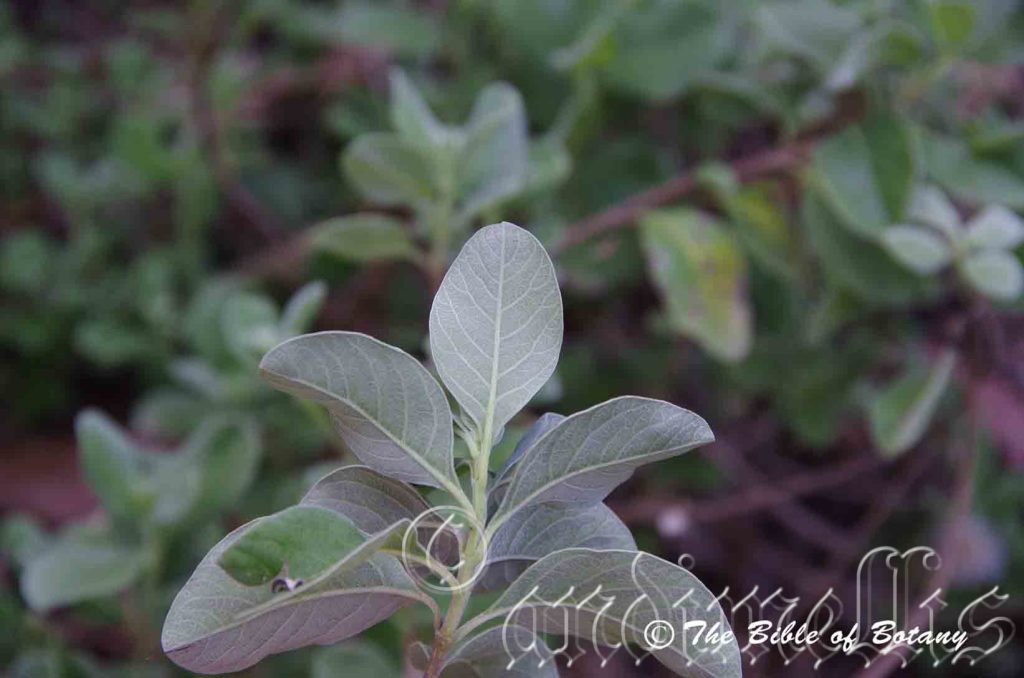
Mount Cootha Botanical Gardens Qld.

Magnetic Island Qld.
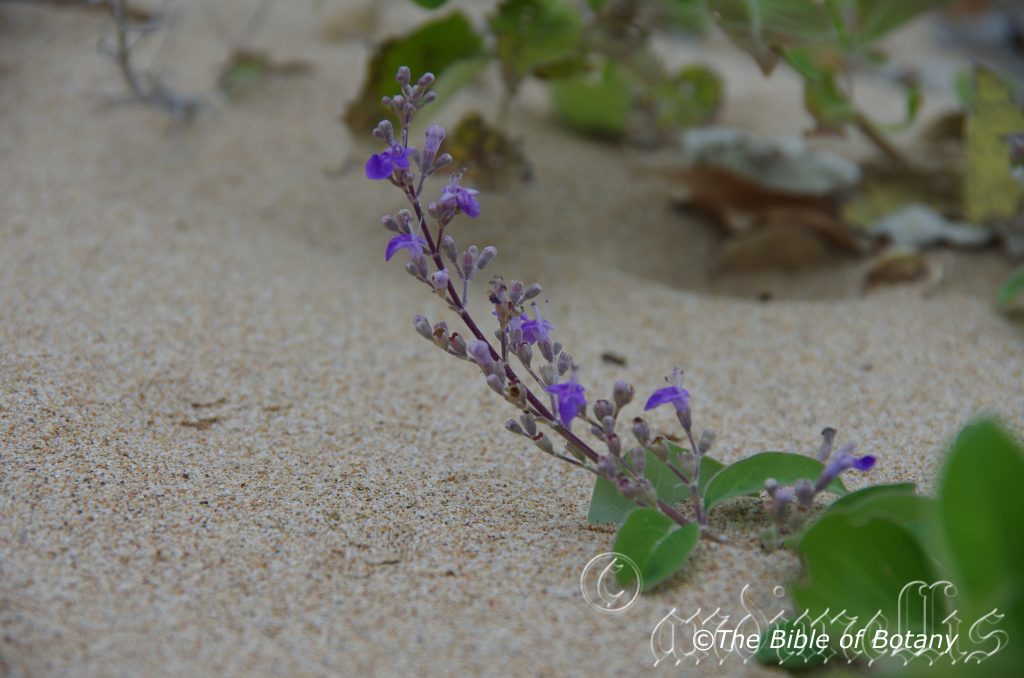
Magnetic Island Qld.
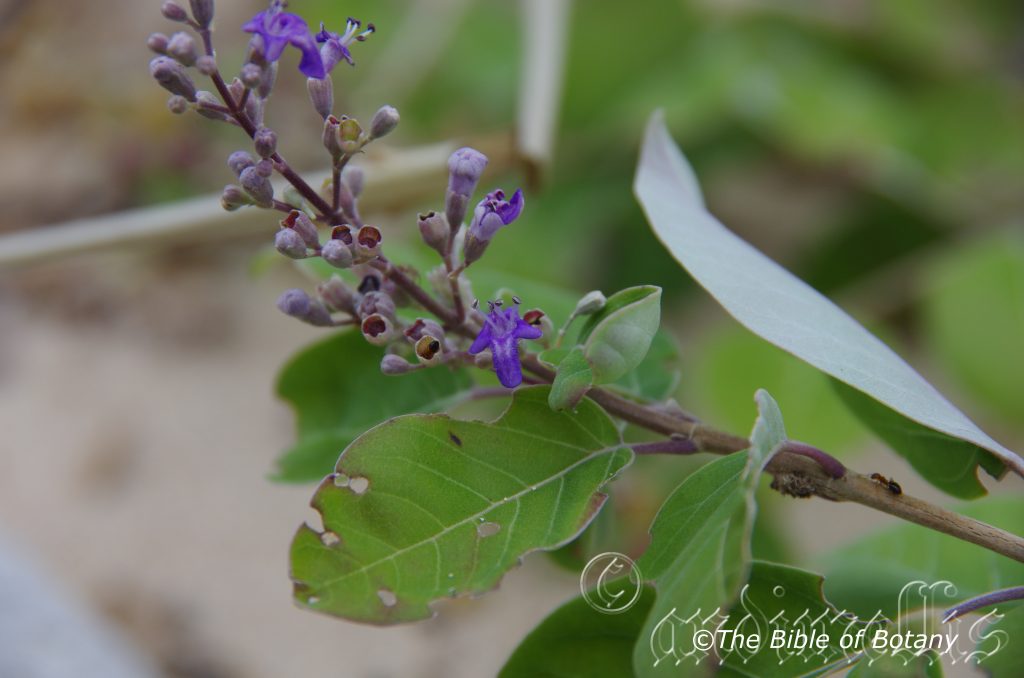
Magnetic Island Qld.
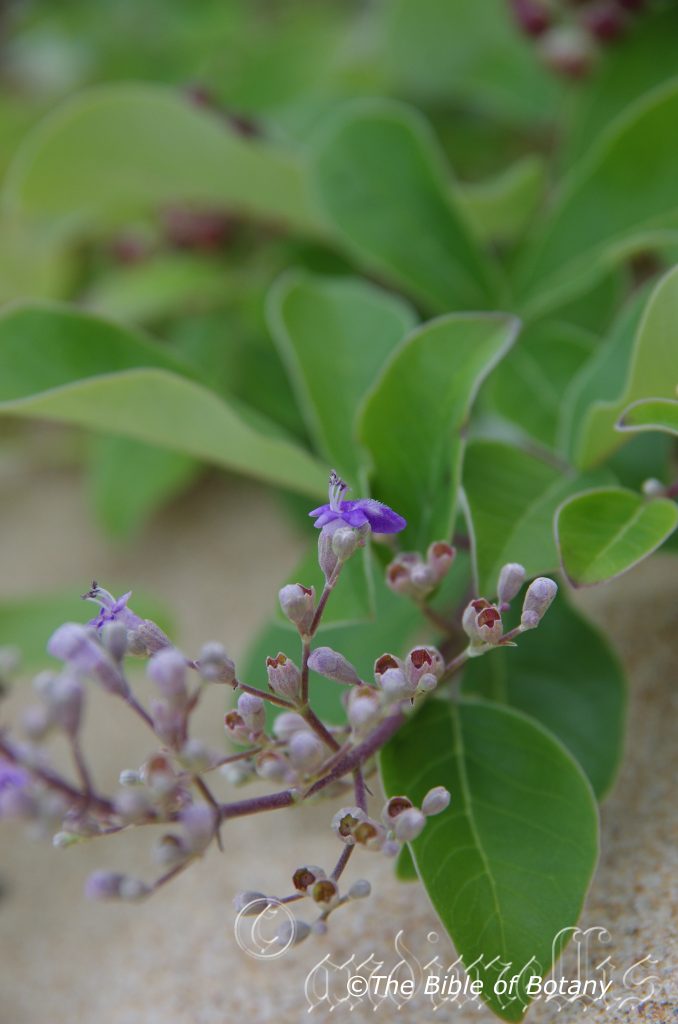
Magnetic Island Qld.
Vitex rotundifolia
Classification:
Unranked: Eudicots
Unranked: Asterids
Order: Lamiales
Family: Lamiaceae
Subfamily: Premnoideae
Genus: From Viti, which is the Latin name for grape vine. It refers to fruits, which are somewhat similar in appearance to those of the grape vines.
Specie: From Rotund?tus, which is Latin for round and Folium, which is Latin for foliage. It refers to leaves, which are round or much rounder than other species in the genus.
Sub specie:
Common Name: Round Leaf Vitex.
Distribution:
Vitex rotundifolia is found north east from the Prince Regent Nature Reserve in north western, Western Australia around the coast to Bundaberg in south eastern Queensland.
It is also found in Borneo, China, Fiji, Hawaii, India, Japan, Java, Kazan-retto, Korea, Lesser Sunda Island, Malaya, Maluku, Manchuria, Nansei-shoto, New Caledonia, New Guinea, Ogasawara-shoto, Papua, Philippines, Samoa, Society Is., South China Sea, Sri Lanka, Sulawesi, Sumatera, Taiwan, Thailand, Vanuatu and Vietnam.
https://avh.ala.org.au/occurrences/search?taxa=Vitex+rotundifolia#tab_mapView
Habitat Aspect Climate:
Vitex rotundifolia prefers dappled shade to full sun. It grows close to the coast on frontal dunes exposed estuaries or at times on the back dunes in open woodland heaths. The altitude ranges from 1 meter ASL to 7 meters ASL.
The temperatures range from 4 degrees in July to 40 degrees in January.
The rainfall ranges from lows of 700mm to 3000mm average per annum.
Soil Requirements:
Vitex rotundifolia prefers coarse sands, fine sands, sandy loams, peaty sands or light silts. The soils are usually derived from accumulated peaty beach sands or alluvial deposits along coastal estuaries. The soils pH ranges from 5pH to 8pH. It does not tolerate water logged soils however soils can moist throughout the year. Non saline soils to extremely saline soils are tolerated as are salt laden winds.
Height & Spread:
Wild Plants: 0.5m to 3m by 1m to 3m.
Characteristics:
Vitex rotundifolia usually grows as a prostrate ground cover with pale grey-brown, glabrous to sparsely scabrous or flaky bark. The branchlets are pale grey and only becoming blue-green or purplish near the apex where the newer leaf growth occurs. The blue-green twigs and shoots are densely covered in white to silver canescent hairs. The plants often form large subterranean trunks below the sand surface on frontal dunes. This is evident when wave erosion removes large quantities of sand from the front al dunes.
The alternate, ovate to obovate leaves measure 17mm to 45mm in length by 10mm to 30mm in width. The slightly oblique bases are broad cuneate to cuneate while the apexes are obtuse to broadly acute-obtuse. The concolourous laminas are blue-green, and covered in white to silvery canescent hairs on the upper lamina while the lower lamina is densely covered in white to silvery canescent hairs. The leaf margins are entire and recurve from the mid vein to the margins. The mid vein is prominent on the lower laminas while the 10 to 18 lateral veins are not prominent but are visible from both laminas. The petiole measures 3mm to 7mm in length.
The inflorescences are born on a thrice from the upper leaf axils or terminal. The thrice measure 40mm to 130mm in length. The blue–green to purplish peduncles and pedicels are covered in white to silvery glandular and tomentose hairs. The peduncles measure 35mm to 125mm in length while the pedicles measure 0.5mm to 2mm in length. The blue-green to purplish calyxes and 5 minute calyx lobes are erect, covered in white to silvery glandular and tomentose hairs externally and glabrous internally. The cyathiform tube of the calyxes measure 3mm to 4.5mm in length by 2.2mm to 3mm in diameter.
The pale blue, lavender to purple corollas are tubular on the basal half while the apex half supports 5 asymmetrical lobes. The corollas and lobes are covered in white glandular and tomentose hairs externally. Internally the lower lobe is covered in white villous hairs while the other 4 lobes are glabrous internally. The corolla tubes are covered in white villous hairs internally and measure 6mm to 9mm in length by 7mm to 10mm in width. The lobes measure 2.5mm to 6mm in length. The lower lobe is strongly spathulate and is the longest. The lateral lobes are broadly oblong while the upper two lobes are the shortest and narrowly oblong.
The 4 exserted stamens are free for their entire length and are attached to the basal half of the corolla tube. The filaments taper to the anthers and have a wide spreading base and measure 4mm to 8.5mm in length. The lilac to purple filaments are glabrous while the fawn to pale brown oblong anthers are fawn and measure 1.2mm to1.8mm in length.
The purple style and bifid stigma are glabrous while the densely glandular ovary is green and measures 1.2mm to 1.5mm in diameter. The pistil measures 8mm to 13mm in length. Vitex rotundifolia’s flowers appear throughout the year with a peak in the warmer months or after rain.
The fruits of Vitex rotundifolia are globose drupes. The large drupes are glabrous and covered in white film and measure 4.5mm to 5.5mm in length by 5mm to 6.5mm in diameter. The green drupes turn pale yellow then pale grey when ripe. The calyx lobes are persistent and the calyx and calyx lobes are persistent and accrescent, expanding to 5mm to 6.5mm in length on the base of the ripe fruit. The ovoidal seeds are enclosed in a stone. The stones measure 4mm to 5mm in length by 3mm to 4mm in diameter while the seeds measure 2.5mm in length by 1.5mm in diameter.
Wildlife:
Vitex rotundifolia’s wildlife is unknown to the author.
Cultivation:
Vitex rotundifolia is a magnificent medium shrub or larger ground cover that should be grown in association with other semi-arid species where some ground water is available throughout the year and full sun is assured. In cultivation it grows from 0.6 meters to 1 meter in height by 2 meters to 3 meters in diameter when grown in the open.
It grows exceptionally well on lighter sandy soils where a layer of leaf litter keeps the soil cool and moisture at an even level. If these requirements are met it can cope with temperatures as low as minus 2 degrees and up to 40 degrees. It is moderately drought resistant once established.
Add to the above, if it is given an adequate supply of water and a little native fertilizer on a regular basis the plants will respond with good flowering and fruit over a long period.
It should be more widely grown in warm temperate areas of Australia and tried at least as far south as Melbourne and Adelaide where sandstone or granite outcrops prevail and inland where some groundwater is guaranteed. It has lost popularity since smaller hybrids with large colourful flowers have come onto the market. It suits medium to large gardens and will suit long driveways, north facing sheds provided severe frosts are not a problem. It can be tipped pruned annually to increase bushiness and flowering and heavy pruning every 3 or 4 years is acceptable.
This shrub makes an excellent bonsai specimens as they are easy to work, long lived but can be finicky with leaf drop if care is not taken. New leaves will reshoot soon after dropping.
Propagation:
Seeds: Seeds of Vitex rotundifolia can be removed easily from the fruits.
Sow freshly treated seeds directly into a seed raising mix, keeping them moist not wet. Do not over water as the seeds will rot off before germination takes place. Place the trays in a cool shaded area with 50mm shade cloth in the bush house. When the seedlings are 30mm to 50mm tall, prick them out and plant them into 50mm native tubes using a good organic mix.
Cuttings: Fortunately Vitex rotundifolia cuttings strike easy. Use 100mm to 150mm semi hardwood cuttings from the present season’s growth. Take them in warmer months of the year. Remove half the leaves from the bottom section being careful not to tear the bark.
1 Prepare the cutting mix by adding two thirds sharp clean river sand, one third peat or one third perlite. These ingredients must be sterilized,
2 Select good material from non diseased plants,
3 Select semi green stems for cuttings,
4 Place the cutting on a flat, hard surface, and make a clean cut down one side of the cutting at the base for 10mm with a sharp sterile knife or razor blade. – This scarification of the node will increase the chances of roots emerging from this spot. Now remove all but one or two the leaves, leaving the apex leaves in tact. If the leaves are very large in proportion to the stem, cut off the apical halves.
5 Fill a saucer with water, and place a little medium strength rooting hormone into another container like a milk bottle top. Dip the node end of the cutting into the water and then into the rooting hormone. Tap off any excess hormone,
6 Use a small dipple stick or old pencil to poke a hole into the soilless potting mix. Ensure the hole is slightly larger than the stem diameter and be careful not to wipe the rooting hormone off the cuttings base. Place 2 to 4 cuttings in each of the 50mm native tubes,
7 I like to place the tubes in bucket with holes drilled in the bottom to allow excess water to drain out. A plastic bag that fits over the bucket is ideal to help maintain temperature and moisture. Place in a semi shaded, warm position like under 50mm shade cloth.
8 When the cuttings have struck, open the bag to allow air circulation for a few days to a week,
9 Once hardened off remove the cuttings from the bag and allow to further hardening for a few more days to a week,
10 Transplant into a good potting mix to grow on.
Fertilize using seaweed, fish emulsion or organic chicken pellets soaked in water on an alternate basis. Fertilize every two months until the plants are established then twice annually in early September or March to maintain health, vitality and better flowering.
Further Comments from Readers:
“Hi reader, it seems you use The Bible of Botany a lot. That’s great as we have great pleasure in bringing it to you! It’s a little awkward for us to ask, but our first aim is to purchase land approximately 1,600 hectares to link several parcels of N.P. into one at The Pinnacles NSW Australia, but we need your help. We’re not salespeople. We’re amateur botanists who have dedicated over 30 years to saving the environment in a practical way. We depend on donations to reach our goal. If you donate just $5, the price of your coffee this Sunday, We can help to keep the planet alive in a real way and continue to bring you regular updates and features on Australian plants all in one Botanical Bible. Any support is greatly appreciated. Thank you.”
In the spirit of reconciliation we acknowledge the Bundjalung, Gumbaynggirr and Yaegl and all aboriginal nations throughout Australia and their connections to land, sea and community. We pay our respect to their Elders past, present and future for the pleasures we have gained.
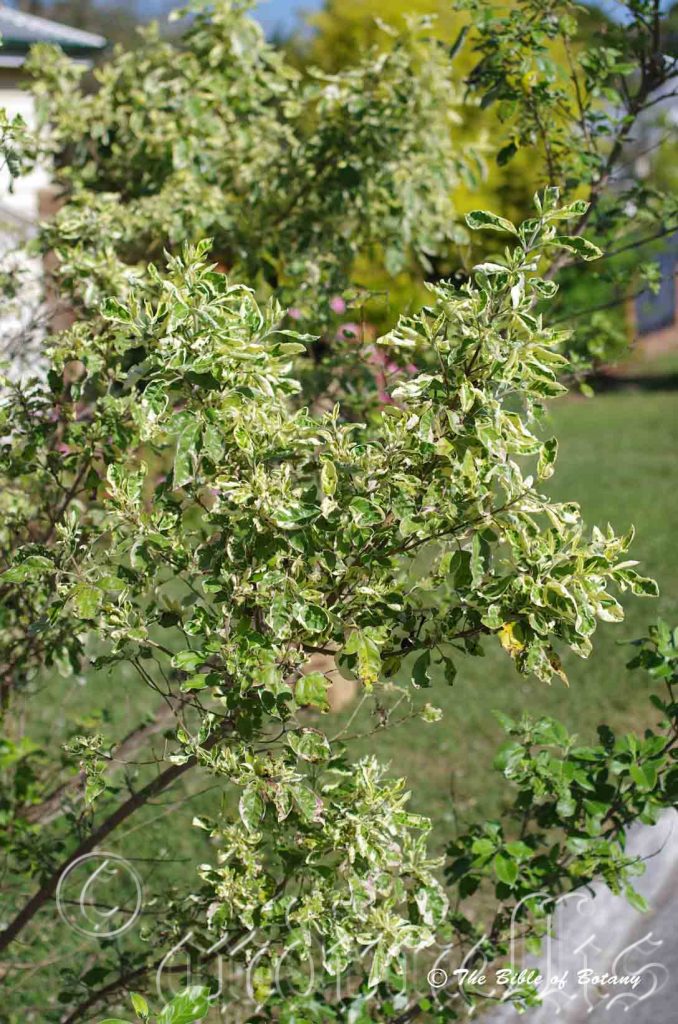
Grange Qld.
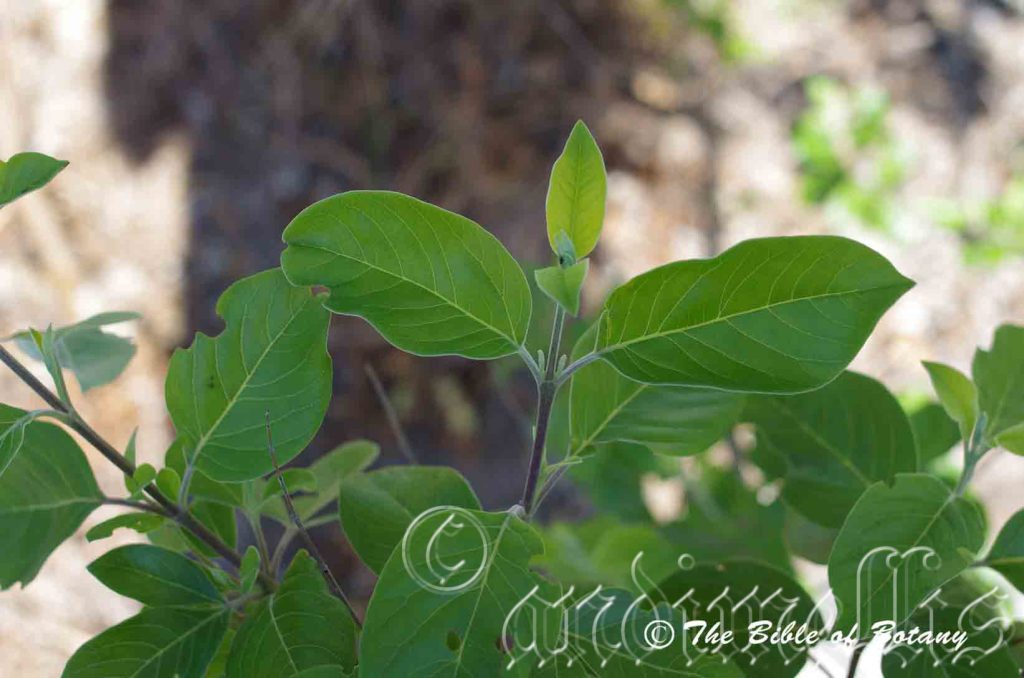
Grange Qld.
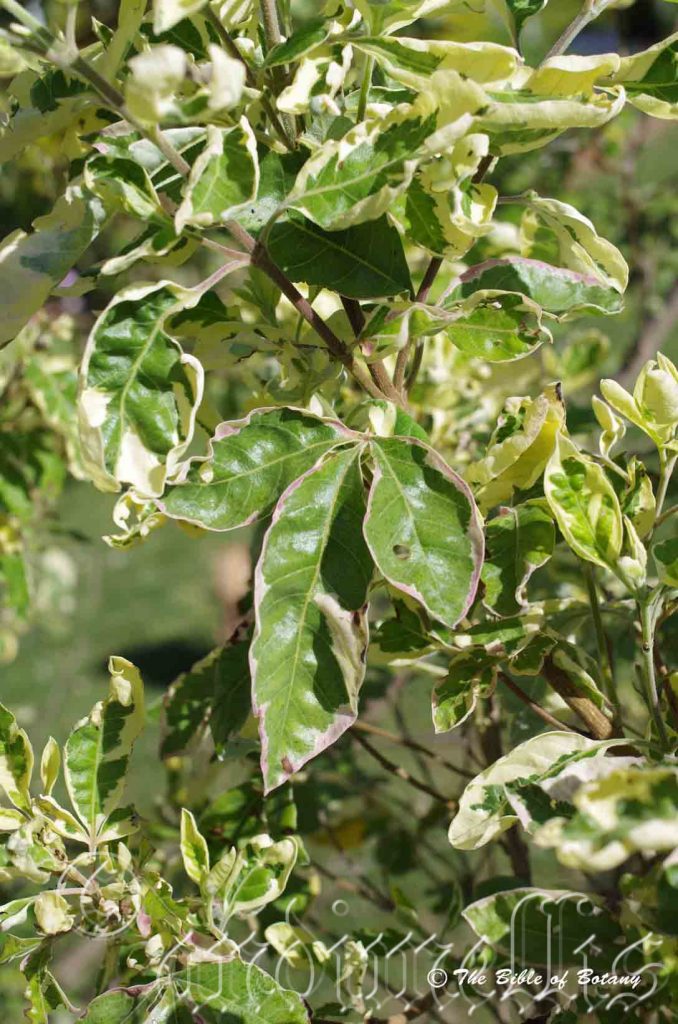
Grange Qld.
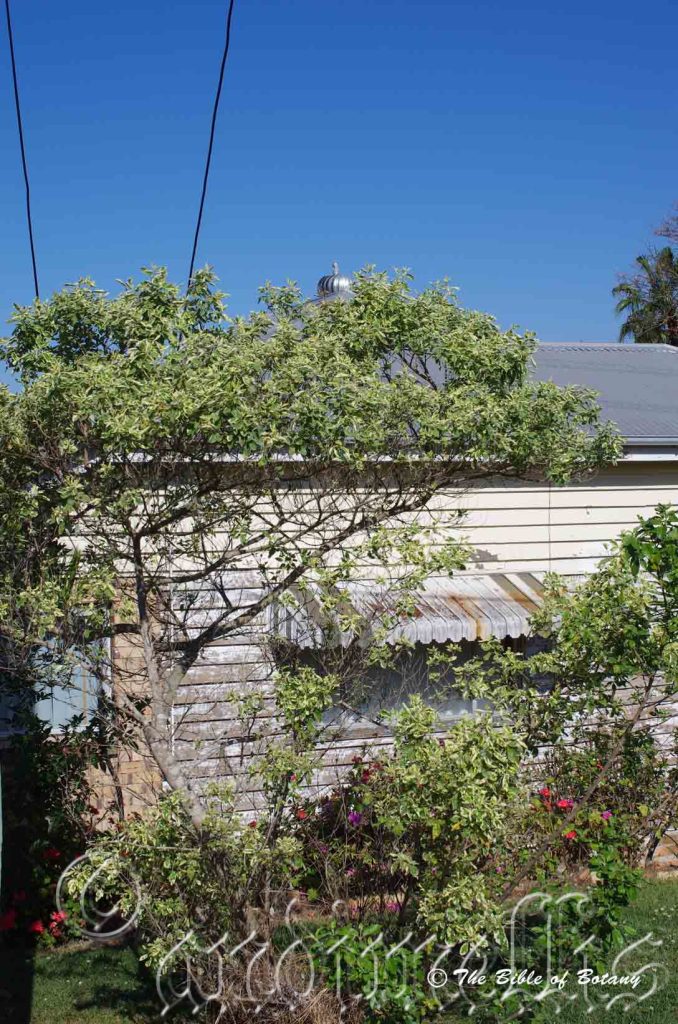
Grange Qld.
Vitex trifolia
Classification:
Unranked: Eudicots
Unranked: Asterids
Order: Lamiales
Family: Lamiaceae
Subfamily: Premnoideae
Genus: From Viti, which is the Latin name for grape vine. It refers to fruits, which are somewhat similar in appearance to those of the grape vines.
Specie: From Treîs/Tría, which are Ancient Greek or Tri, which is Latin for three and Folium which is Latin for a foliage. It refers leaves, which have three palmate leaflets.
Sub specie:
Common Name: Round Leaf Vitex.
Distribution:
Vitex trifolia is found south the Torres Straight Islands and the tip of Cape York Peninsular in Queensland to Byron Bay in far north eastern coastal New South Wales. It is mainly found along the coastal strip and off shore islands except for 2 populations on the Leichardt River and Home Bush National Park north east of Mount Isa.
https://avh.ala.org.au/occurrences/search?taxa=Vitex+trifolia#tab_mapView
Habitat Aspect Climate:
Vitex trifolia prefers dappled shade to full sun. It grows close to the coast in littoral Rainforests, monsoonal rainforests, vine forests, on the back dune heaths and frontal dunes. The altitude ranges from 3 meters ASL to 160 meters ASL.
The temperatures range from 4 degrees in July to 40 degrees in January.
The rainfall ranges from lows of 700mm to 3000mm average per annum.
Soil Requirements:
Vitex trifolia prefers coarse sands, fine sands to gravelly sands or sandy loams. The soils are usually derived from accumulated peaty beach sands, alluvial coastal estuary deposits or at times coarse rocky river gravel loams deposits. The soils pH ranges from 5pH to 8pH. It does not tolerate water logged soils however soils usually remain moist throughout the year through capillary action. Non saline soils to extremely saline soils are tolerated.
Height & Spread:
Wild Plants: 1.5m to 6m by 2m to 4m.
Characteristics:
Vitex trifolia grows as an erect to spreading shrub with semi erect to semi divaricate pale grey to pale grey-brown, glabrous to sparsely scabrous or flaky trunk and stems. The branchlets are pale grey and turn purple-green or purple near the apex where the newer leaf growth occurs. The purple-green twigs and shoots are covered in white to pale grey tomentose hairs.
The opposite usually trifoliate leaves maybe simple paired trifoliate or at times have 5 leaflets, measure 50mm to 100mm in length by 45mm to 80mm in width. The central or apex leaflet is the longest. The asymmetrical, elliptical, oblong-elliptical or obovate leaflets measure 30mm to 85mm in length by 20mm to 45mm in width. The petioles and petiolules are purple or pale blue green. The petioles measure 5mm to 60mm in length while the petiolules measures 3mm to 15mm in length. The slightly oblique bases are broad cuneate to cuneate while the apexes are long tapering acuminate or rarely obtuse-acuminate. The discolourous laminas are deep grey-green or pale blue green and glabrous on the upper lamina while the lower lamina is deep purple or pale blue green and densely covered in white or pale grey tomentose hairs. The leaf margins are entire while the laminas are flat, slightly recurve or decurve from the mid vein to the margins. The mid vein is prominent on the lower laminas while the 12 to 24 lateral veins are slightly prominent on the lower laminas. The mid vein is distinctly visible from the upper laminas while the lateral veins are faintly visible.
The inflorescences are born on thrice from the upper leaf axils or terminals. The thrice measure 50mm to 180mm in length. The pale blue-green, blue–green to purplish peduncles and pedicels are covered in white to silvery glandular and tomentose hairs. The peduncles measure 35mm to 125mm in length while the pedicles measure 0.5mm to 2mm in length. The blue-green to purplish calyxes and 5 minute calyx lobes are erect, covered in white to pale grey glandular and tomentose hairs externally and glabrous internally. The cyathiform tube of the calyxes measure 2mm to 4mm in length by 1.6mm to 2.8mm in diameter.
The pale blue, lavender to mid purple corollas are cylindrical on the basal half while the apex half supports 5 asymmetrical lobes. The corollas and lobes are covered in white glandular and pulverulent hairs externally. Only the inner tube of the corolla is covered in white villous hairs. The corolla tubes measure 4mm to 6.5mm in length by 2mm to 3mm in diameter. The lobes measure 1.5mm to 5mm in length. The lower lobe is spathulate with the apex being ovoidal and is the longest. The lateral lobes are broadly oblong while the upper two lobes are the shortest and triangular.
The 4 exserted stamens are free for their entire length and are attached to the basal half of the corolla tube. The filaments taper to the anthers and have a wide spreading base and measure 3.5mm to 6mm in length. The lilac to purple filaments are glabrous while the fawn to pale grey-brown oblong anthers measure 1.2mm to1.6mm in length.
The lilac to purple style and shortly bifid stigma are glabrous. The ovary is green, glabrous on the basal half and finely resinous on the apex half. The ovaries measure 1mm to 1.5mm in diameter. The filiform pistil measures 5mm to 8mm in length. Vitex trifolia’s flowers appear from late August through to mid-December but can be extended in favourable seasons and under cultivation.
The fruits of Vitex trifolia are globose drupes. The drupes are glabrous and measure 4.5mm to 5mm in length by 3mm to 3.6mm in diameter. The green drupes turn pale yellow then deep grey to black when ripe. The calyxes are persistent and accrescent, expanding to 3mm to 4mm in length on the base of the ripe fruit. The ovoidal seeds are enclosed in a stone. The stones measure 4mm to 5mm in length by 3mm to 3.5mm in diameter while the seeds measure 3mm in length by 1mm in diameter.
Wildlife:
Vitex trifolia’s do not appear to have any predators though the shrubs are always frequented by butterflies of all descriptions and native bees when in flower. This is probably the best of the flowering native shrubs for attracting butterflies. It certainly rivals the exotic butterfly bush. (Buddleia)
Several exotic species of butterflies and moths feed on the leaves of Vitex trifolia along with at least one native species the Teak defoliator Hyblaea puera. This small moth has an important role to play in nature as it hosts many parasitic wasps and fungi favouring Vitex especially when Teak plants are deciduous. The moths are also an important food source for most insectivorous birds including honey eaters when they are feeding their chicks.
Cultivation:
Vitex trifolia is a beautiful small tree or large shrub that can be grown in association with other forest or dune plants. It is ideal at the edge of a forest where they can receive plenty of sunlight. It makes excellent small park trees and small trees for that small garden offering quick growth, and good shade. In cultivation it will grow from 4 meters to 5 meters in height by 3 meters to 4 meters in diameter when grown in the open as a small tree or 2 meters to 3 meters by 3 meters to 4 meters wide as a large shrub.
There are some excellent varieties around including variety purpurea which has very deep purple lower laminas, a dwarf form and a variety with variegated foliage. The variegated form varies greatly in variegation from having cream margins on the pale blue-green leaves to being strongly covered in cream leaves.
It is a very beautiful shrub growing from 3 meters to 4 meters in height by 2 meters to 3 meters in diameter when grown in the open as a small tree or 2 meters to 3 meters by 1.5 meters to 3 meters in diameter as a large shrub. The purple variety grows similar to its parents but is stronger in colour.
It grows exceptionally well on lighter sandy soils where deep leaf litter keeps the soil cool and moisture at an even level. If these requirements are met they can cope with temperatures as low as minus 2 degrees and up to 42 degrees. It is moderately drought resistant once established but will abort leaves under stress quickly.
Add to the above, if it is given an adequate supply of water and a little native fertilizer on a regular basis the plants respond with good flowering and fruit over a long period. Flowering can be enhanced by removing spent flowers and fruits.
I cannot over emphasize the attractiveness of this shrub or small tree as an addition to the garden either small medium or large. Its attractiveness to feeding butterflies and moths when in flower makes it one of Australia’s best natives. The sheer beauty of the flowers despite being rather small and the long flowering period add to its charm in the garden. Added to all this it is a favoured tree for small nesting birds and small insect eating birds that will clamour through the foliage for a feed.
Imagine a garden using a mixture of Vitex melicopea in the back ground, Vitex trifolia in the mid ground as a tree and Vitex rotundifolia planted in the foreground and between the other 2 trees as a ground cover. The Vitex trifoliata is inter planted in a sparse like a heath scene with mixed small Grevillea specie or Verticordia specie using fine leaf plants with lime green and grey foliages interspersed with colourful annuals and strap leaf Lomandra specie in the shade and Anigozanthos flavida in the fore ground in full sun. The wild life in birds and native insects would be immense for such a small area.
Another scene to try would be to use Vitex trifolia as both a tree and shrub in the one bed mixing the different foliage colours for maximum affect.
This tree could be used as bonsai plant as they are hardy and easy to manage.
Propagation:
Seeds: Seeds of Vitex trifolia can be removed easily from the fruits.
Sow fresh seeds directly into a seed raising mix, keeping them moist not wet. Do not over water as the seeds will rot off before germination takes place. Place the trays in a cool shaded area with 50mm shade cloth in the bush house. When the seedlings are 20 to 25 mm tall, prick them out and plant them into 50mm native tubes using a good organic mix.
Cuttings: Fortunately Vitex trifolia cuttings strike easy and must be used when a particular variety or form is required to ensure purity. Use 100mm to 150mm long semi hardwood to hardwood cuttings from the present season’s growth. Take them in warmer months of the year. Remove half the leaves from the bottom section being careful not to tear the bark.
1 Prepare the cutting mix by adding two thirds sharp clean river sand, one third peat or one third perlite. These ingredients must be sterilized,
2 Select good material from non diseased plants,
3 Select semi green stems for cuttings,
4 Place the cutting on a flat, hard surface, and make a clean cut down one side of the cutting at the base for 10mm with a sharp sterile knife or razor blade. – This scarification of the node will increase the chances of roots emerging from this spot. Now remove all but one or two the leaves, leaving the apex leaves intact. If the leaves are very large in proportion to the stem, cut off the apical halves.
5 Fill a saucer with water, and place a little medium strength rooting hormone into another container like a milk bottle top. Dip the node end of the cutting into the water and then into the rooting hormone. Tap off any excess hormone,
6 Use a small dipple stick or old pencil to poke a hole into the soilless potting mix. Ensure the hole is slightly larger than the stem diameter and be careful not to wipe the rooting hormone off the cuttings base. Place 2 to 4 cuttings in each of the 50mm native tubes,
7 I like to place the tubes in bucket with holes drilled in the bottom to allow excess water to drain out. A plastic bag that fits over the bucket is ideal to help maintain temperature and moisture. Place in a semi shaded, warm position like under 50mm shade cloth.
8 When the cuttings have struck, open the bag to allow air circulation for a few days to a week,
9 Once hardened off remove the cuttings from the bag and allow to further hardening for a few more days to a week,
10 Transplant into a good potting mix to grow on.
Fertilize using seaweed, fish emulsion or organic chicken pellets soaked in water on an alternate basis. Fertilize every two months until the plants are established then twice annually in early September or March to maintain health, vitality and better flowering.
Further Comments from Readers:
“Hi reader, it seems you use The Bible of Botany a lot. That’s great as we have great pleasure in bringing it to you! It’s a little awkward for us to ask, but our first aim is to purchase land approximately 1,600 hectares to link several parcels of N.P. into one at The Pinnacles NSW Australia, but we need your help. We’re not salespeople. We’re amateur botanists who have dedicated over 30 years to saving the environment in a practical way. We depend on donations to reach our goal. If you donate just $5, the price of your coffee this Sunday, We can help to keep the planet alive in a real way and continue to bring you regular updates and features on Australian plants all in one Botanical Bible. Any support is greatly appreciated. Thank you.”
In the spirit of reconciliation we acknowledge the Bundjalung, Gumbaynggirr and Yaegl and all aboriginal nations throughout Australia and their connections to land, sea and community. We pay our respect to their Elders past, present and future for the pleasures we have gained.
Vittadinia hispidula
Classification:
Unranked: Eudicots
Class: Asterids
Order: Asterales
Family: Asteraceae
Genus: Is named in honour of Carlo Vittadinia; 1800-1865, who was an Italian botanist who specialized in fungi.
Specie: From Hispidus, which is Latin for short bristly hairs. It refers to a structure or organ, which has short, bristly course hairs.
Variety: Vittadinia hispidula var. hispidula. From Hispidus, which is Latin for short bristly hairs. It refers to a structure or organ, which has short, bristly course hairs.
Variety: Vittadinia hispidula var. setosa. From Hispidus, which is Latin for short bristly hairs. It refers to a structure or organ, which has short, bristly course hairs.
Common Name:
Distribution:
Vittadinia hispidula var. hispidula is found south from Mount Carbine far north eastern Queensland to Batemans Bay in central southern coastal New South Wales. It occurs on the western plains to the coast in the north and on and east of the Great Dividing Range in the south.
Vittadinia hispidula var. setosa is restricted to a small area in central Western Australia between Barrow Island, Coral Cove, the Fortescue River and the Ashburton River with another isolated population further north along the banks of the Ord River.
In central Australia it is found in Simpson’s Gap National Park east to the Strzelecki Sand Dunes.
It is also found south from the Tablelands in the lower portion of Cape York Peninsular in far north eastern Queensland to Batemans Bay in central southern coastal New South Wales. It occurs on the western plains to the coast in the north and on and east of the Great Dividing Range in the south. There is a population further west in Queensland from around Mount Isa to Dajarra.
https://avh.ala.org.au/occurrences/search?taxa=Vittadinia+hispidula#tab_mapView
Habitat Aspect Climate:
Vittadinia hispidula prefers dappled shade to full sun. It grows in sclerophyll forests, woodlands, on beach dunes, along seasonal creek riparian zones, billabongs or lagoons. The altitude ranges from 5 meters ASL to 1200 meters ASL.
The temperatures range from 2 degrees in July to 40 degrees in January.
The rainfall ranges from lows of 200mm to 2400mm average per annum.
Soil Requirements:
Vittadinia hispidula prefers coarse sands, fine sands, sandy loams, peaty sands to light clays or screes. The soils are usually derived from sandstone, granites, accumulated beach sands or accumulated coral sands. The soils pH ranges from 5pH to 8pH. It does not tolerate water logged. Non saline soils to moderately saline soils are tolerated.
Height & Spread:
Wild Plants: 0.2m to 0.5m by 0.3m to 0.7m.
Characteristics:
Vittadinia hispidula grows as an erect annual Daisy with mid green stems. The stems are sparsely to moderately covered in stiff, white, glandular, hispid hairs.
The opposite linear, oblong to obovate leaves measure 10mm to 55mm in length by 2mm to 8mm in width. The mid green petioles are sparsely to moderately covered in stiff, white, glandular, hispid hairs and measure 0mm to 2mm in length. The bases taper to the petiole while the apexes are obtuse or shortly apiculate. The discolourous laminas are mid green to mid deep green and sparsely covered in stiff, white, glandular, hispid hairs on the upper lamina while the lower lamina is paler and sparsely to moderately covered in stiff, white, glandular, hispid hairs. The laminas recurve upwards from the midvein to the margins especially on the apical half. The margins are entire or often lobed. The lobes are linear. The mid vein is prominent on the lower laminas while the lateral veins are slightly prominent on the lower laminas. The mid vein is visible from the upper laminas.
The inflorescences are 2 or 3 heads born on long peduncles from the terminals. The mid green to deep green peduncle is sparsely to moderately covered in stiff, white, glandular, hispid hairs. The peduncles measure 25mm to 65mm in length.
The mid green to deep green involucral bracts often have purple apexes and are sparsely to moderately covered in stiff, white, glandular, hispid hairs externally and are glabrous internally. The broad linear involucral bracts measure 5mm to 6mm in length by 1mm to 1.5mm in width. The white, pastel blue, pastel lavender to pale purple ray florets are oblong and measure 4mm to 5mm in length by 1mm to 1.5mm in width. The 25 to 30 yellow florets extend past the ray florets by 2.5mm to 4mm. The flowers appear throughout the year.
The fruits are flattened, oblanceolate, obovate achenes with paler thickened margins. The achenes are moderately covered in long white and measure 4.5mm to 5mm in length by 3mm to 3.6mm in diameter. The cream achenes turn pale, dull brown to mid, dull brown when ripe. The achenes measure 2.5mm to 3.5mm in length by 1.4mm to 1.8mm in width and 0.4mm to 0.5mm in depth. The pappus measure 5mm to 6mm in length.
Confusing Subspecie Varieties:
Vittadinia hispidula var. hispidula’s involucral bracts are covered in minute, white glandular hairs externally. The achenes taper strongly at the apex with a constricted area below the pappus.
Vittadinia hispidula var. setosa’s glabrous involucral bracts vary from a few to being numerous. The achenes taper slightly at the apex and are not constricted or very slightly constricted below the pappus.
Wildlife:
Vittadinia hispidula’s wildlife is unknown to the author.
Cultivation:
Vittadinia hispidula is a very beautiful small native annual herb which is suitable for small gardens to the largest garden. It is an excellent colourful addition for sub-tropical, semi-arid and warm temperate gardens. As garden subjects it grows from 0.2 meters to 0.5 meters in height by 0.3 meters to 0.6 meters in diameter
It is fast growing, drought tolerant once established and is cold tolerant to temperatures at least as low as minus 1 degree.
It is most suitable for use around medium fish and frog ponds, sunny courtyards, besides pathways, rockeries and along banks. If it is placed around ponds then I would place it towards the center not at the ends and plant it in large clusters or in a straight row for a very formal look or use curves for the natural look. Here the choice of companion plants to use either side is limited only by size of the area to be landscaped. Leaf size or flower colour is limited by your imagination. The only limitation would be not to use other yellow flowering plants.
It is great adjacent to small areas of bush close to paths or the house so their pastel purple, yellow cantered flowers can be viewed regularly. It is also suited for planting in small rockeries as a fill in plant. Here it can be planted in small groups of 3 to 5 or as a standalone plant to create a harsher more barren look with other arid plants. If it is surrounded by shorter plants with fine foliages and red flowers will see it dominate at the center giving height and strength to the bed especially when they are in flower.
It can be tip pruned if a smaller annual is required. Ensure that the whole plant or at least most of it is on display from most sections of the garden as the flowers are a real bonus.
Whether they are in flower or not these plants will catch your attention. Mass plantings are best achieved by planting them at 0.3 meters to 0.5 meter centers.
Propagation:
Seeds: The seeds can be sown directly onto a seed raising mix. Cover them with 2mm of fine sand and keep moist not wet. Place the tray in a warm sunny position or beneath 30mm shade cloth.
When the seedlings are 20mm to 30mm tall, prick them out and plant them into 50mm native tubes using a good organic mix.
Once the seedlings reach 150mm to 200mm in height they can be planted out into their permanent position.
Fertilize using seaweed, fish emulsion or organic chicken pellets soaked in water on an alternate basis. Fertilize from the time they are planted out for 2 weeks to maintain health, vitality and better flowering.
Further Comments from Readers:
“Hi reader, it seems you use The Bible of Botany a lot. That’s great as we have great pleasure in bringing it to you! It’s a little awkward for us to ask, but our first aim is to purchase land approximately 1,600 hectares to link several parcels of N.P. into one at The Pinnacles NSW Australia, but we need your help. We’re not salespeople. We’re amateur botanists who have dedicated over 30 years to saving the environment in a practical way. We depend on donations to reach our goal. If you donate just $5, the price of your coffee this Sunday, We can help to keep the planet alive in a real way and continue to bring you regular updates and features on Australian plants all in one Botanical Bible. Any support is greatly appreciated. Thank you.”
In the spirit of reconciliation we acknowledge the Bundjalung, Gumbaynggirr and Yaegl and all aboriginal nations throughout Australia and their connections to land, sea and community. We pay our respect to their Elders past, present and future for the pleasures we have gained.
Vittaria elongata
Classification:
Unranked: Tracheophytes
Unranked: Polypodiophyta
Class: Polypodiopsida
Order: Polypodiales
Family: Pteridaceae
Subfamily: Vittarioideae
Genus: From Vittatus, which is Latin for a stripe or ribbon. It refers to fronds, which are long and ribbon like.
Specie: From Elongatus, which is Latin for to draw out or lengthen. It usually refers to leaves, which are somewhat linear with parallel margins and are longer than other species in the genus.
Sub specie:
Common Name: Tape Fern.
Distribution:
Vittaria elongata is found in 2 disjunct populations south from the Torres Straight Islands to the Eungella National Park and the Maroochydore hinterland in eastern Queensland to the Macleay River in north eastern coastal New South Wales. It is found on and east of the Great Dividing Range.
https://avh.ala.org.au/occurrences/search?taxa=Vittaria+elongata#tab_mapView
Habitat Aspect Climate:
Vittaria elongata prefer deep shade to medium shade. It grows as an epiphyte on the trunks of trees with a spongy bark, in the forks of trees or rarely as a lithophyte in cool tropical rainforests, warm sub-tropical rainforests, warm temperate rainforests, adjacent to waterfalls and seepage lines on sheltered cliffs in rainforests. The altitude ranges from 100 meters ASL to 900 meters ASL.
The temperatures range from 0 degrees in August to 35 degrees in February.
The rainfalls range from lows of 500mm to 3200mm average per annum. Additional moisture is often acquired through orographic precipitation.
Soil Requirements:
Vittaria elongata prefer hosts that grow in better quality cool moist sandy loams to medium clays.
Height & Spread:
Wild Plants: 0.2m to 0.9m by 0.4m to 1m.
Characteristics:
Vittaria elongata usually grows as a pendant epiphytic fern or at times a lithophytic fern with long thin rhizomes. The rhizomes measure 4mm to 6mm in diameter. The rhizomes are densely covered in semi glossy, deep reddish-brown aging black, narrow lanceolate scales. The scales measure 4mm to 8mm in length. The black roots are covered in long spreading reddish hairs.
The short, erect to pendent stipes are dimorphic. The deep brown to black stipes are glabrous. The concolourous laminas are coriaceous, deep green to sea-green and semi glossy to glossy. The laminas are flat while the margins are entire. The midvein is slightly prominent
The simple, linear, sterile fronds measure 80mm to 300mm in length by 1.5mm to 5mm in width.
The simple, linear, fertile fronds measure 200mm to 900mm in length by 6mm to 10mm in width. Vittaria elongata’s linear sori are submarginal on the apical half.
Wildlife:
Vittaria elongata’s wildlife is unknown to the author.
Cultivation:
Vittaria elongata are excellent ferns for cultivation in cool, wet, shady areas but are difficult and slow to establish. When the location is right it will thrive. It is most suitable for use as a rainforest understory plant where they can break the monotony of large deep green leaves. It likes a regular native fertilizer dispensed as a foliar spray and moist atmospheric conditions.
It always looks green and fresh giving a tropical look in a short time. It is cold tolerant to temperatures as low as minus 2 degrees once established though some frond burning may occur if directly exposed to frost.
Propagation:
Fern Spores: All ferns that are declared rare, vulnerable or endangered are protected by Federal and State Laws and must not be removed from the wild unless you are a land developer, forestry, mining company or main Roads department etc. This includes bulbs, roots, leaves and flowers. No part of any plant can be removed from Federal, State or Local Government land without the prior permission of the authority and this includes the spore.
Most people are put off at the thought of growing ferns from spore. Like all plants that produce their offspring from seed or spore the methods are basically the same. Remember nature has been doing this for millions of years and has been very successful. I have had excellent results growing over 200 different species of Australian ferns so don’t be afraid. Give it a go.
The spores of Vittaria elongata can be removed easily from the fronds as the fertile fronds begin to brown off or the sporangia begin to open. Cut a couple of fronds and place in a paper bag for a week or so in a cool shady place.
Step 1. Select spore from the fern fronds. Wait until the fern is just starting to release its spore. Rinse the fronds under clean running water and dry. This is to wash off any other spores from rogue ferns that may have settled onto the fronds. (There is nothing worse than having common brake or common soft bracken contaminating a prized tree fern or epiphyte.)
Step 2. Place the dry fronds in a clean brown paper bag and keep them in a cool dark place like the linen closet for about a week to ten days before you are ready to sow the spore. The exception to this rule applies to ferns, which produce green spores. These must be sown immediately that they are released. Todea Barbara is a good example of a fern, which produces green spore.
Step 3. Take a large ice cream container, a small ice cream container and a clean clear plastic bag large enough to seal the large ice cream container and three or four milk bottle tops.
Step 4. Punch or drill 6 to 10 5mm holes in the bottom of the small ice cream container.
Step 5. Wash both containers, tops and plastic bag so that they are very clean and sterile.
Step 6. Use a clean fine seed raising mi. We used 30mm fine sand, 30mm peat and 30mm perlite and 10mm vermiculite. We used crushed basalt, crusher dust and peat in a 50:50 ratio for epiphytes. Moisten the mix enough that water does not run out when the mix is squeezed between the fingers.
Step 7. Place the moisten mix (Enough to half fill the small ice cream container) in the microwave oven with a large glass of water for 7 or 8 minutes, until the water is boiling. Allow them to cool in the oven. You will need the water later so do not tip it out.
Step 8. Take the brown paper bag out of the linen closet. Shake the bag and remove the fronds. You should have a yellow, brown, black or rarely greenish brown or ochre powder or very fine, small round pin head size spore depending on the specie involved.
Step 9. Remove the mixture from the oven once it has cooled and place it in the small ice cream container and level.
Step 10. Sprinkle the spore sparsely over the mixture in the small ice cream container.
Step 11. Place the milk bottle tops in the large ice cream container with the flat surface facing down. Place the small ice cream container in the large ice cream container so that it is sitting on the milk bottle tops.
Step 12. Remove the water from the microwave and pour it into the larger ice cream container so there is 25mm to 30mm of water in the bottom.
Step 13. Place the ice cream containers in the plastic bag and seal. Step 14. Place the contents and bag in a warm shady place preferably 50mm to 70mm shade depending on the specie. Shade houses and some window sills are ideal.
Step 15. The surface should turn green within a week to two weeks. The prothallus will then develop. From the prothalus the first true fronds will appear. Wait until the ferns are 20mm to 35mm in height before you attempt to transplant them. Once they are ready open the bag up slightly and allow the air to flow around the little ferns. Every 3 to 5 days open the bag a little further so the ferns get use to their new environment. Allow them a week to two weeks to harden off before you transplant them following the removal of the plastic bag. Carefully prick them out into 50mm standard squat tubes as you would any seedling.
Do not try to transplant them as single plants as they are still a little delicate still.
Once the smaller ones again reach 50mm to 70mm you may wish to divide the stronger and hardier individual plants into smaller clumps in 100mm squat pots.
Step 16. We fertilized with seaweed, fish emulsion or organic chicken pellets soaked in water on an alternate basis until established. Fertilize every two months for one year even when in the ground.
Further Comments from Readers:
“Hi reader, it seems you use The Bible of Botany a lot. That’s great as we have great pleasure in bringing it to you! It’s a little awkward for us to ask, but our first aim is to purchase land approximately 1,600 hectares to link several parcels of N.P. into one at The Pinnacles NSW Australia, but we need your help. We’re not salespeople. We’re amateur botanists who have dedicated over 30 years to saving the environment in a practical way. We depend on donations to reach our goal. If you donate just $5, the price of your coffee this Sunday, We can help to keep the planet alive in a real way and continue to bring you regular updates and features on Australian plants all in one Botanical Bible. Any support is greatly appreciated. Thank you.”
In the spirit of reconciliation we acknowledge the Bundjalung, Gumbaynggirr and Yaegl and all aboriginal nations throughout Australia and their connections to land, sea and community. We pay our respect to their Elders past, present and future for the pleasures we have gained.